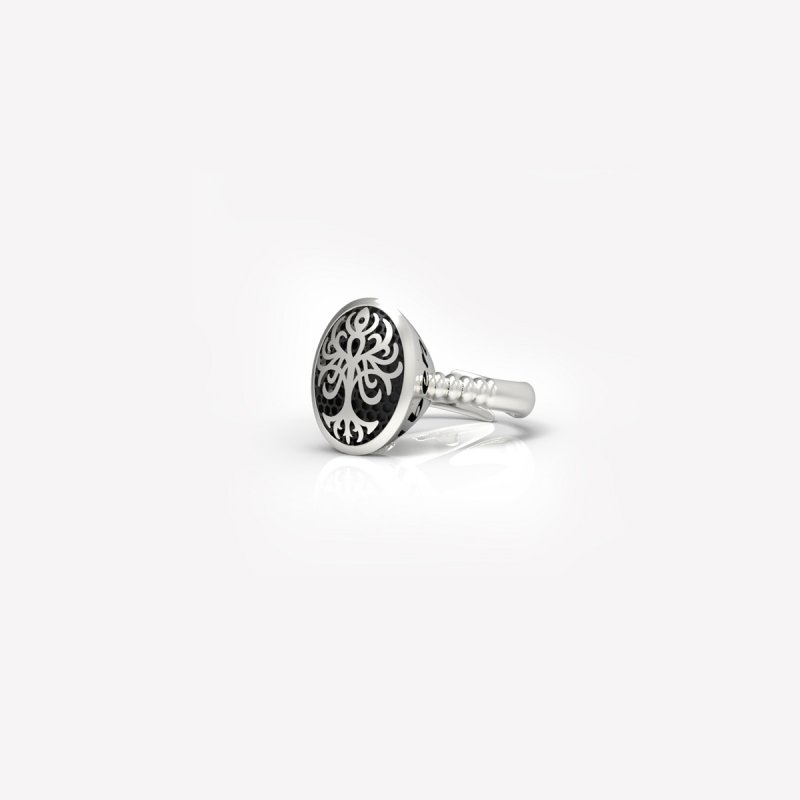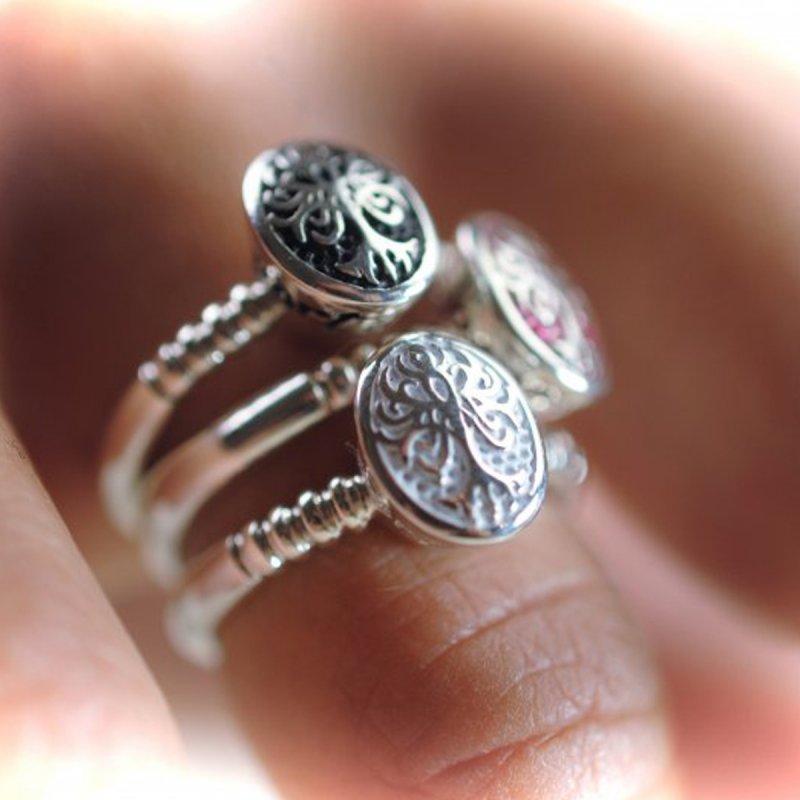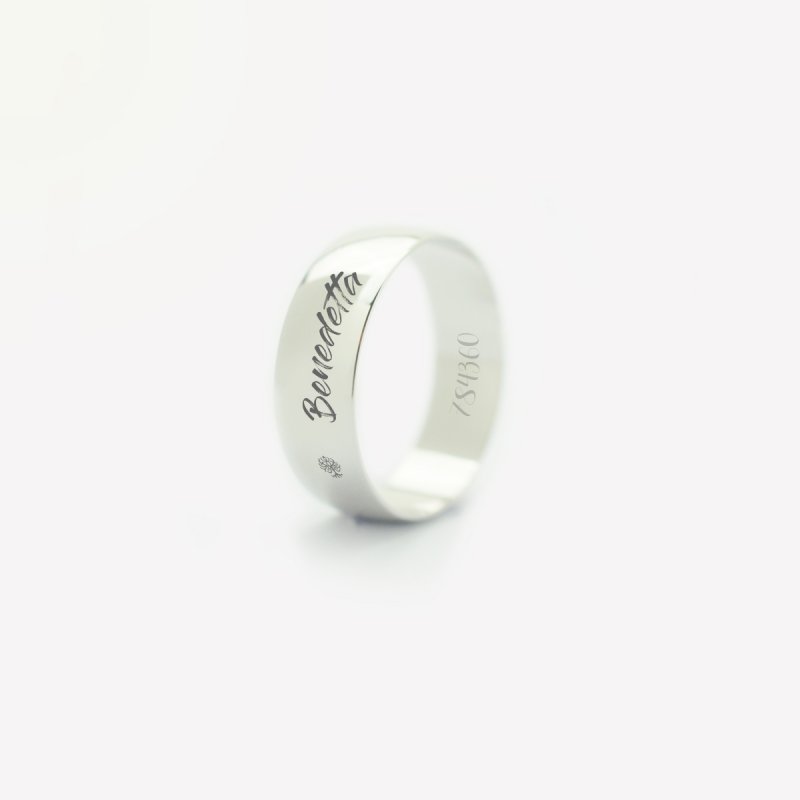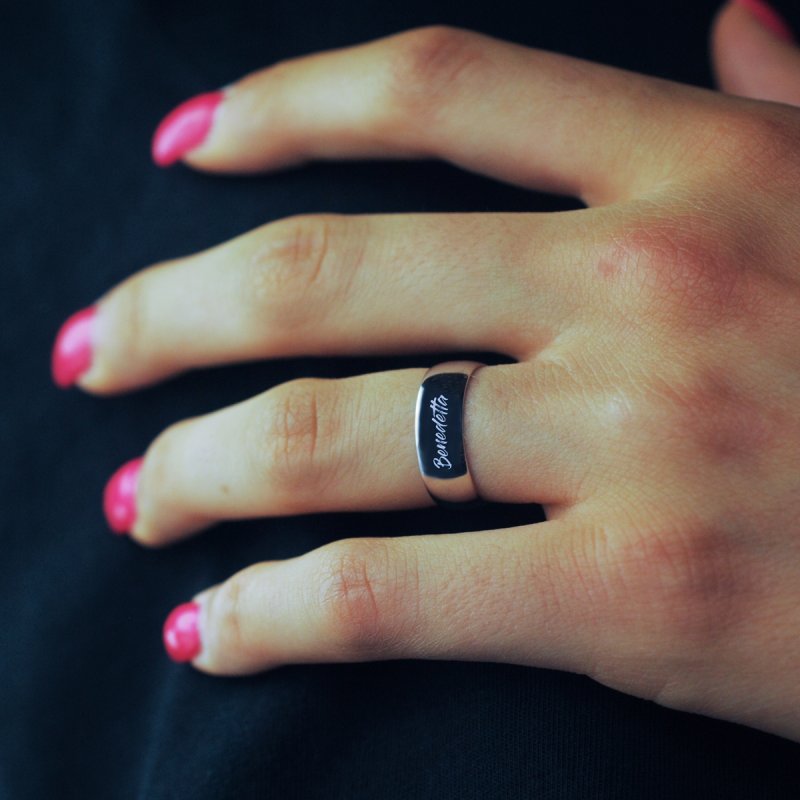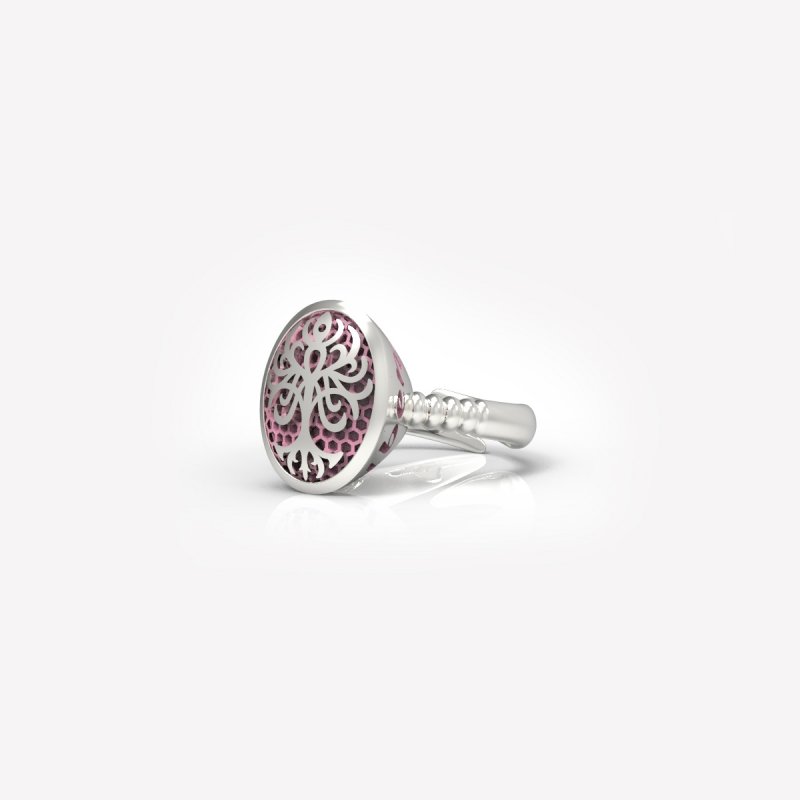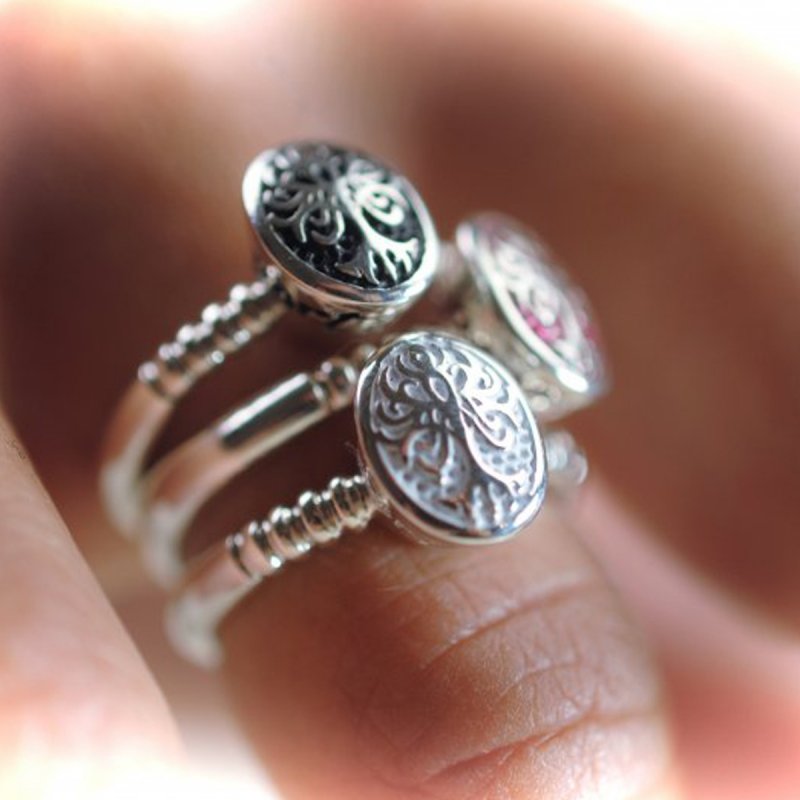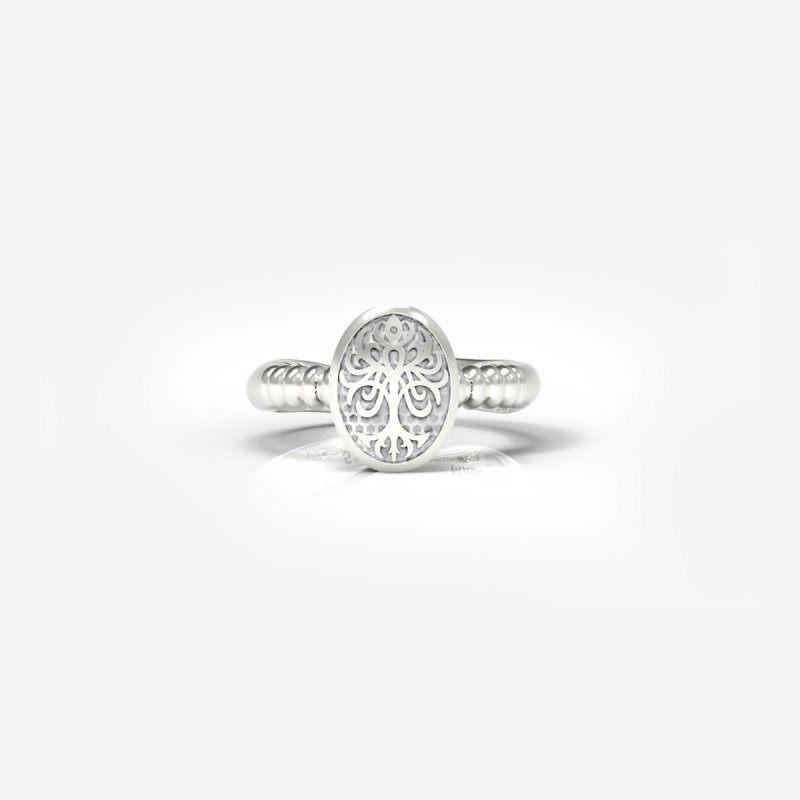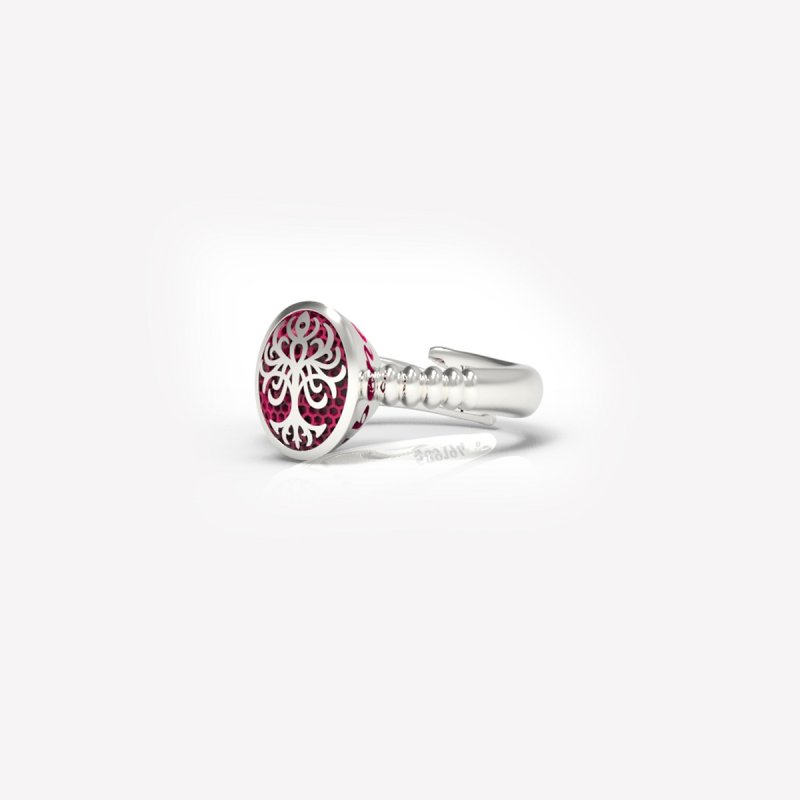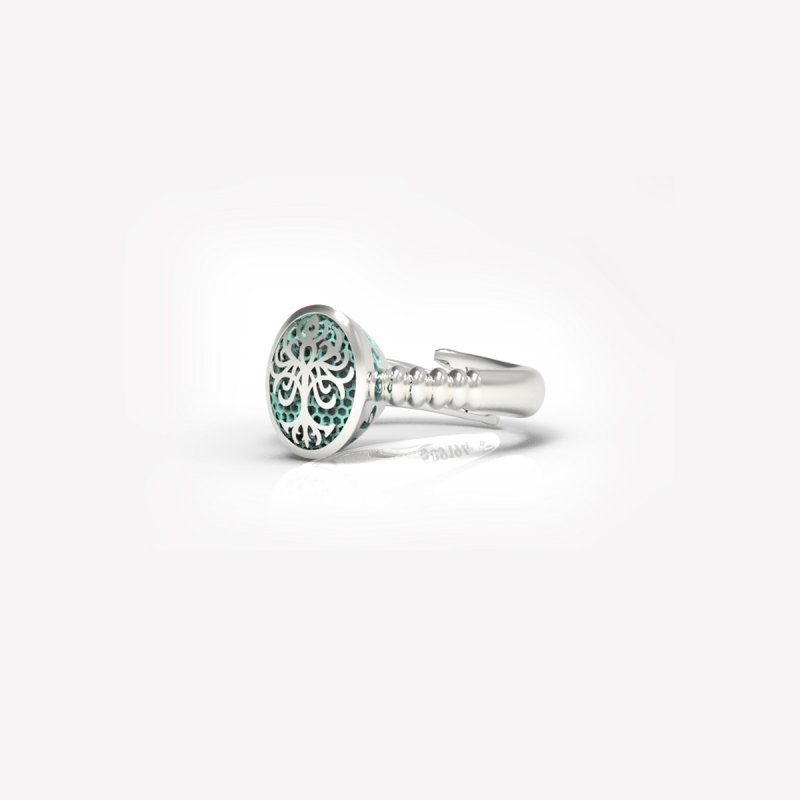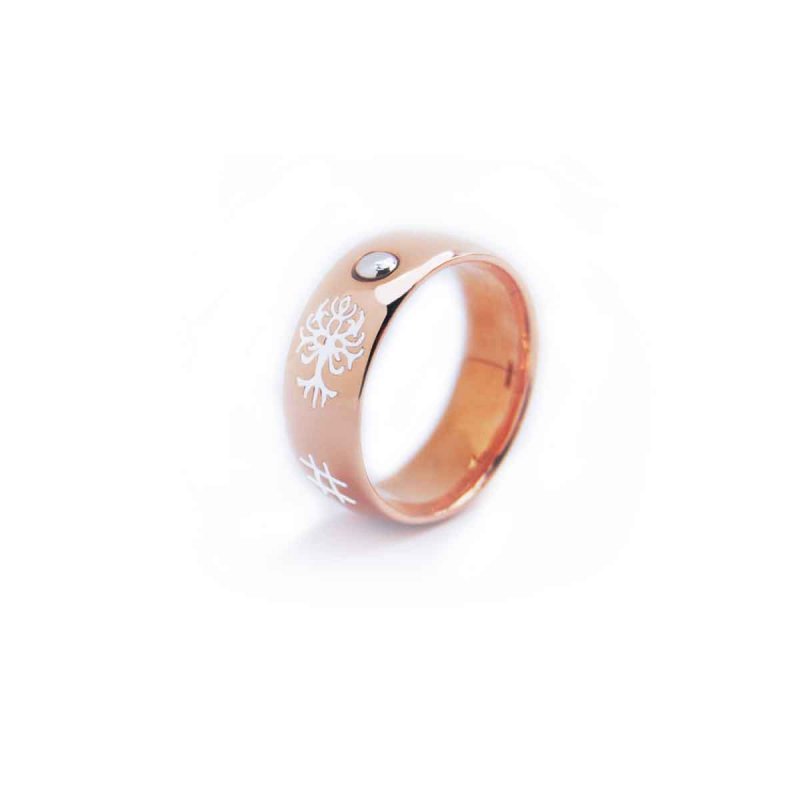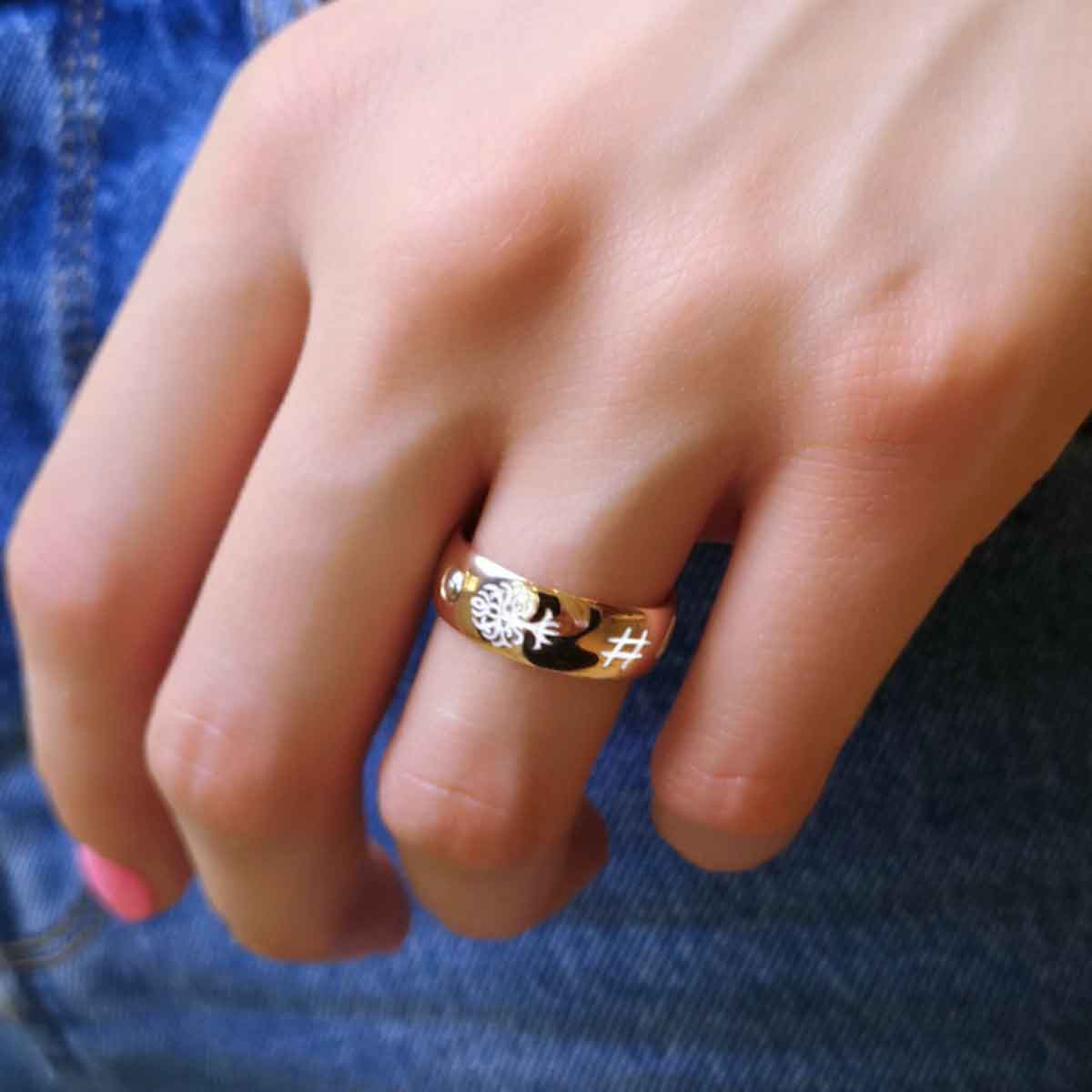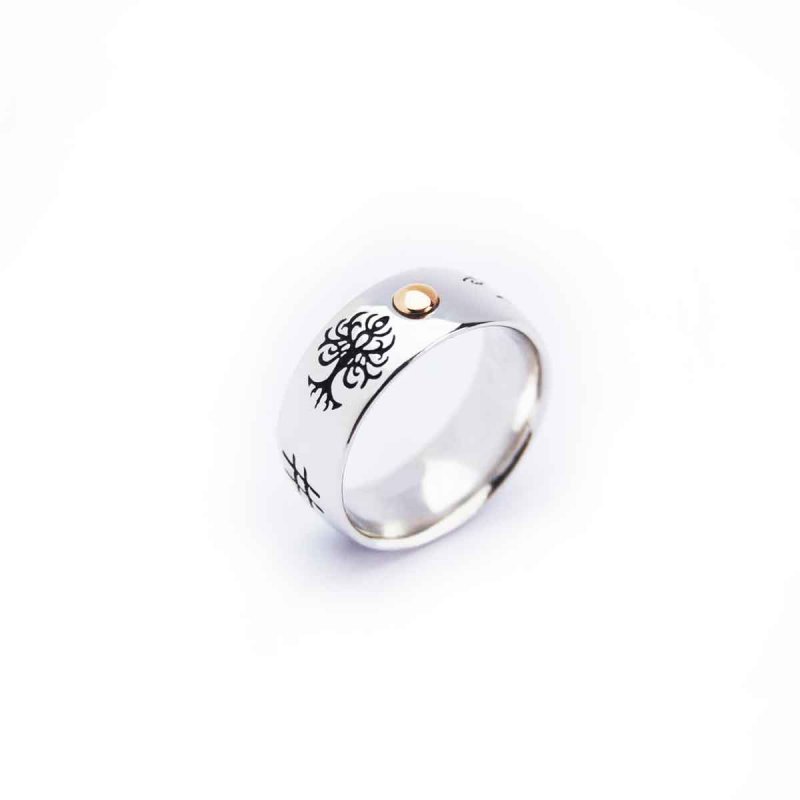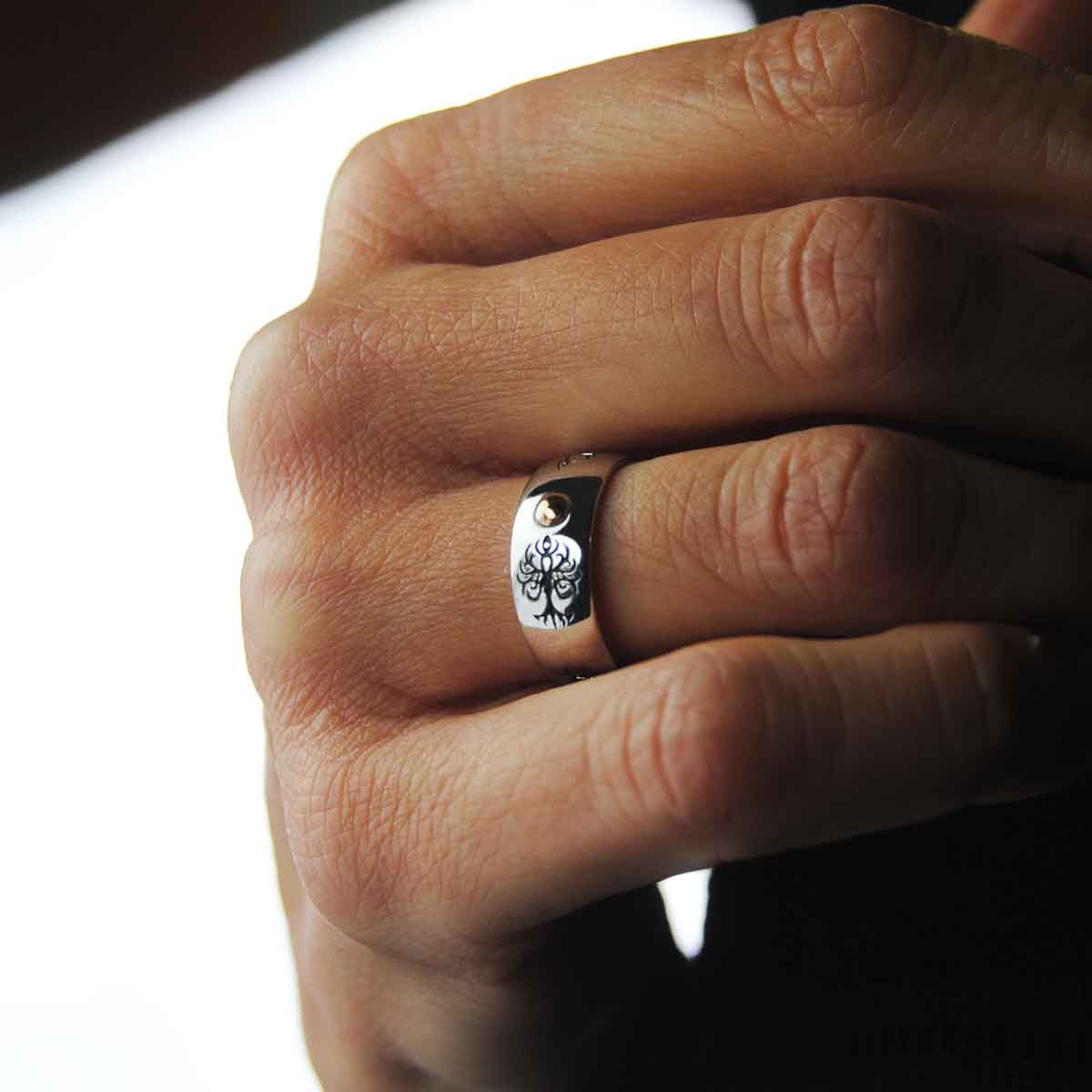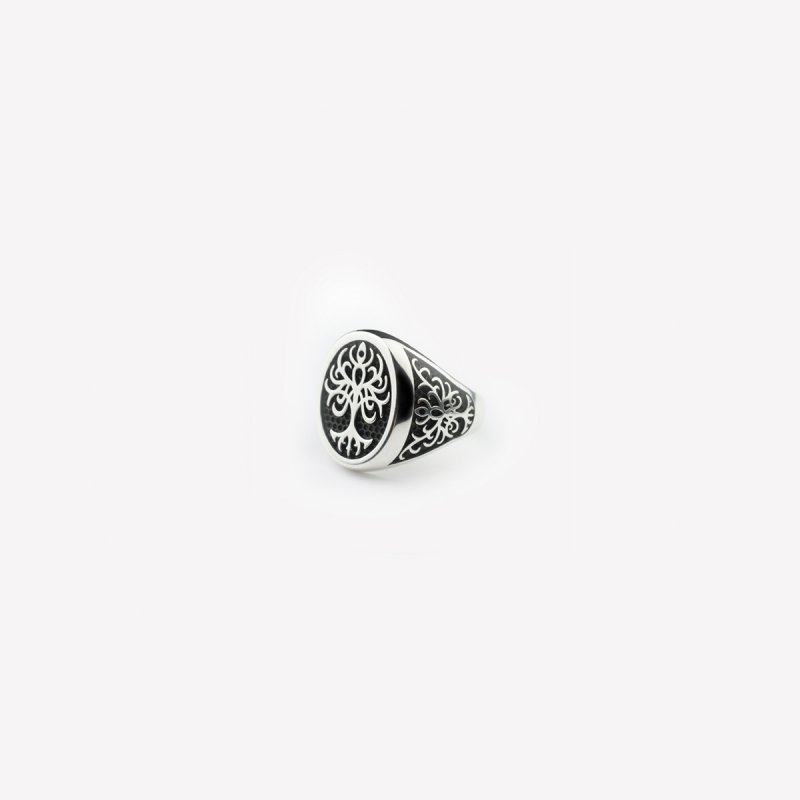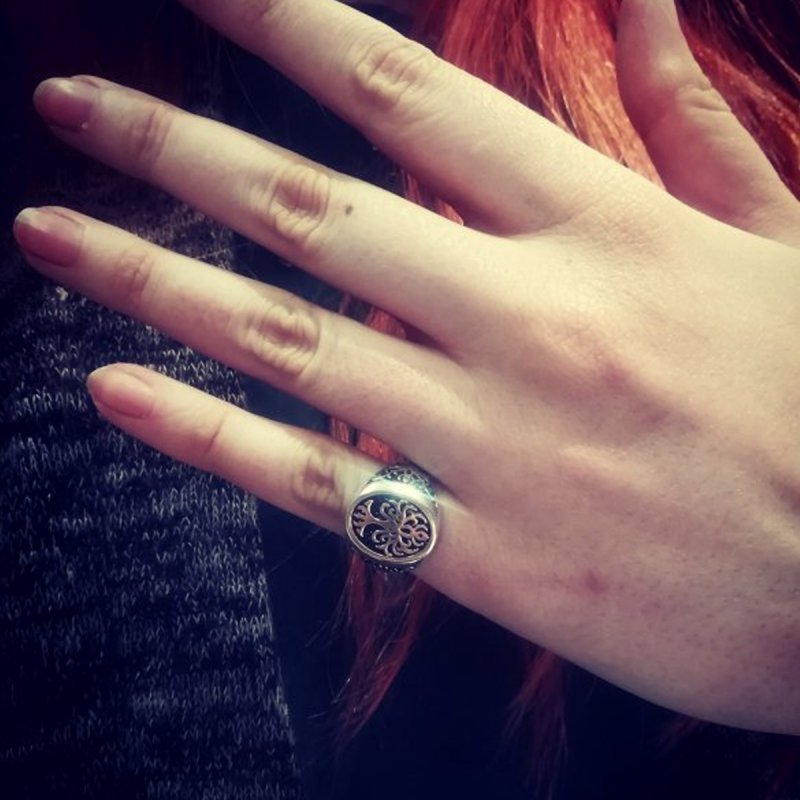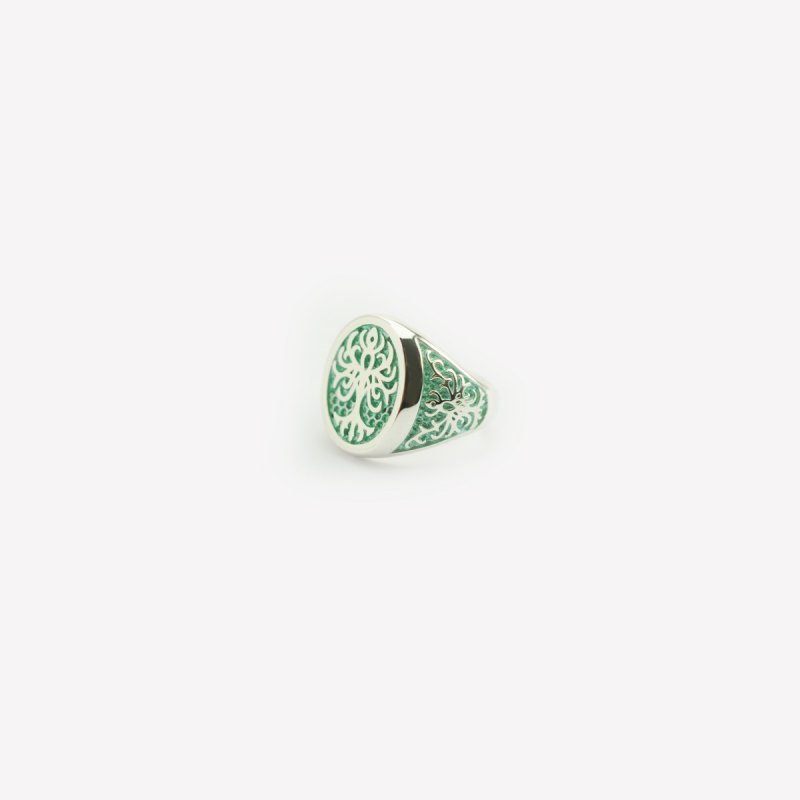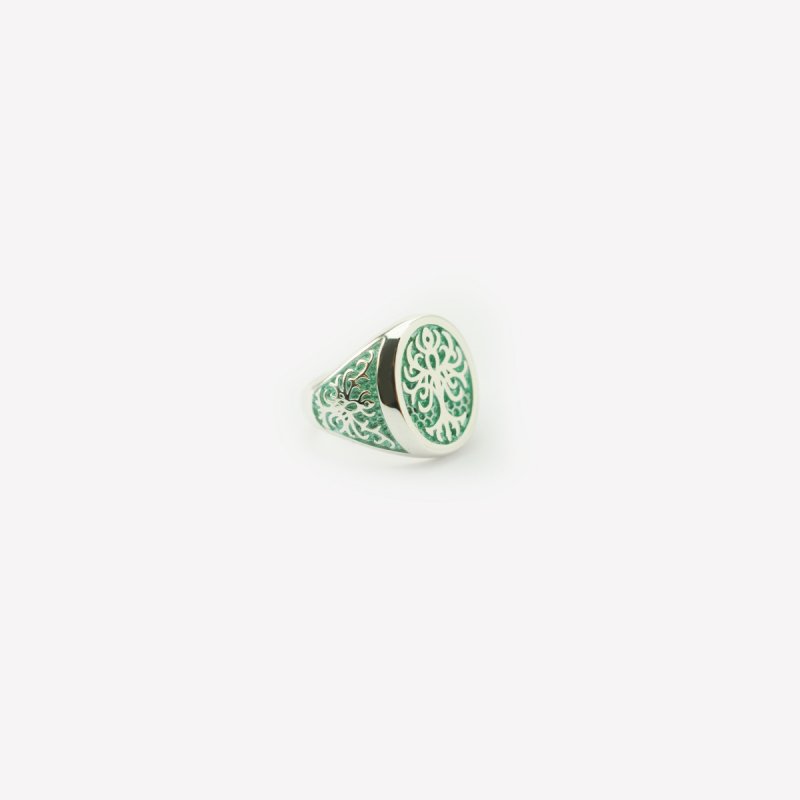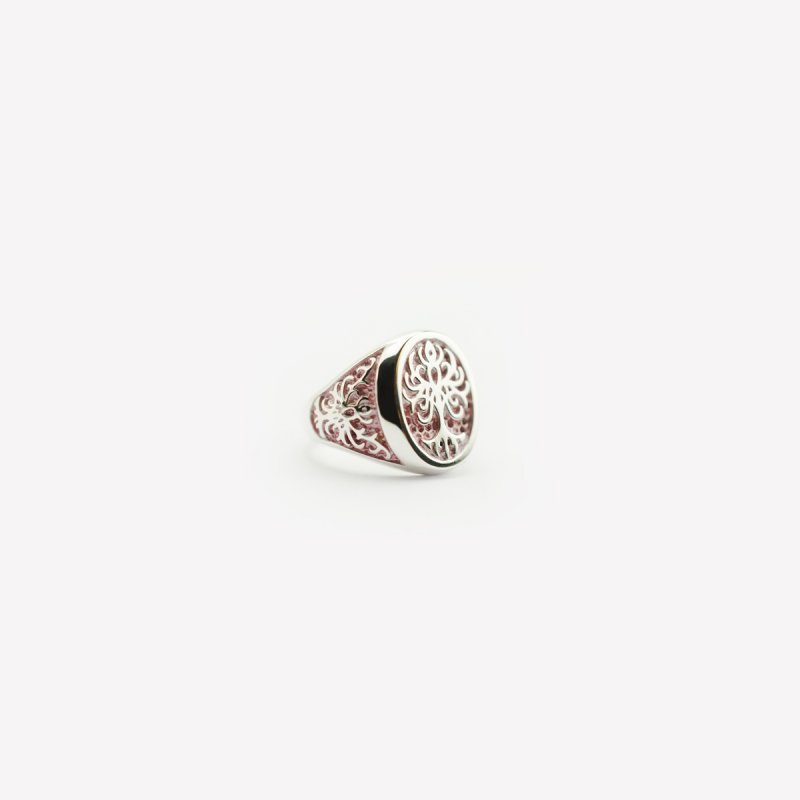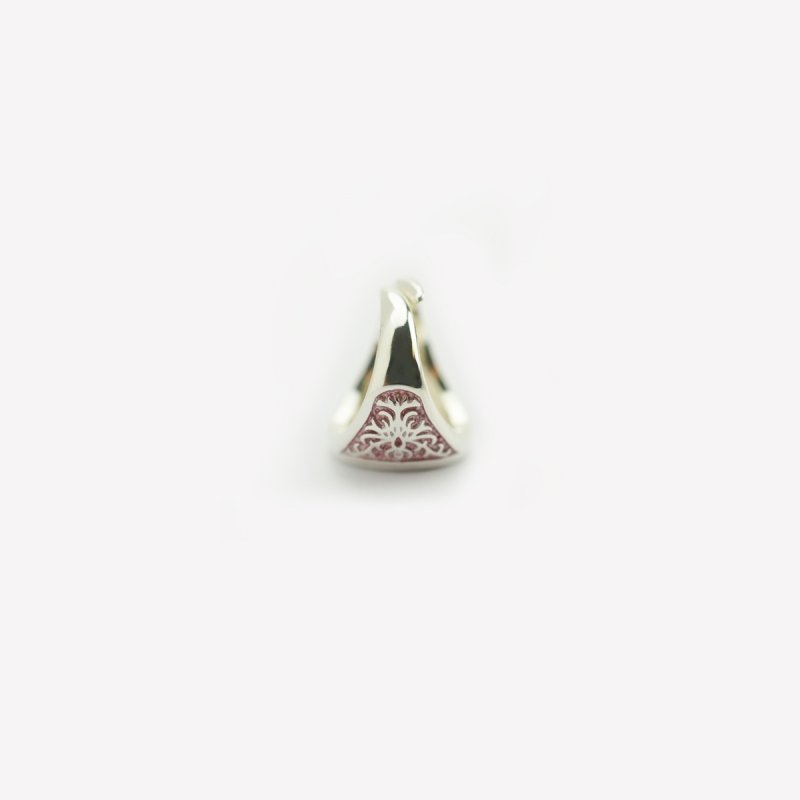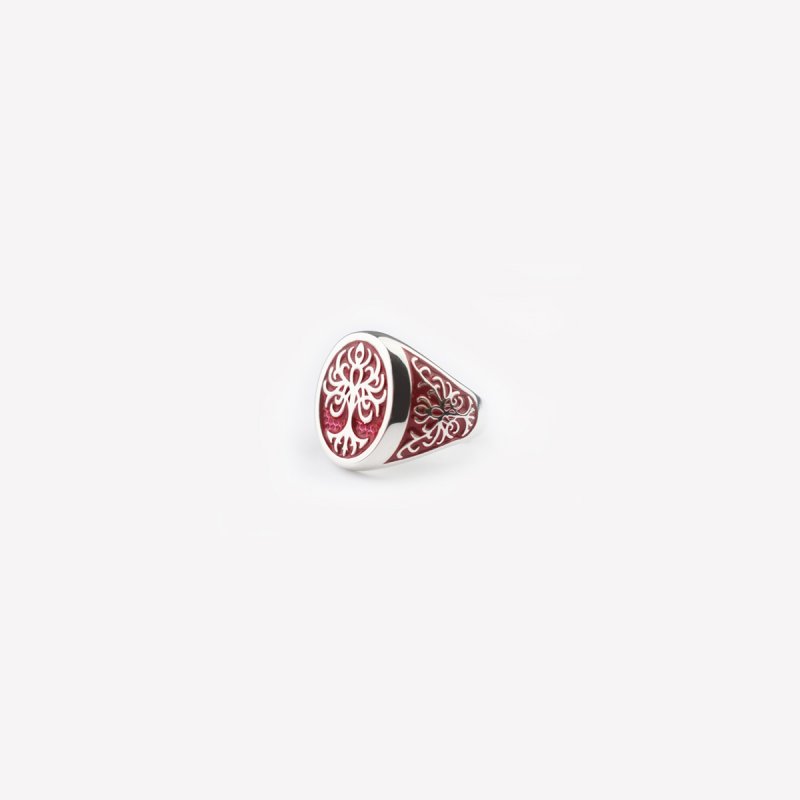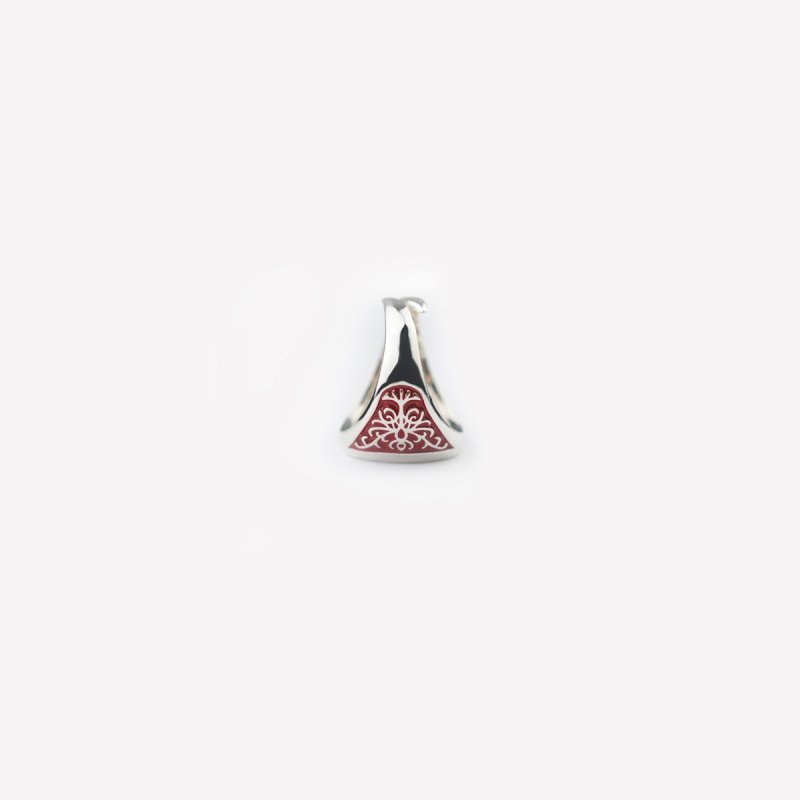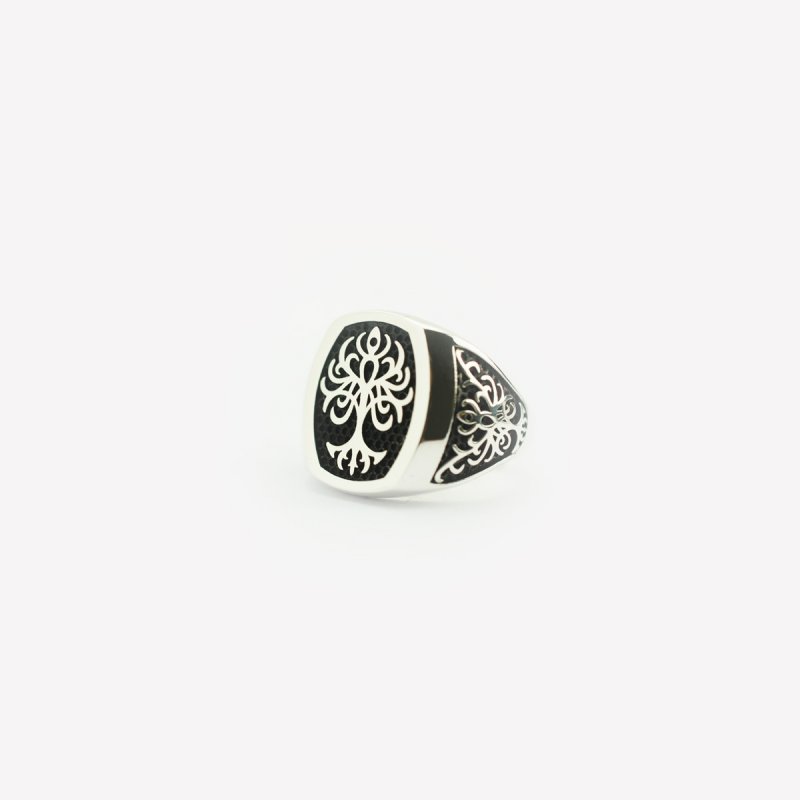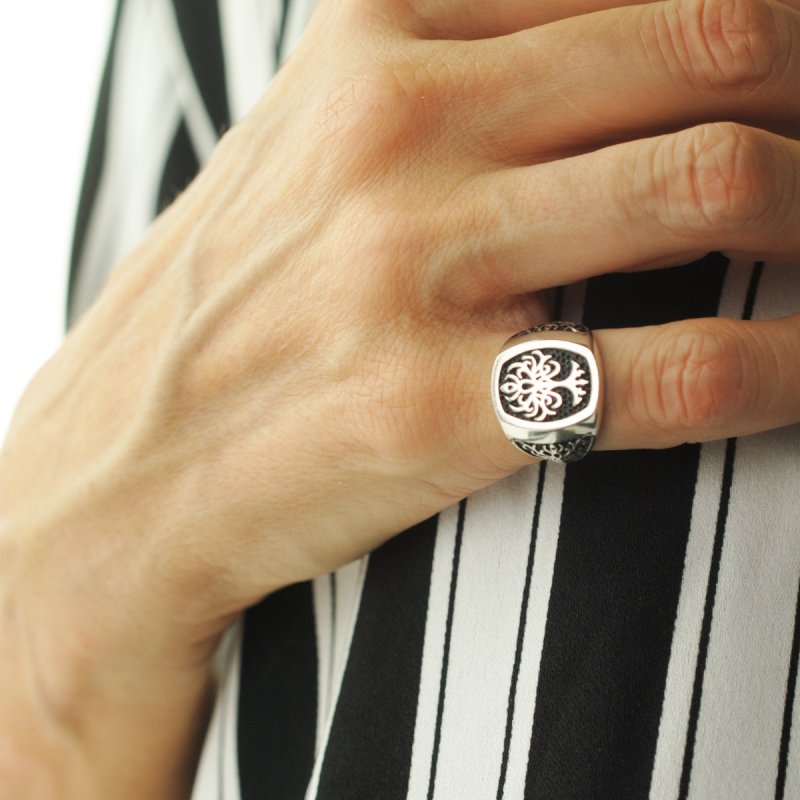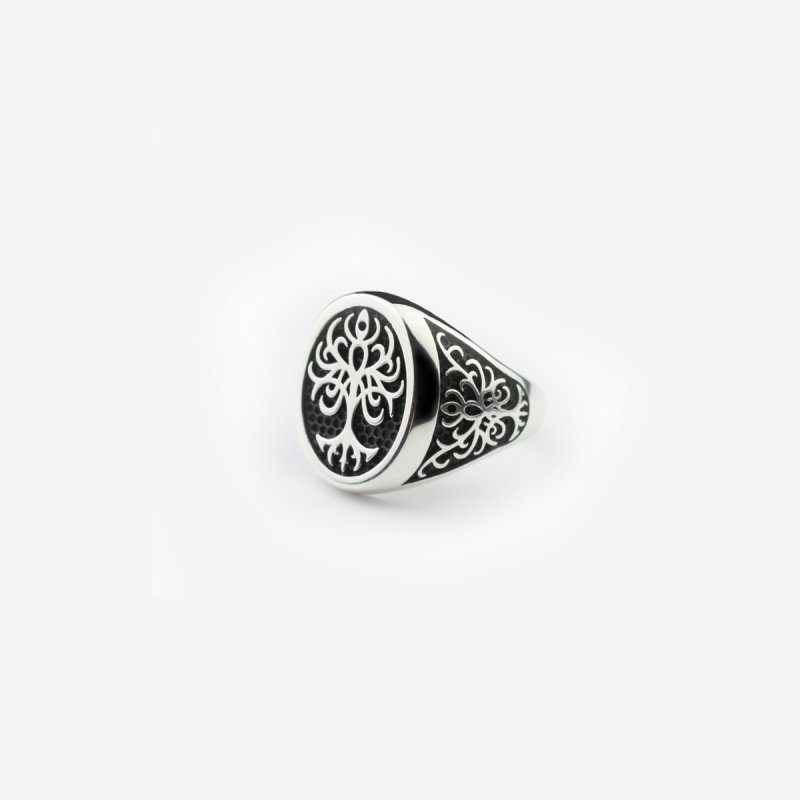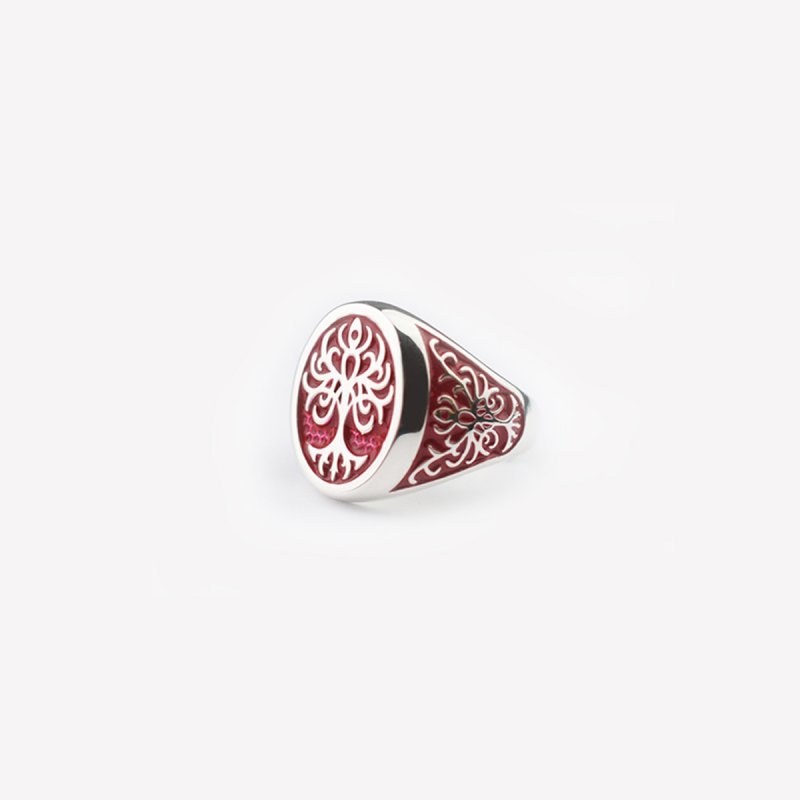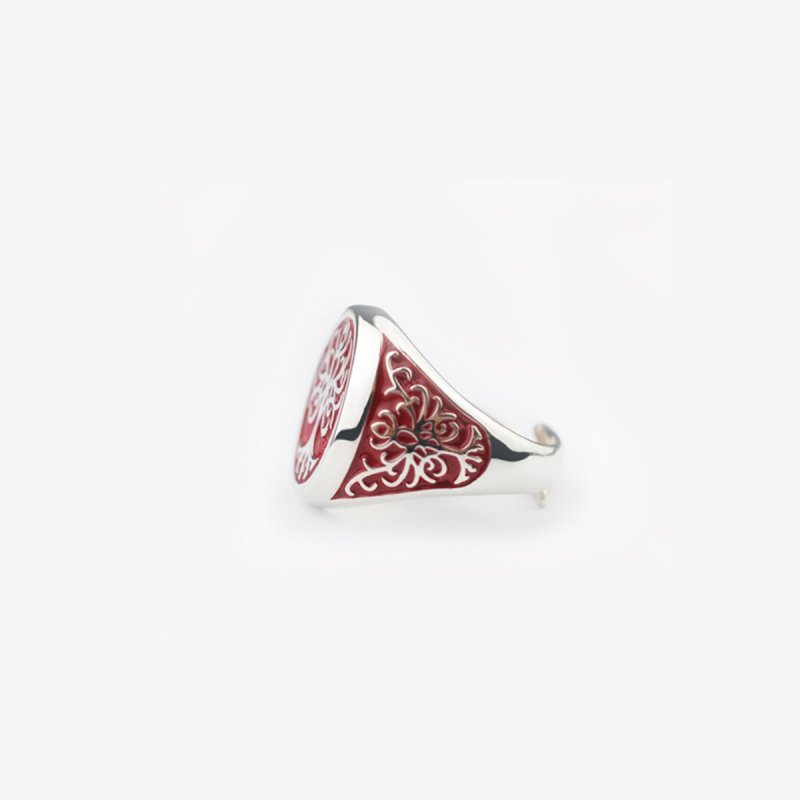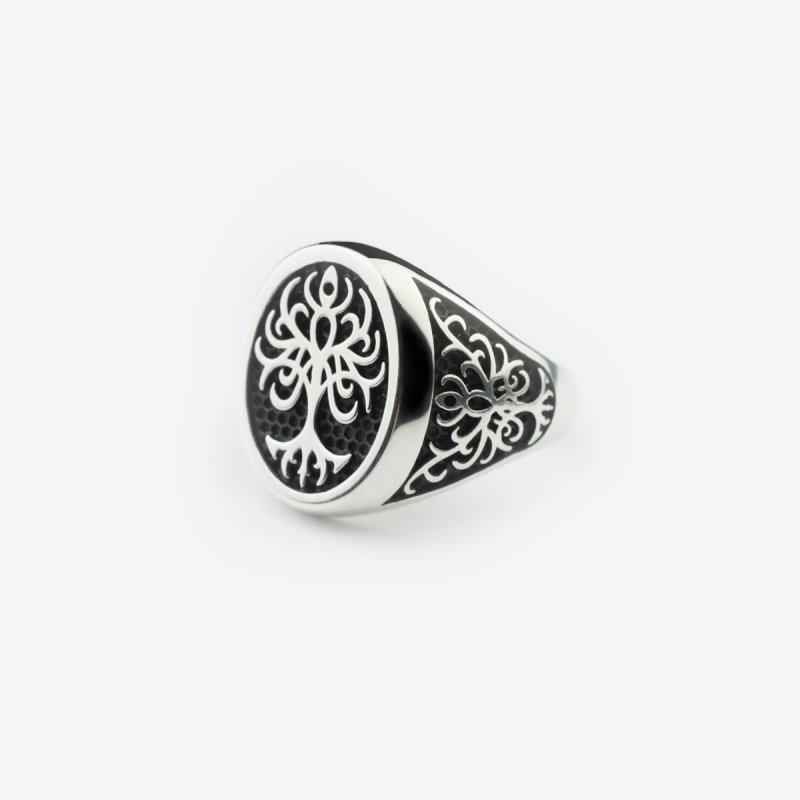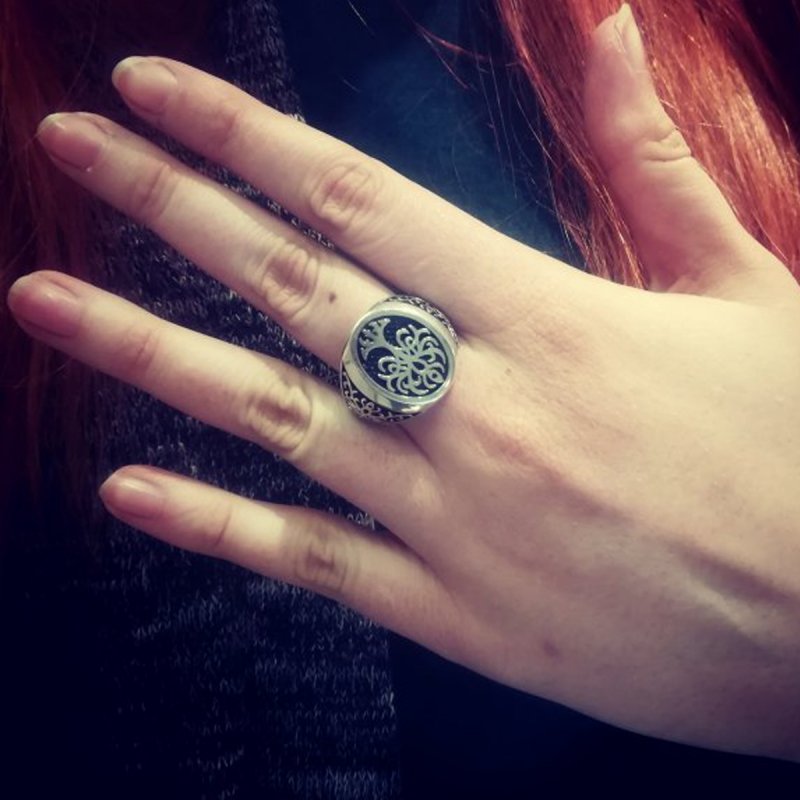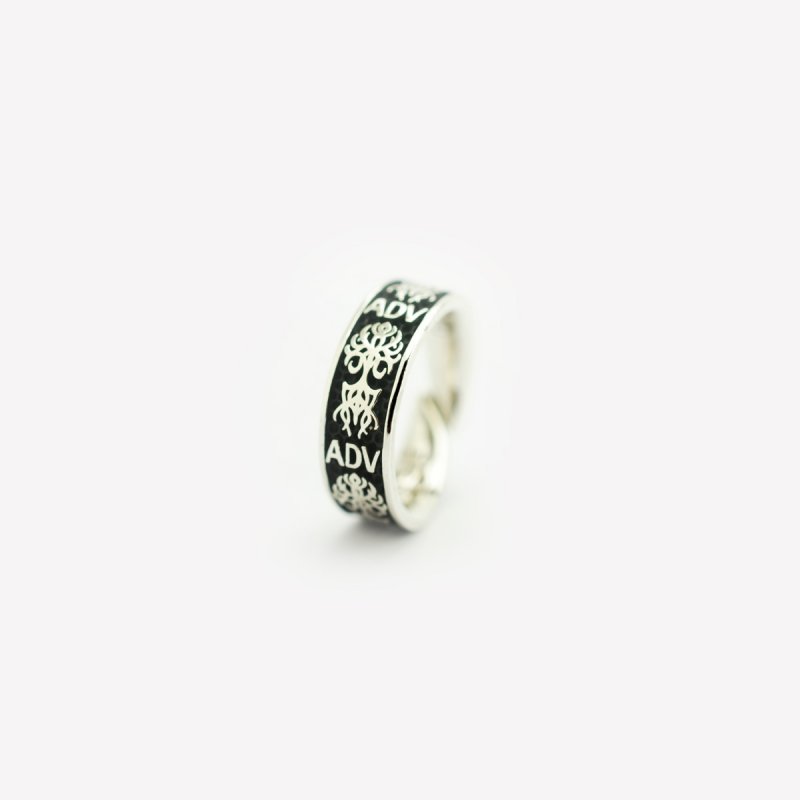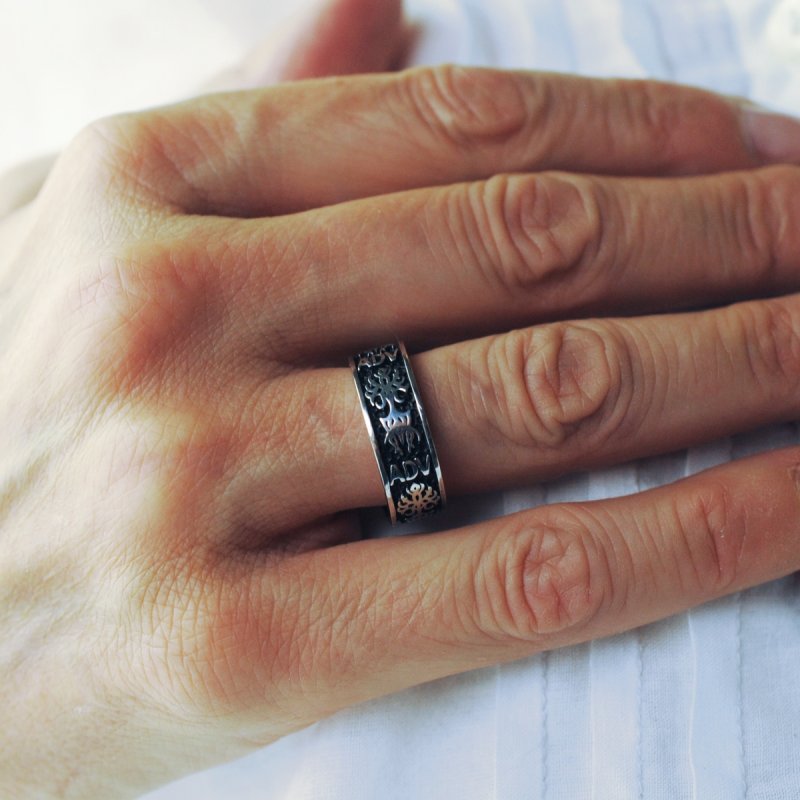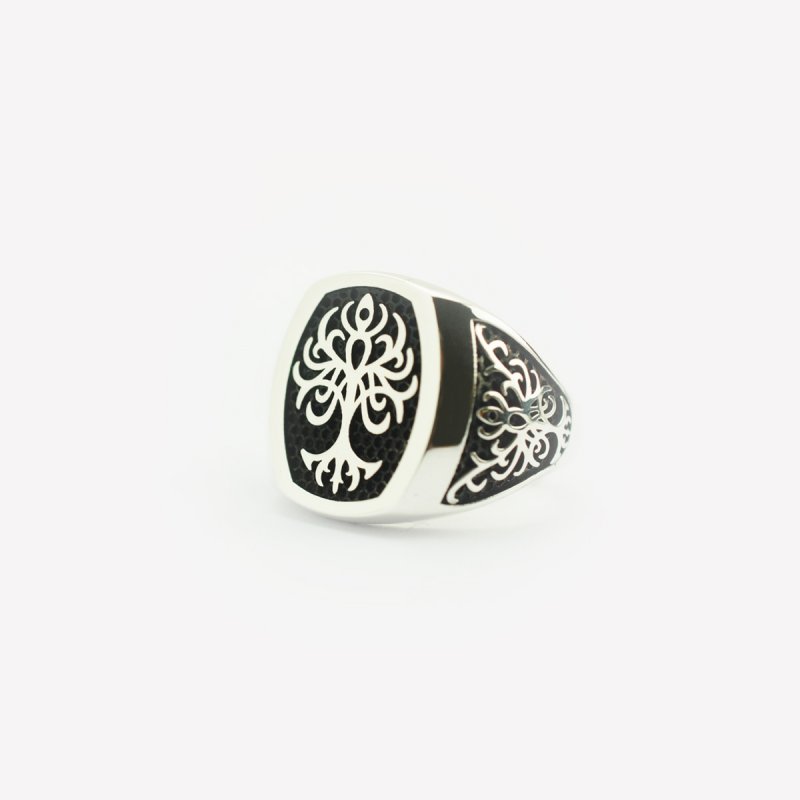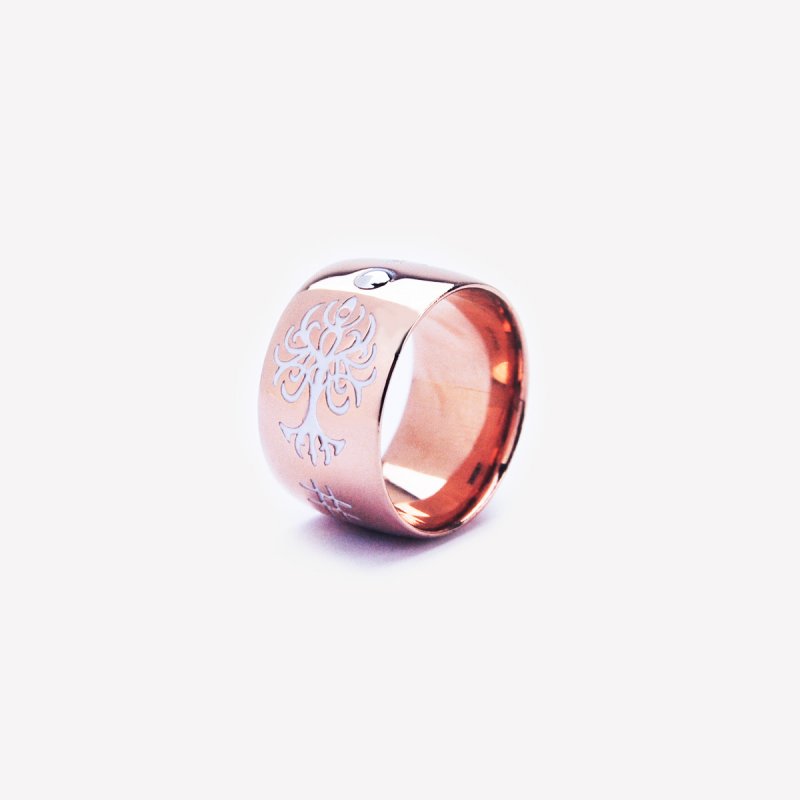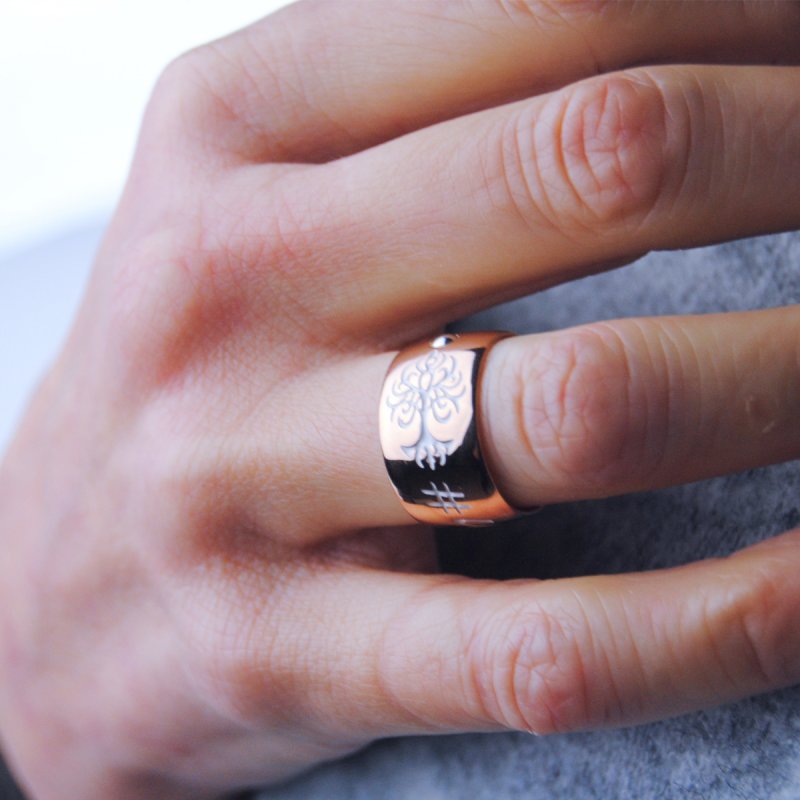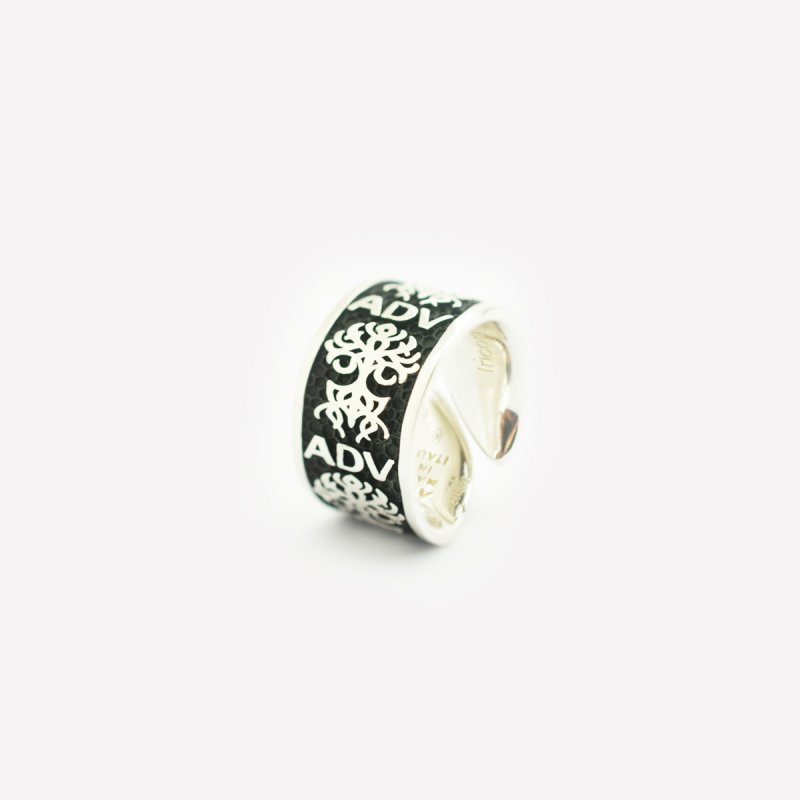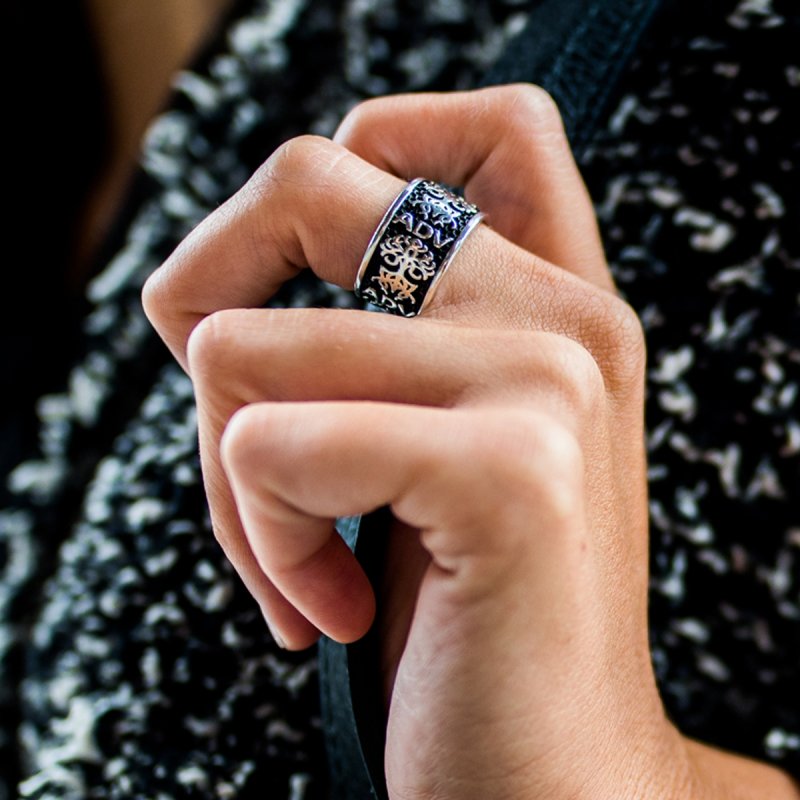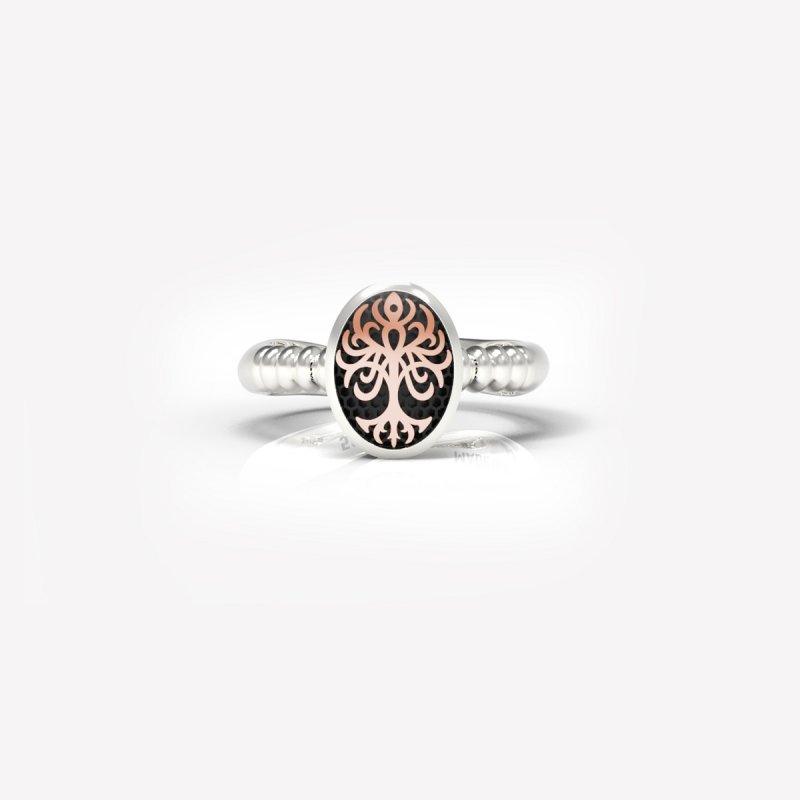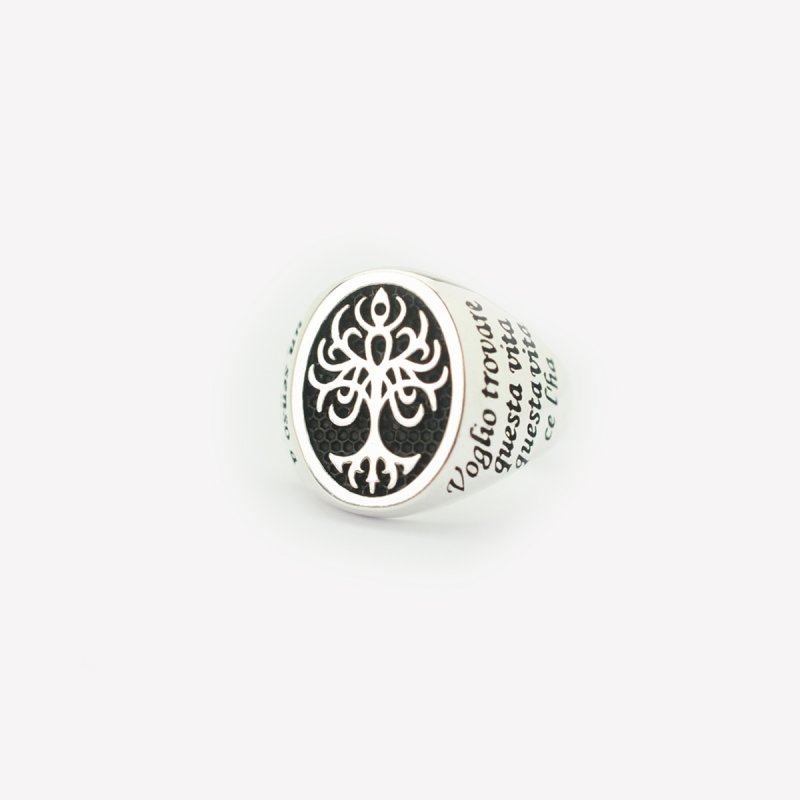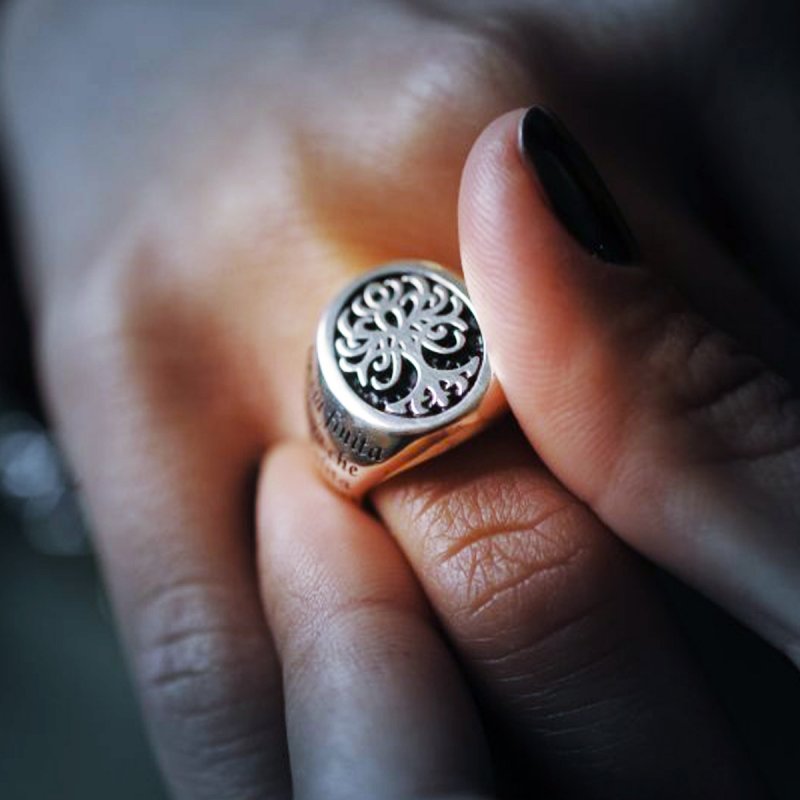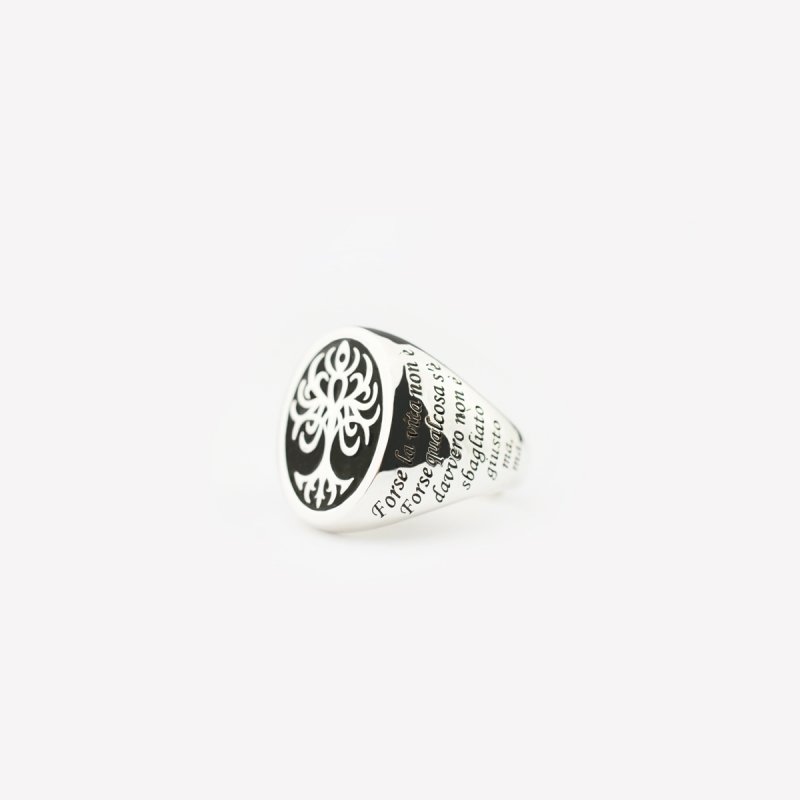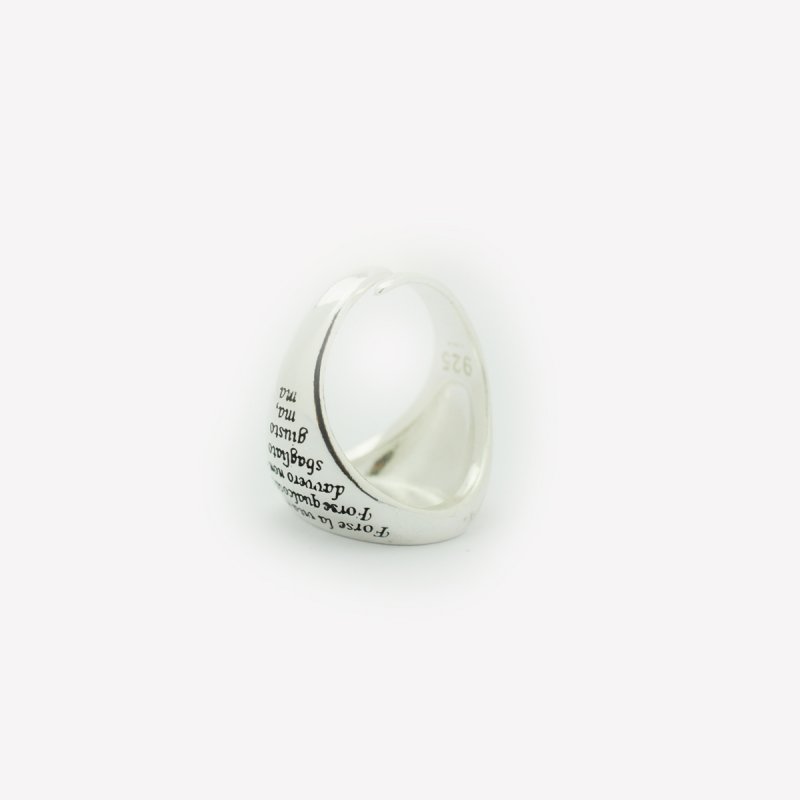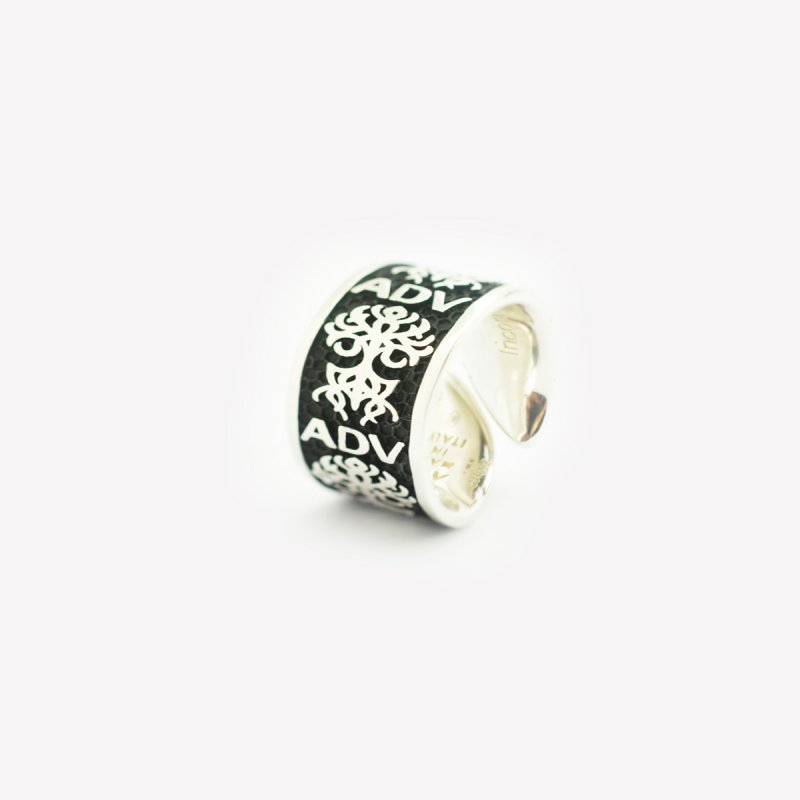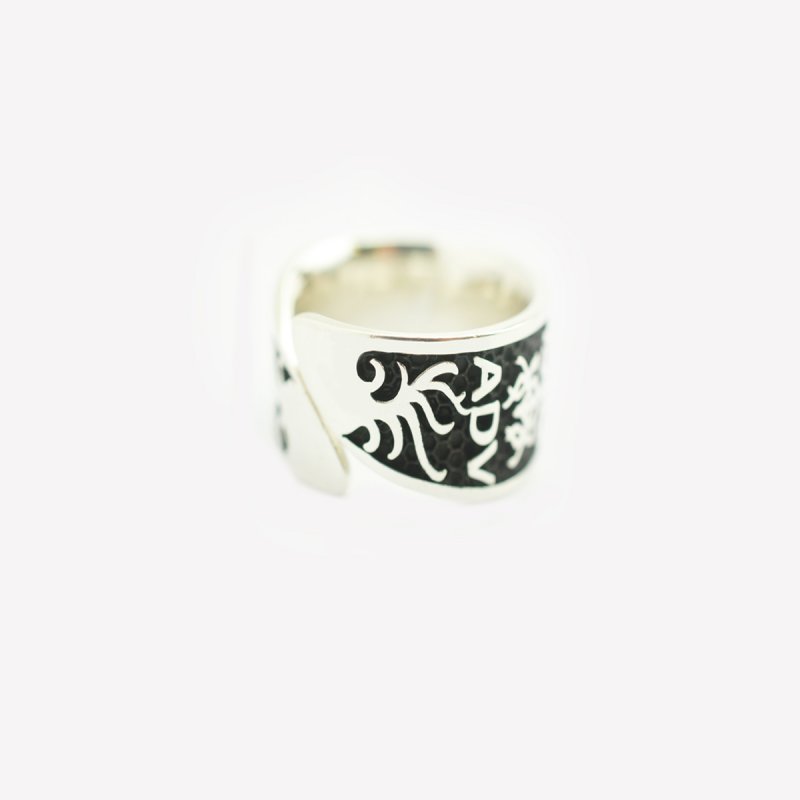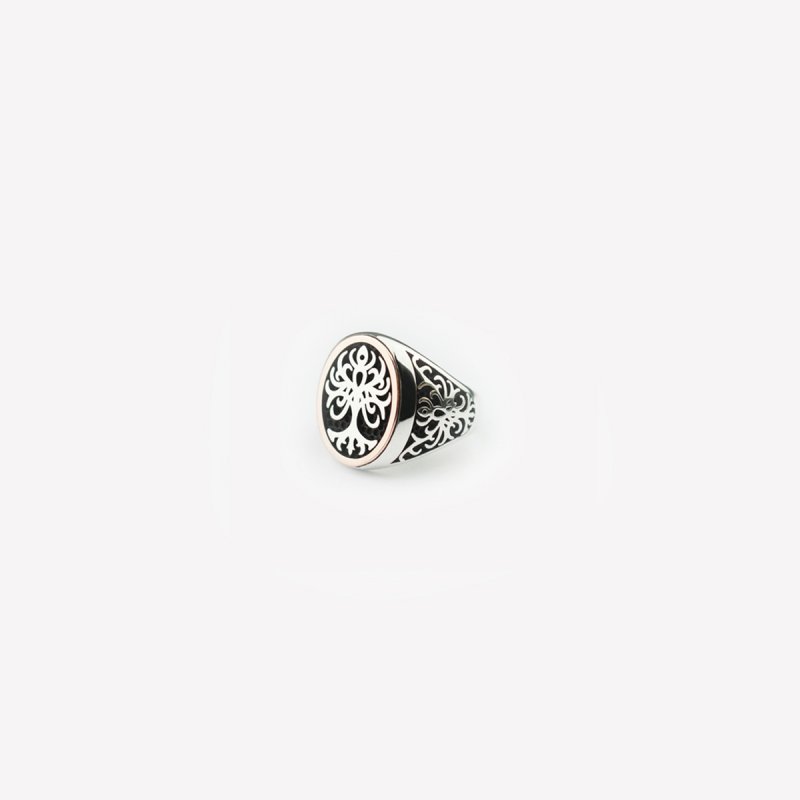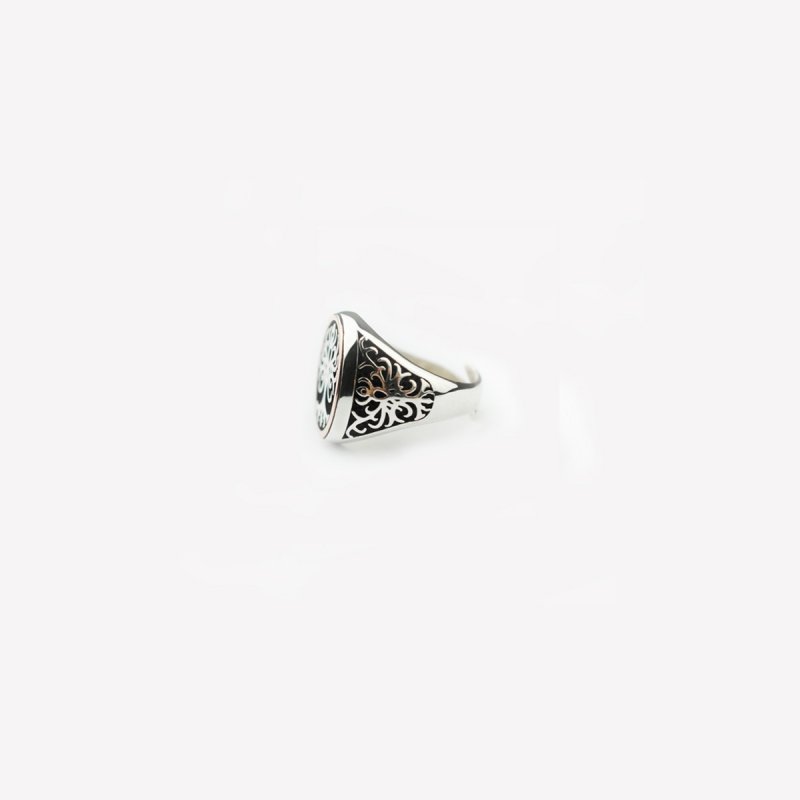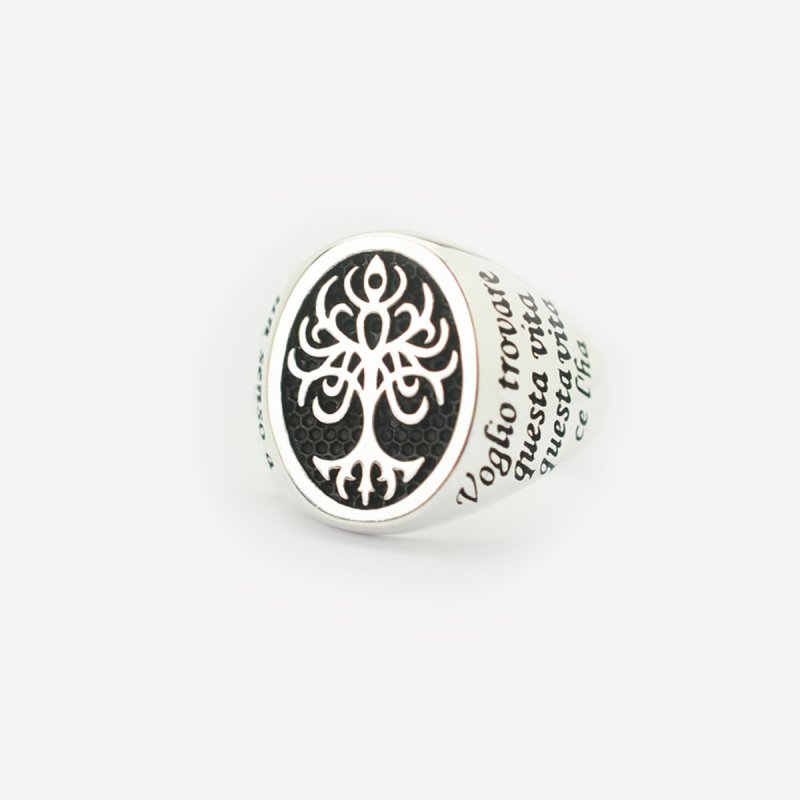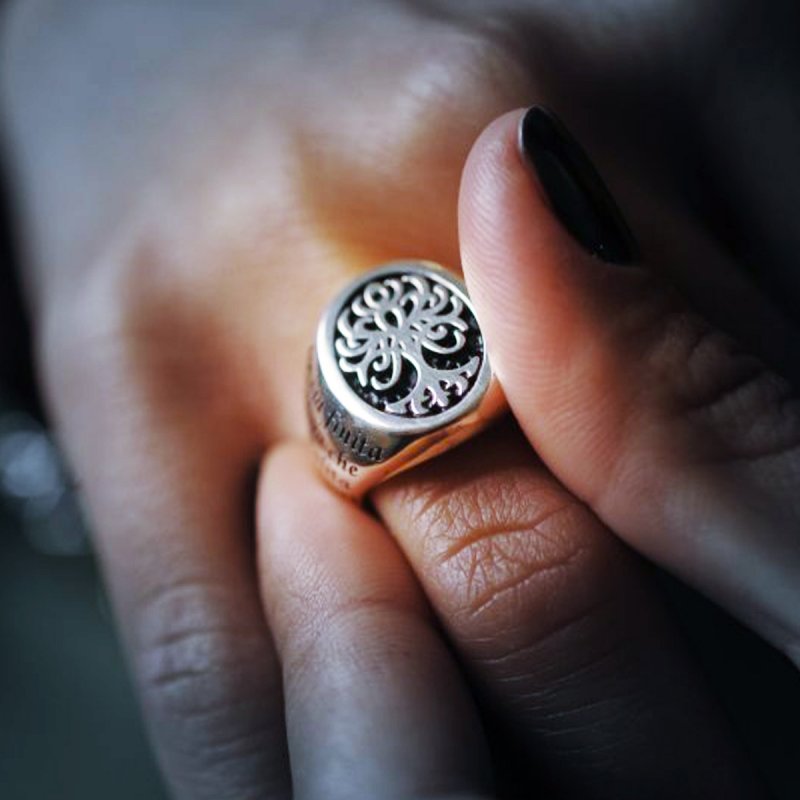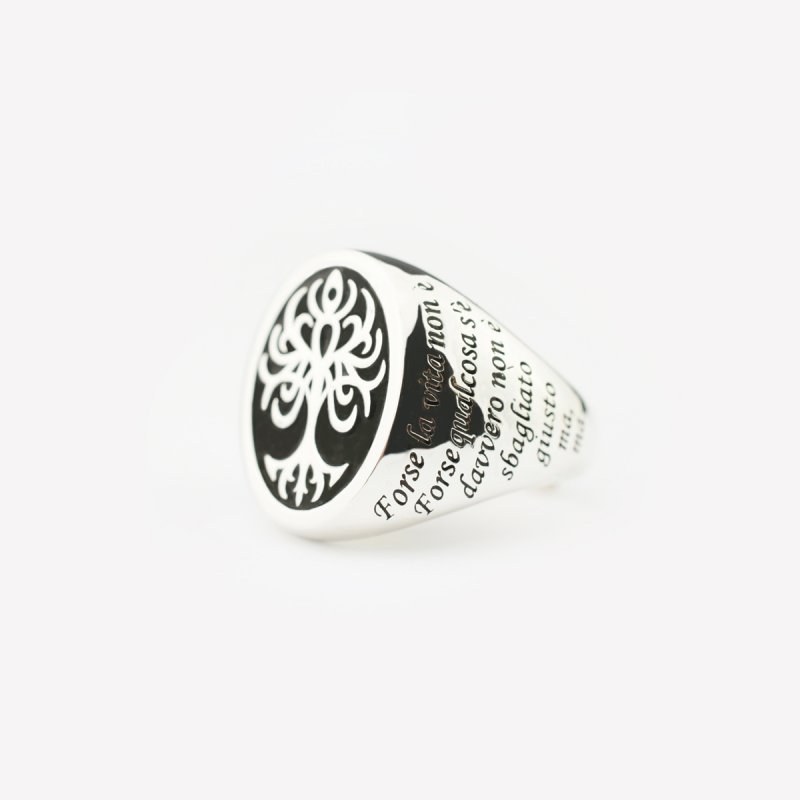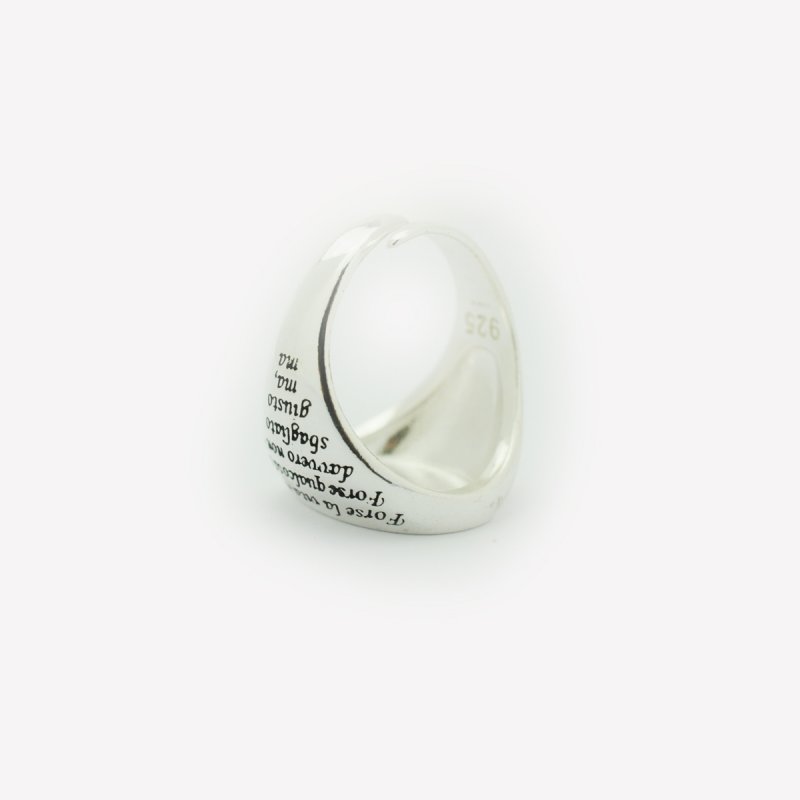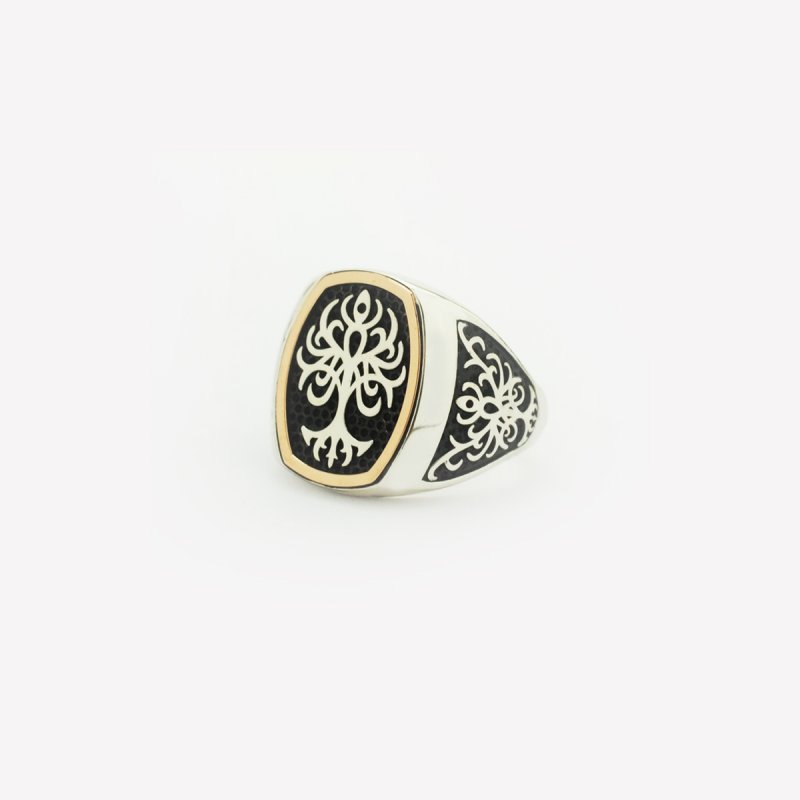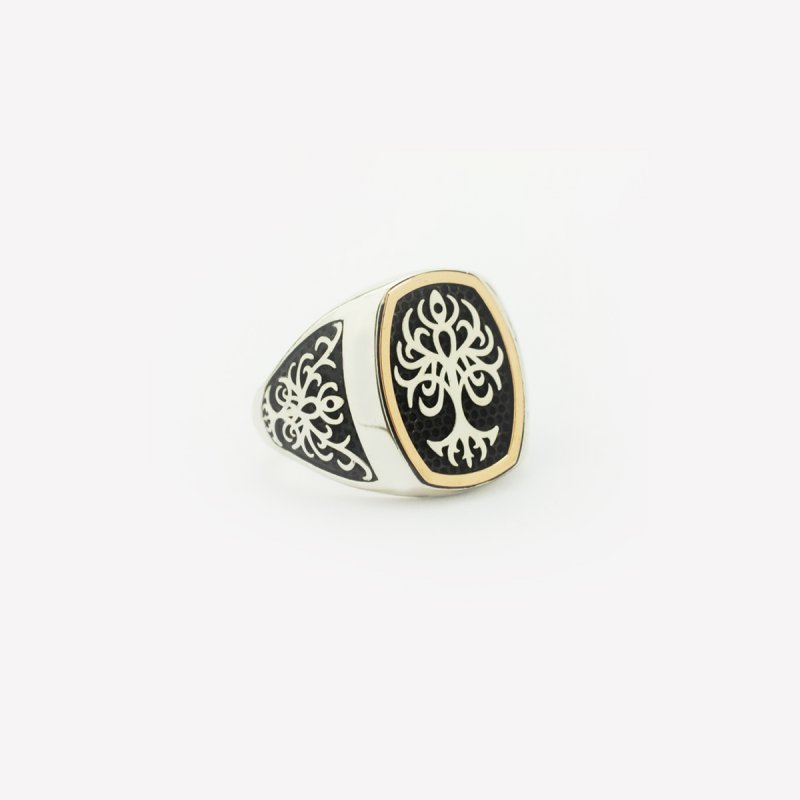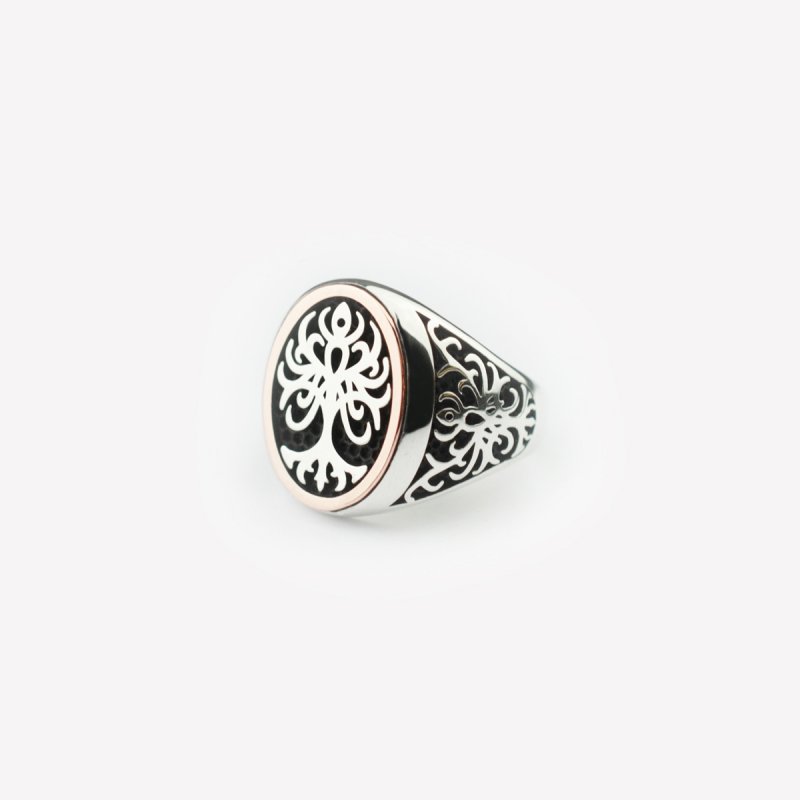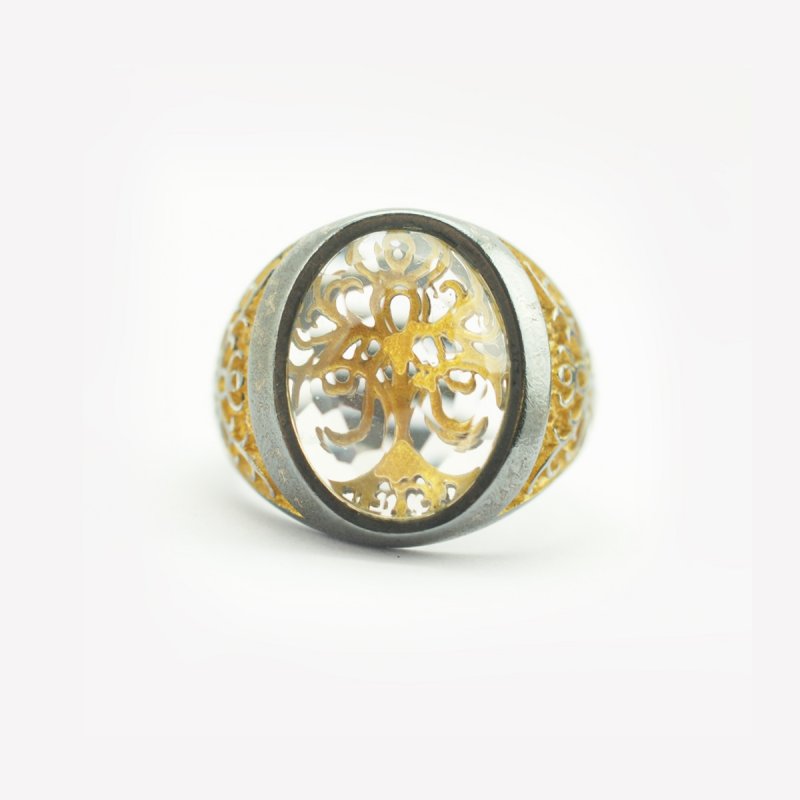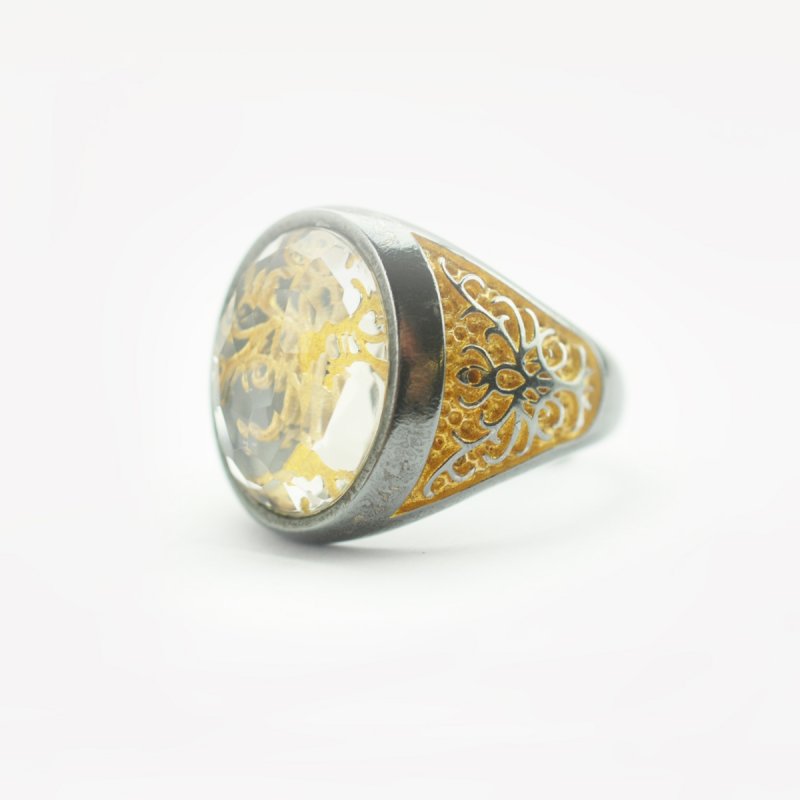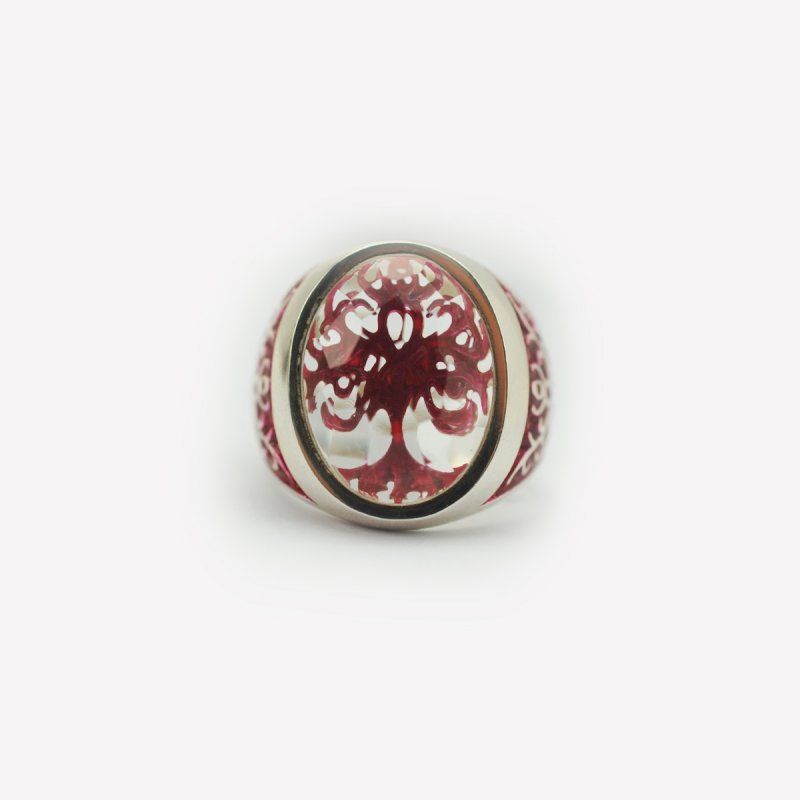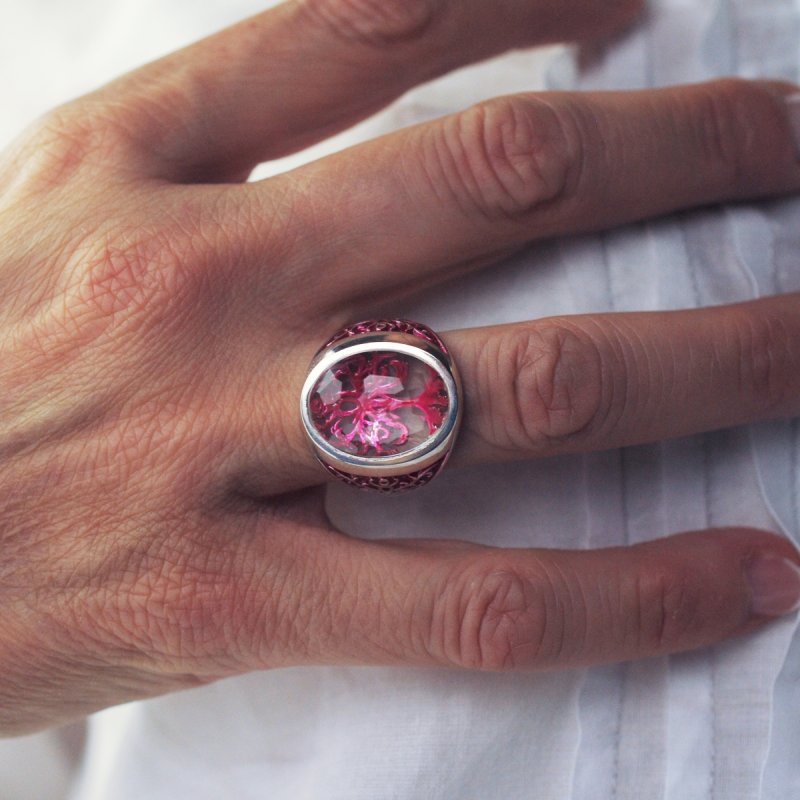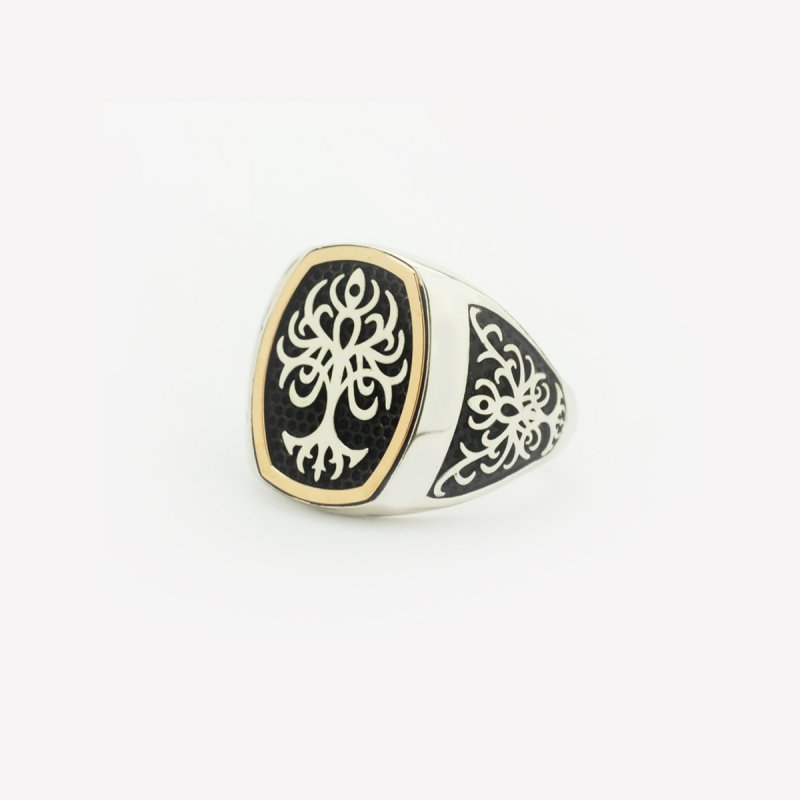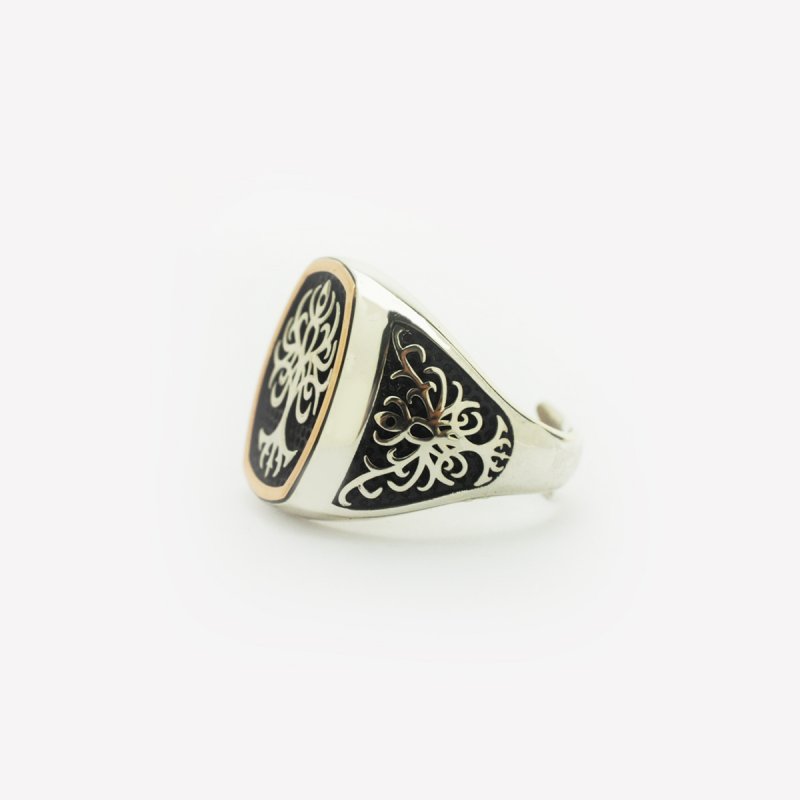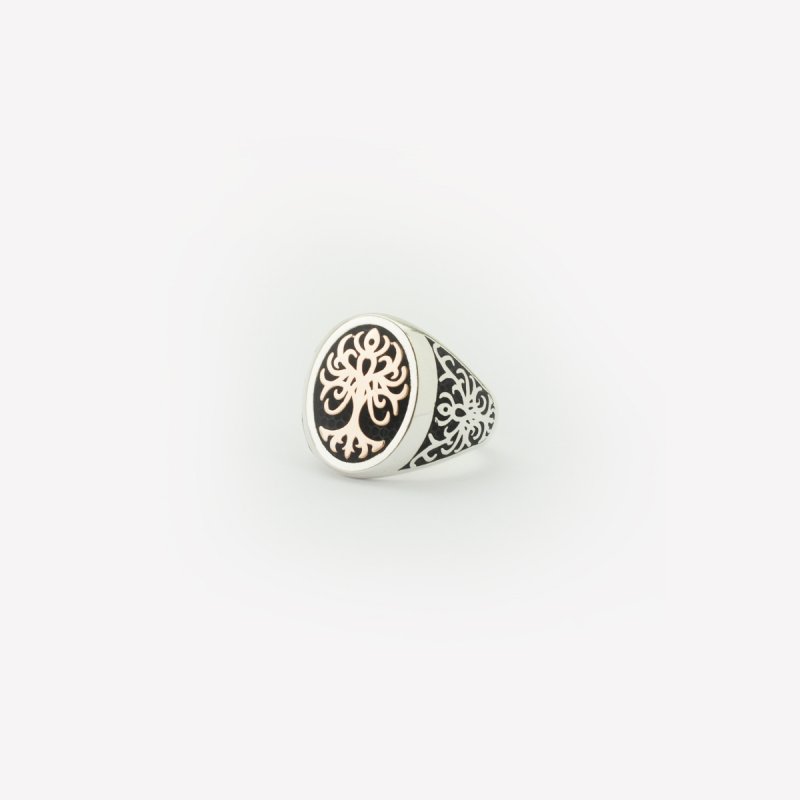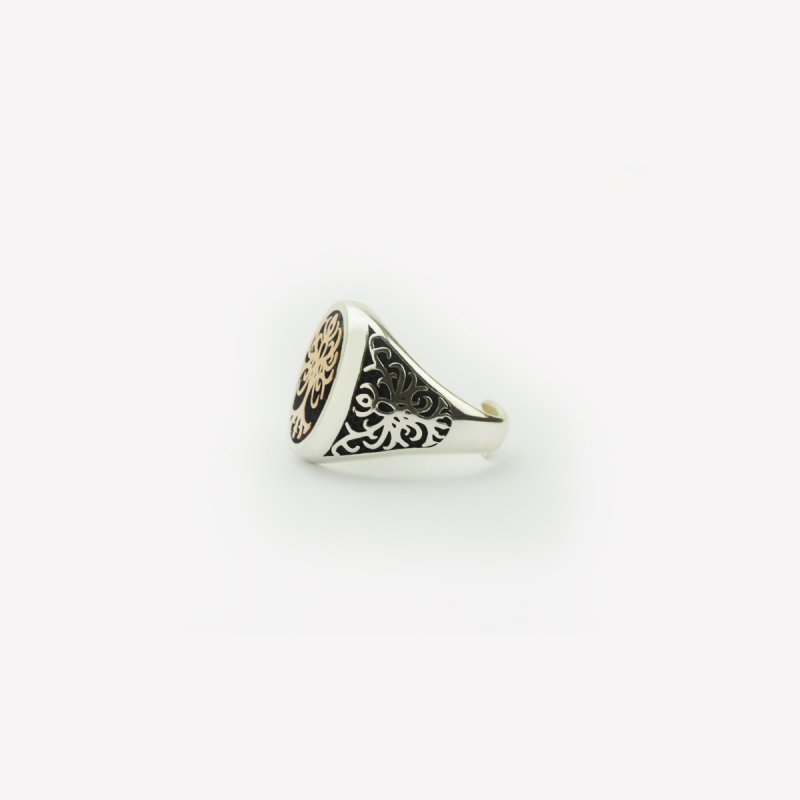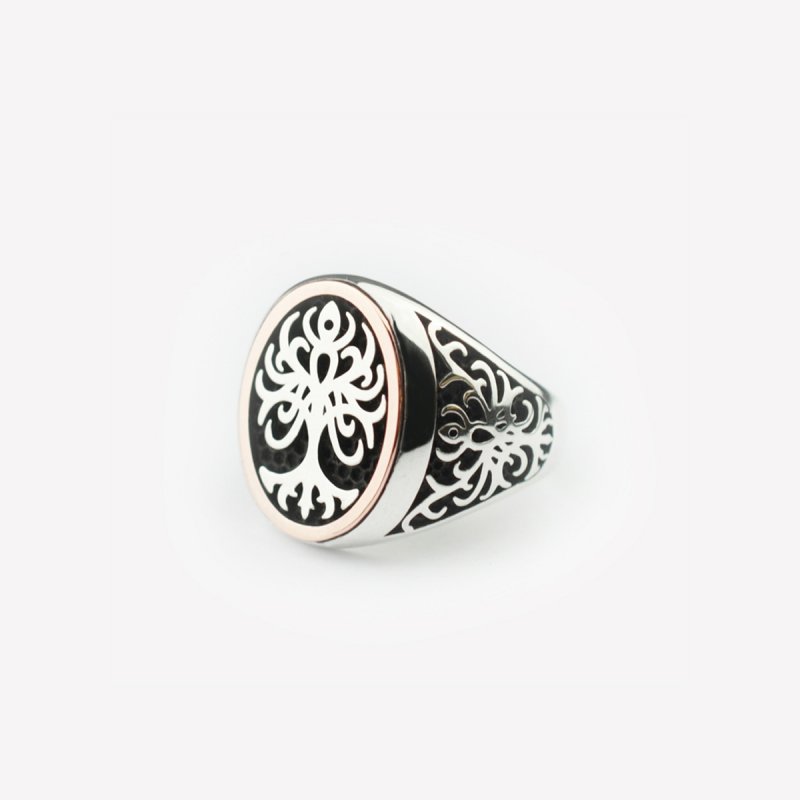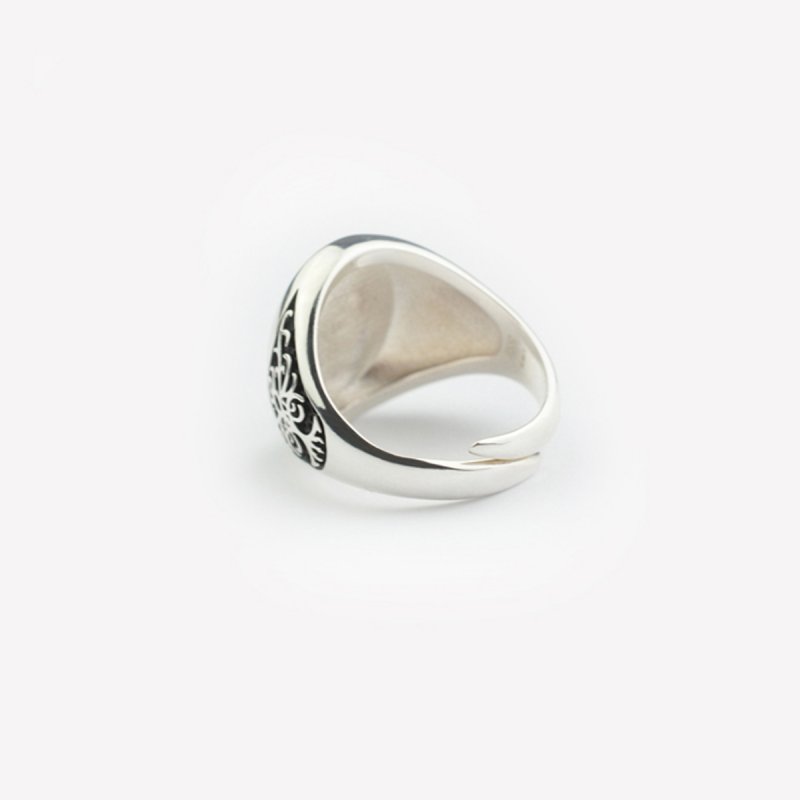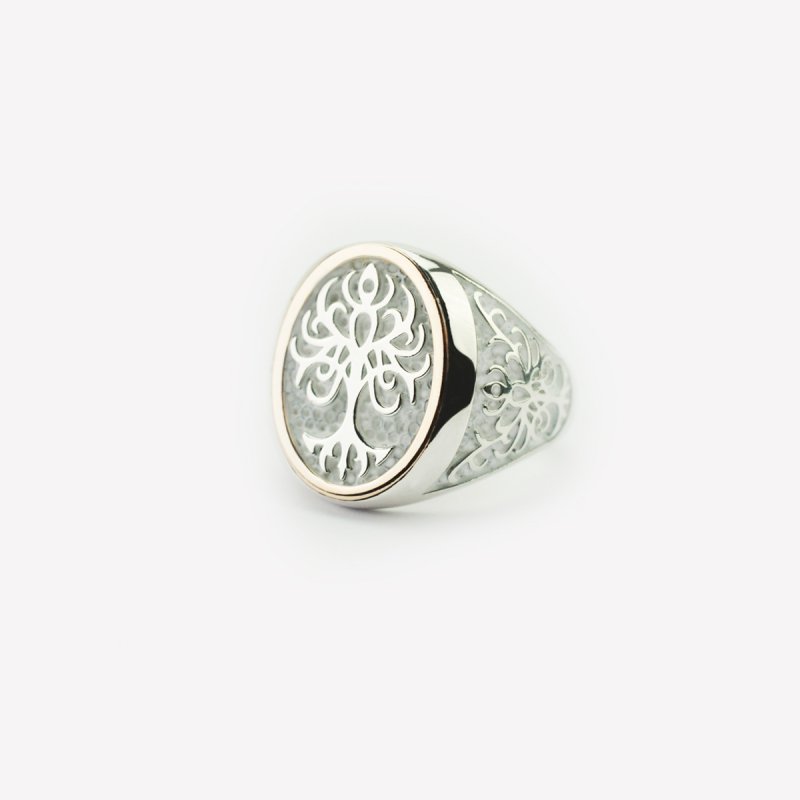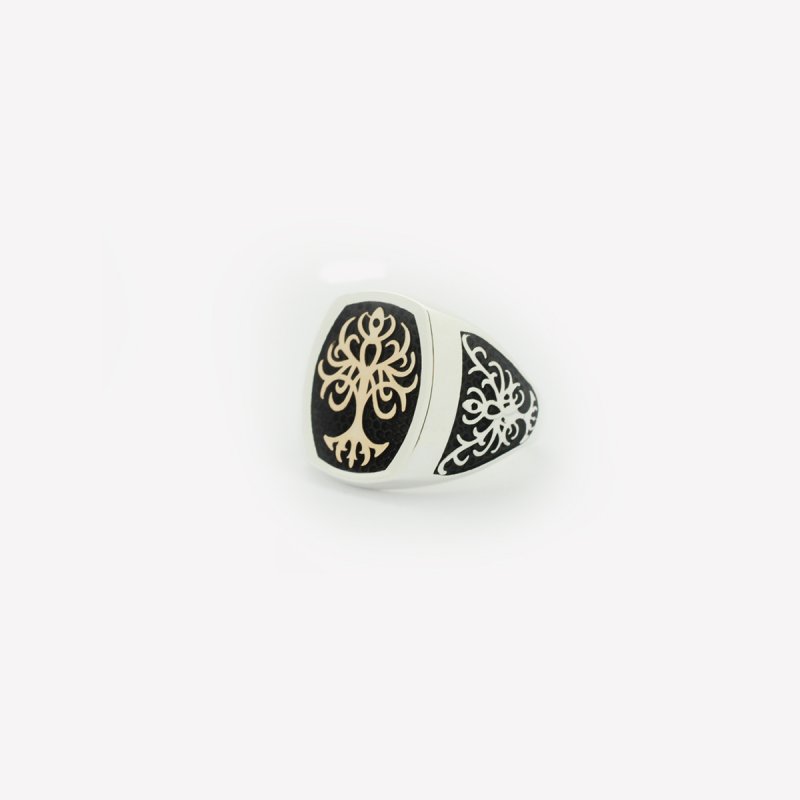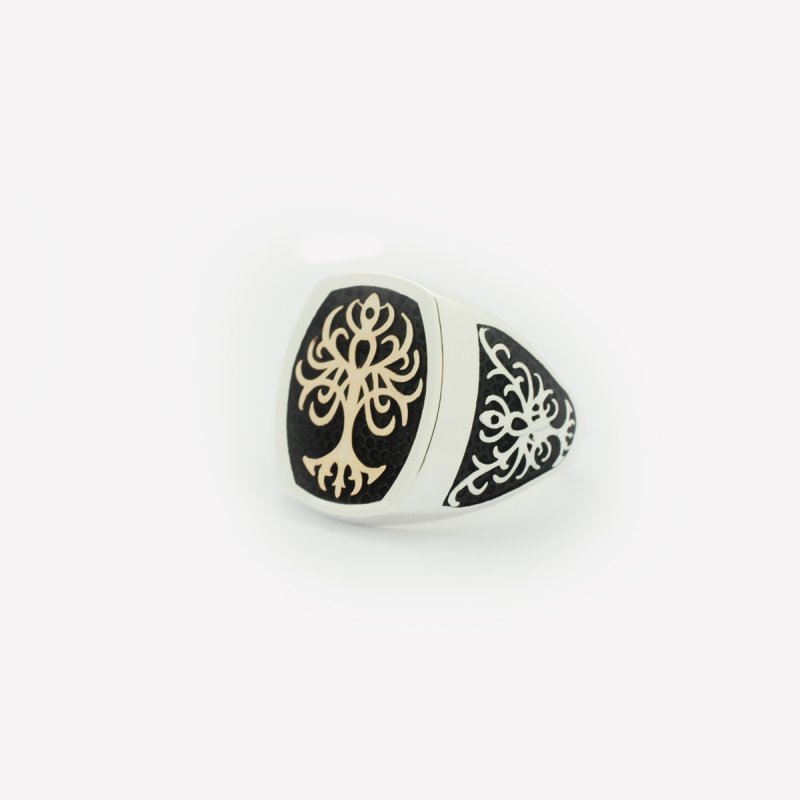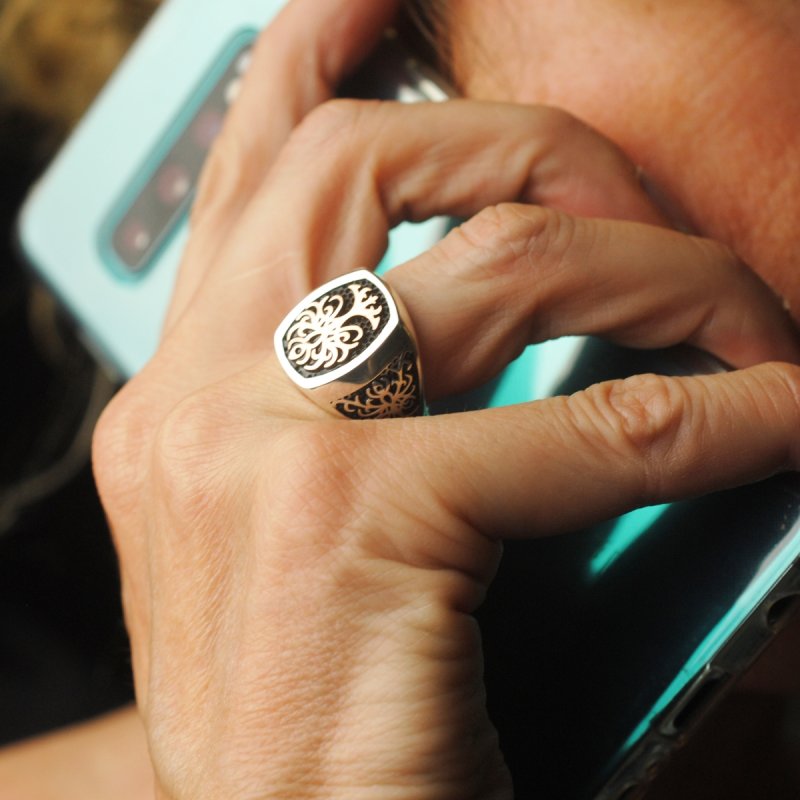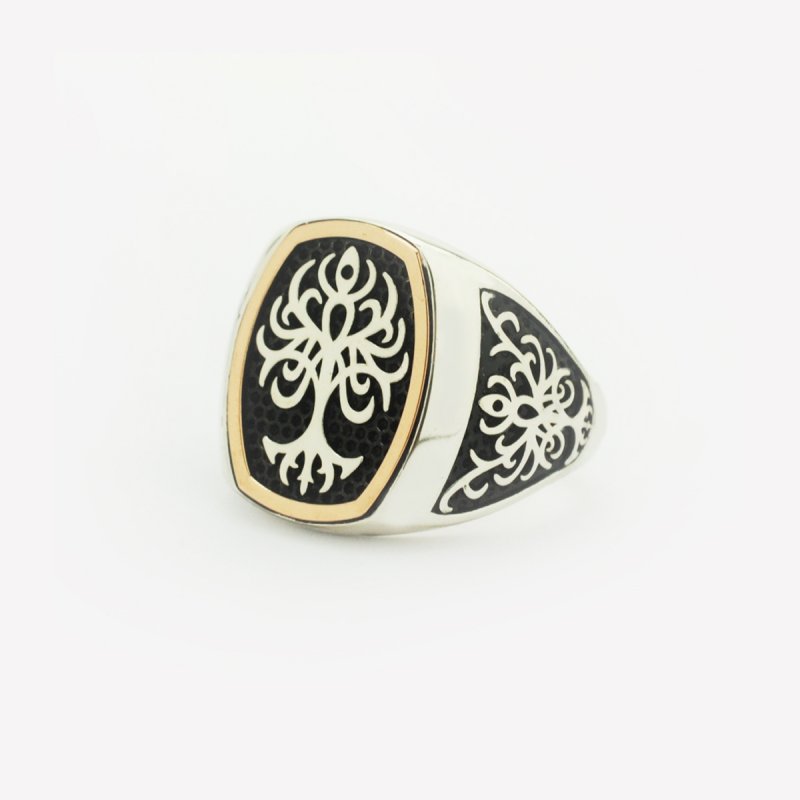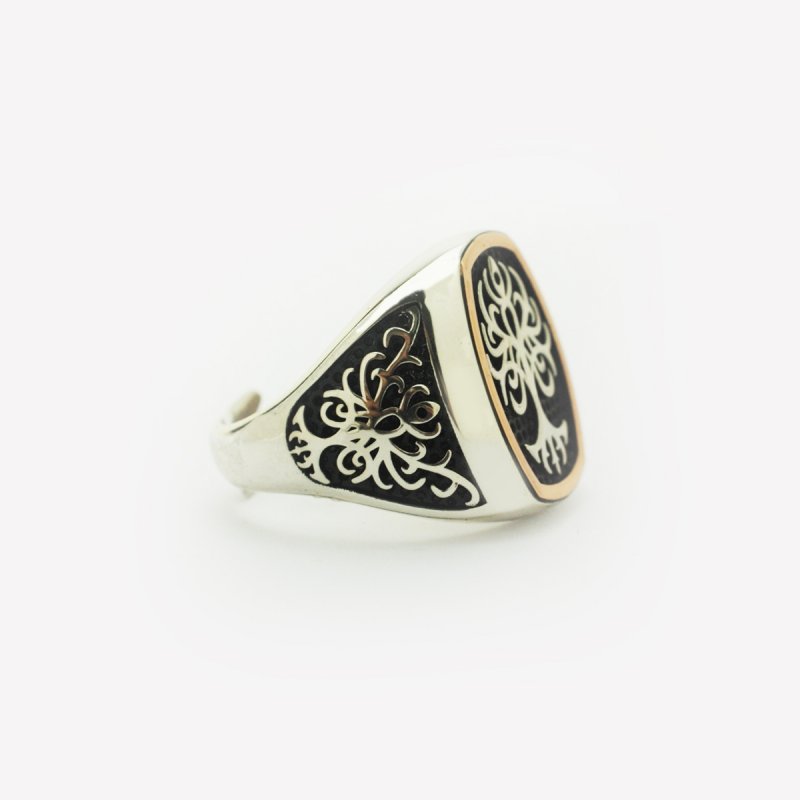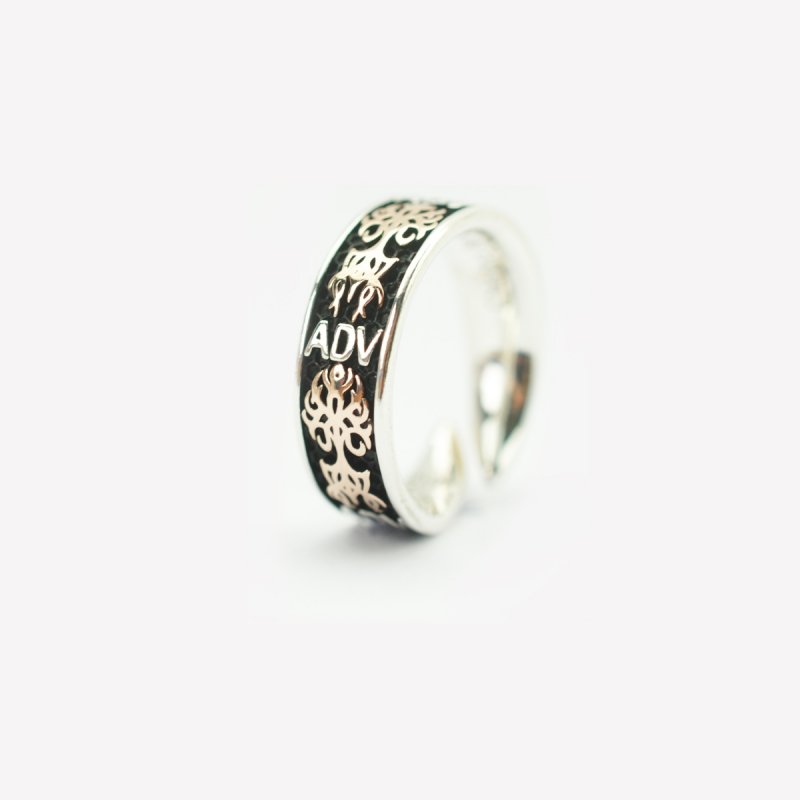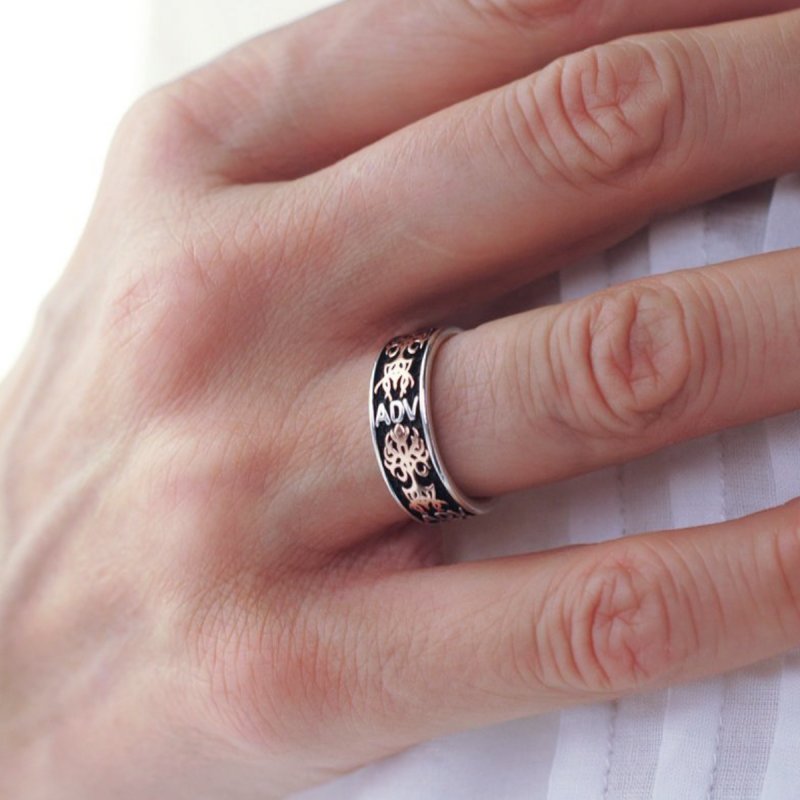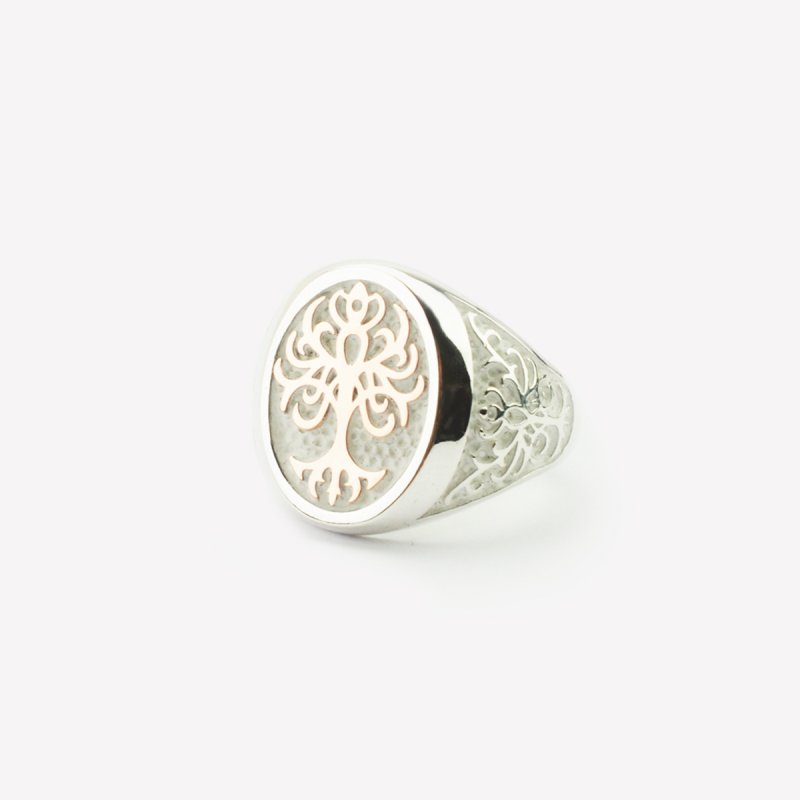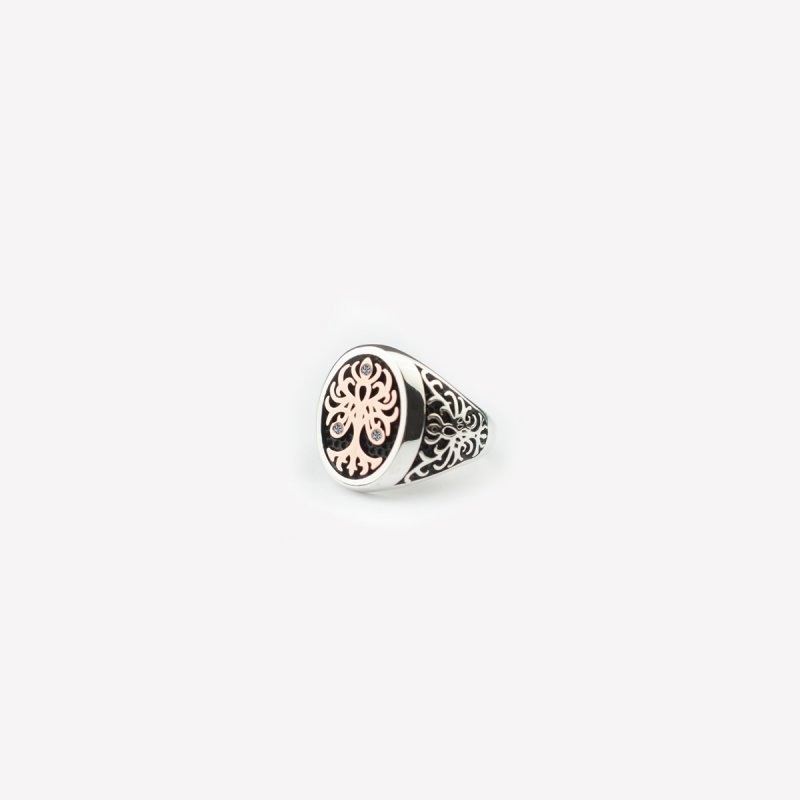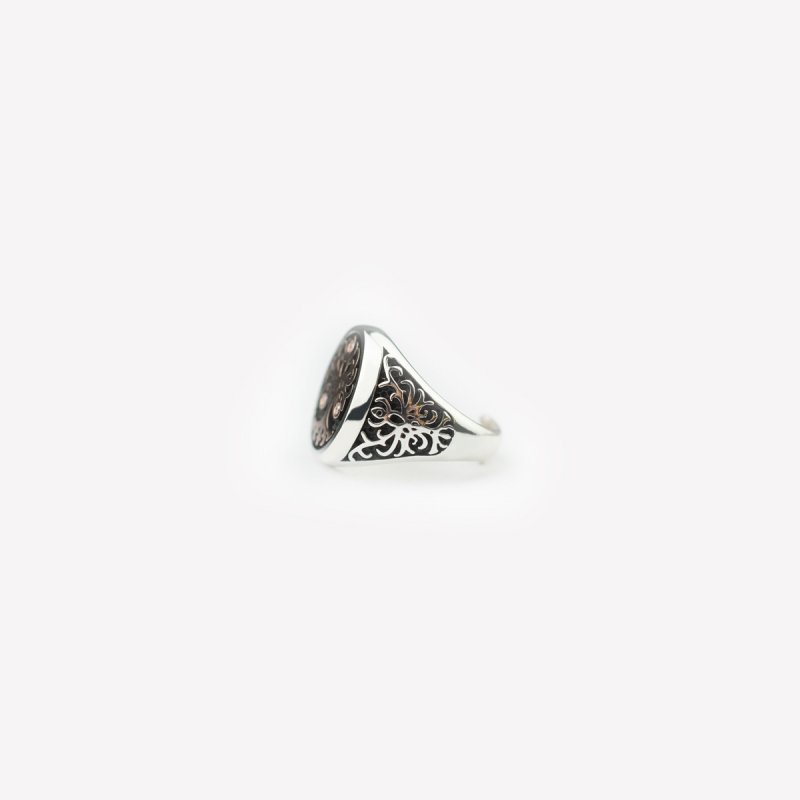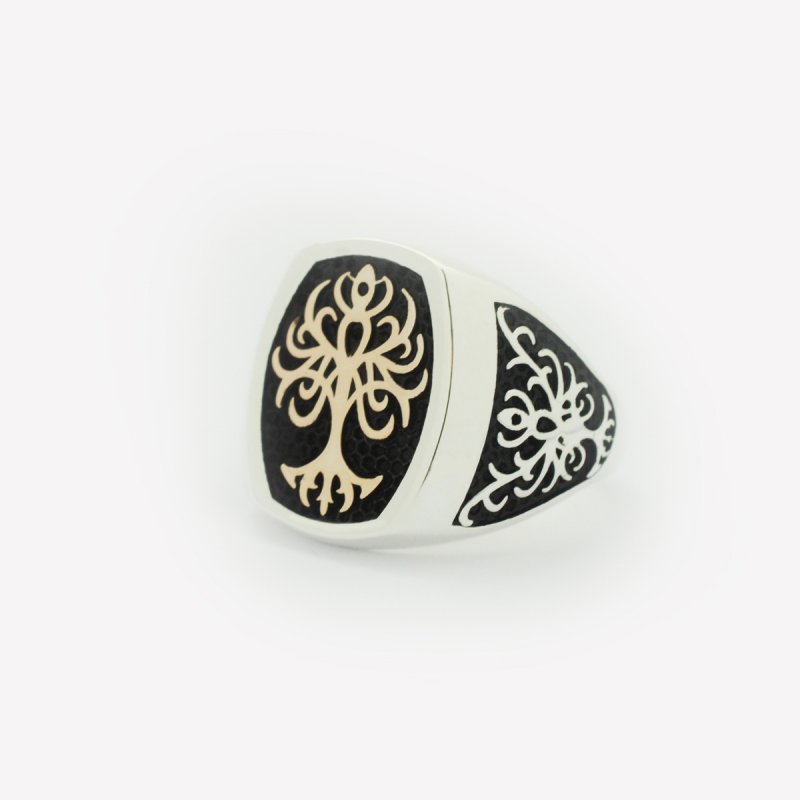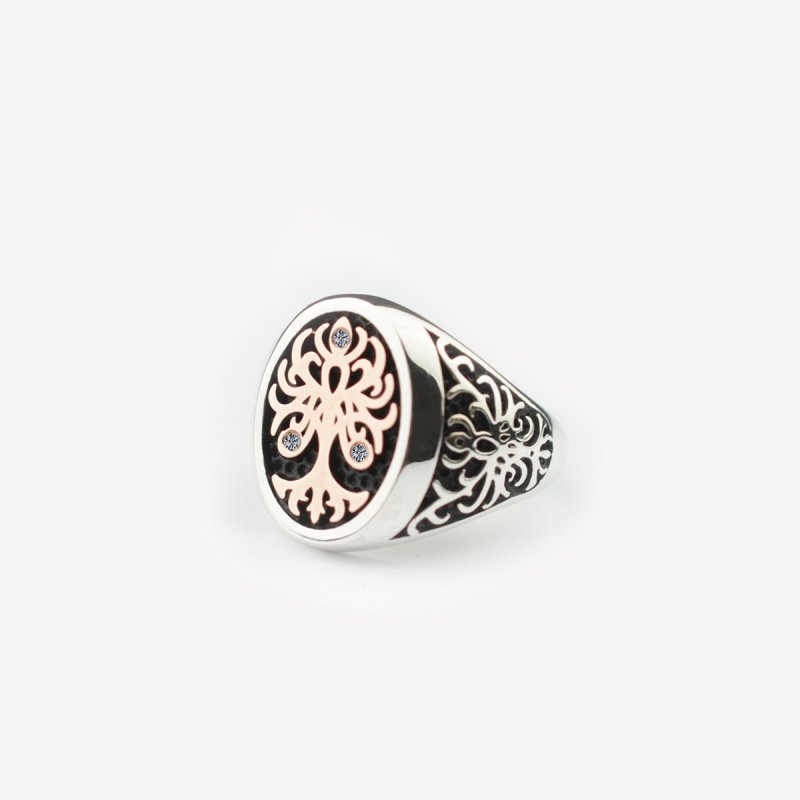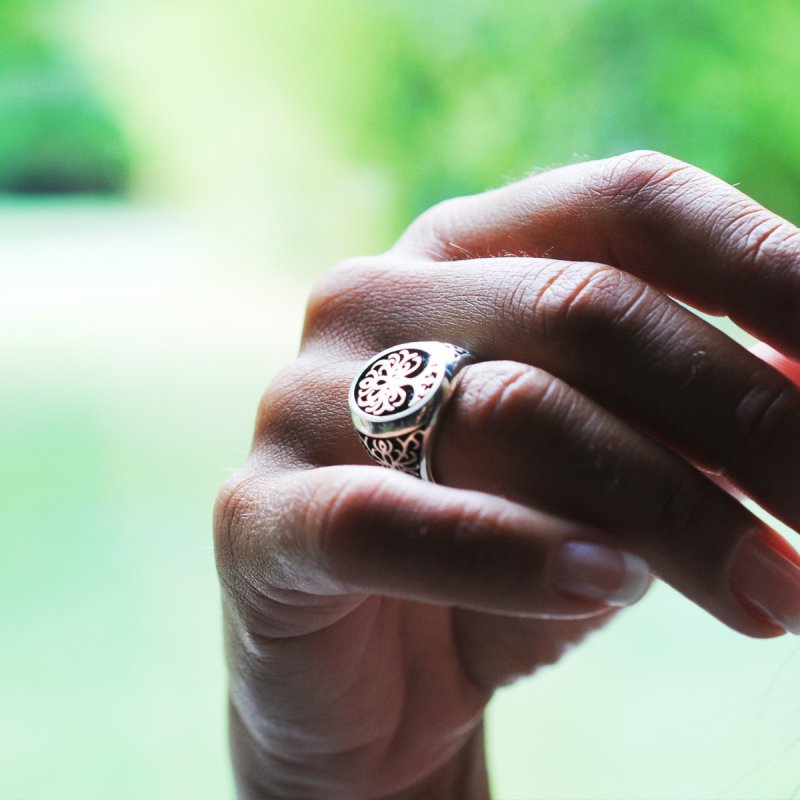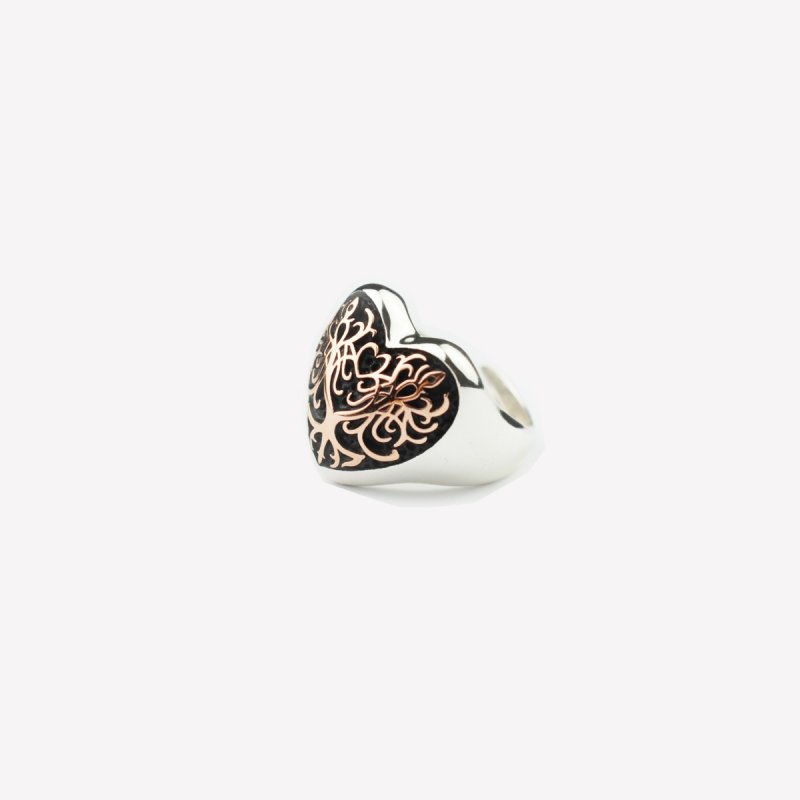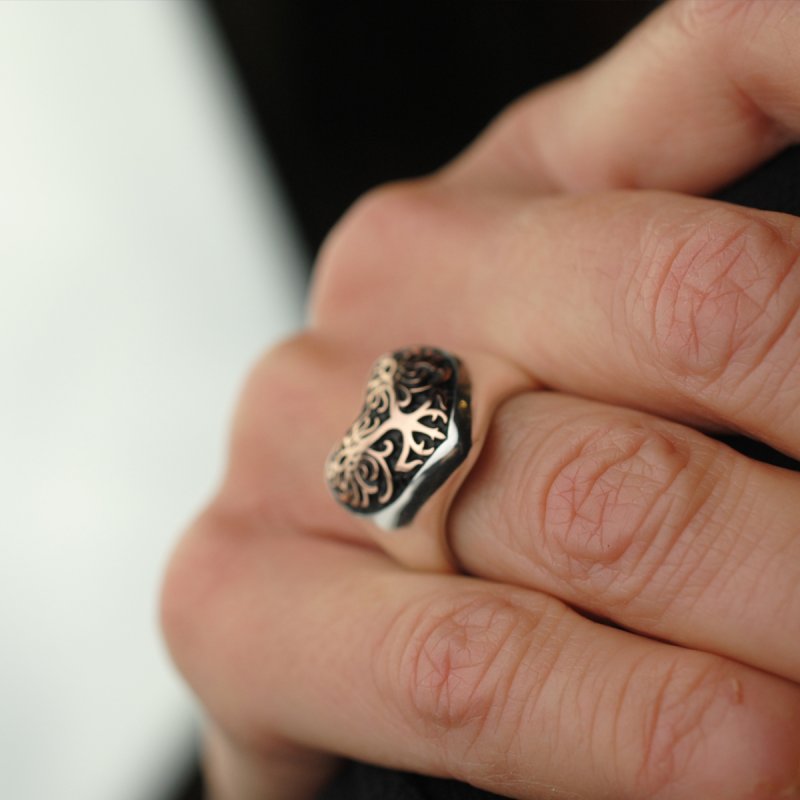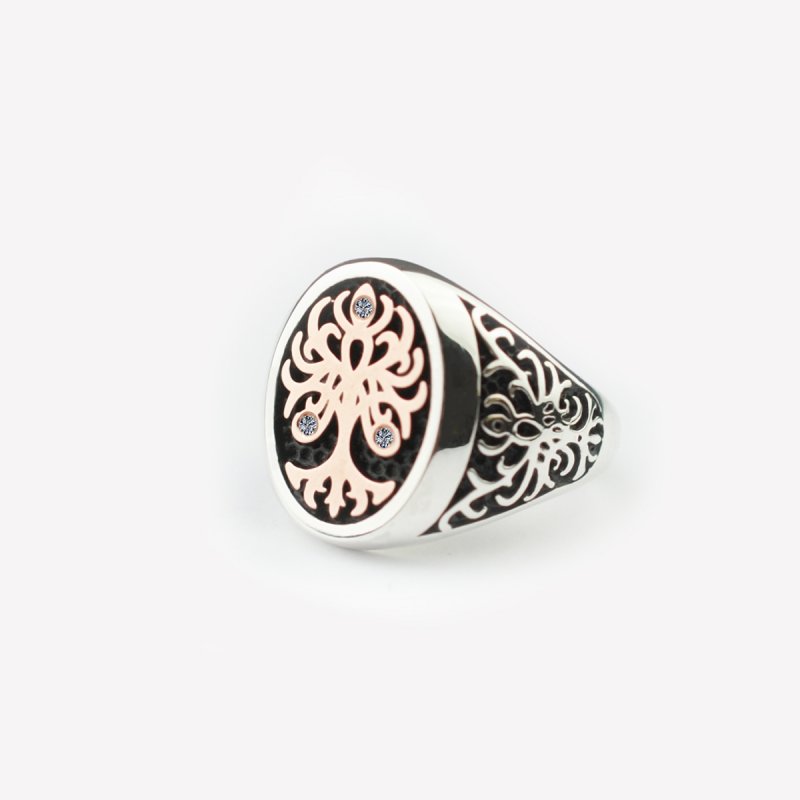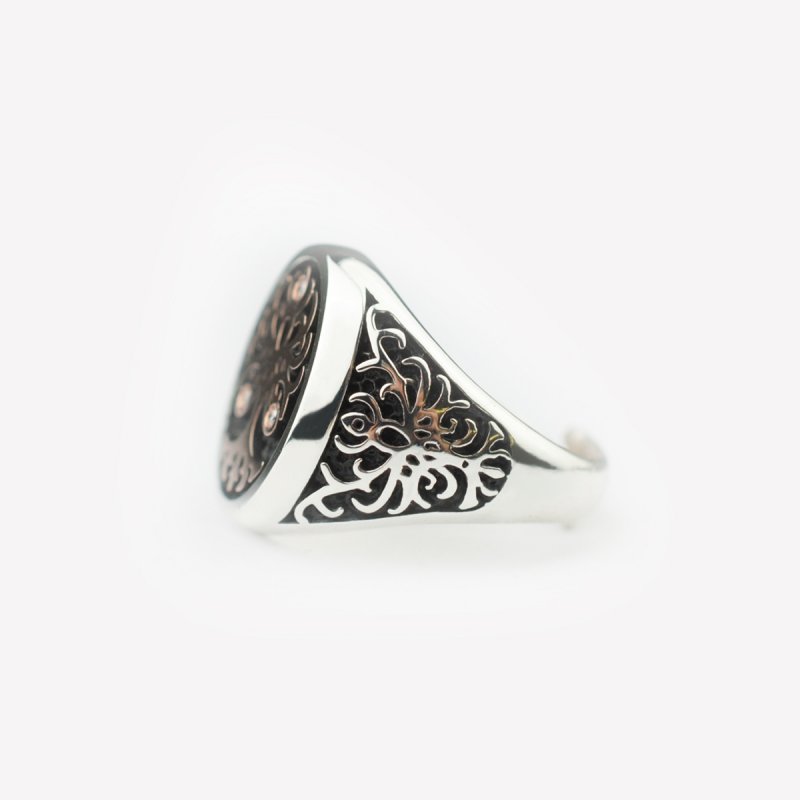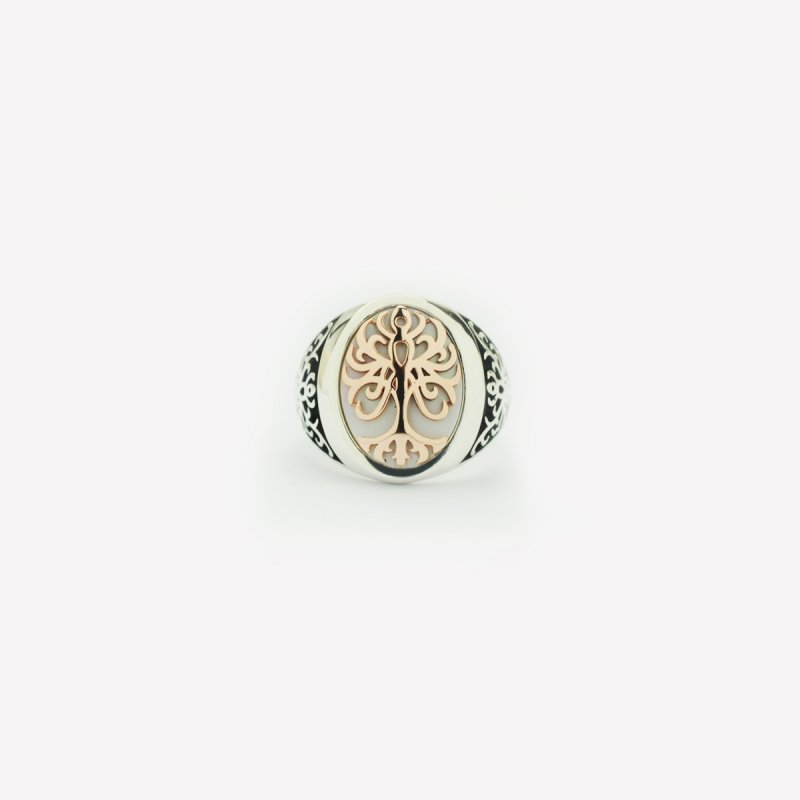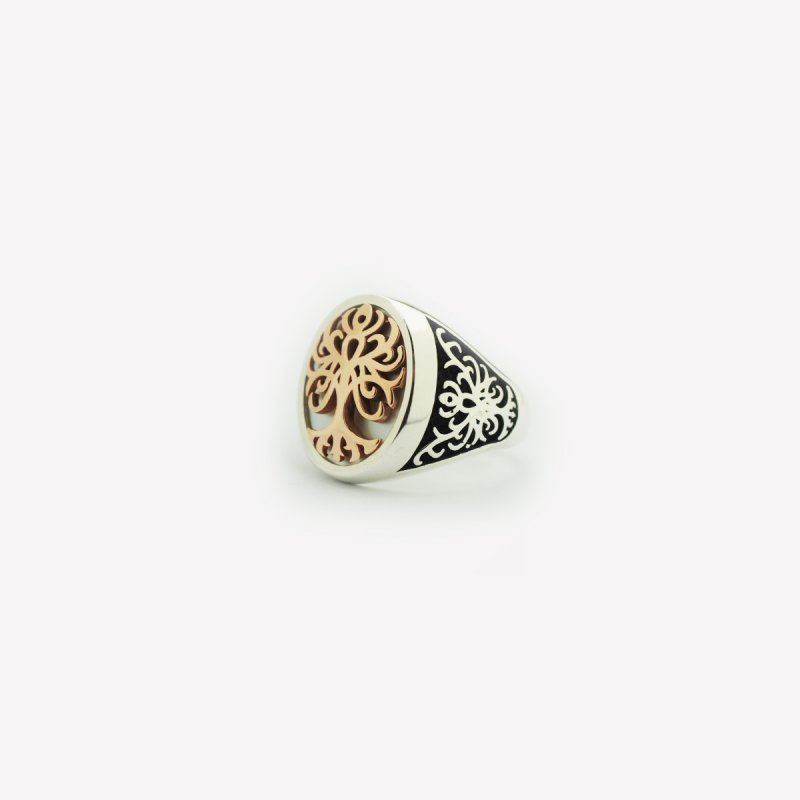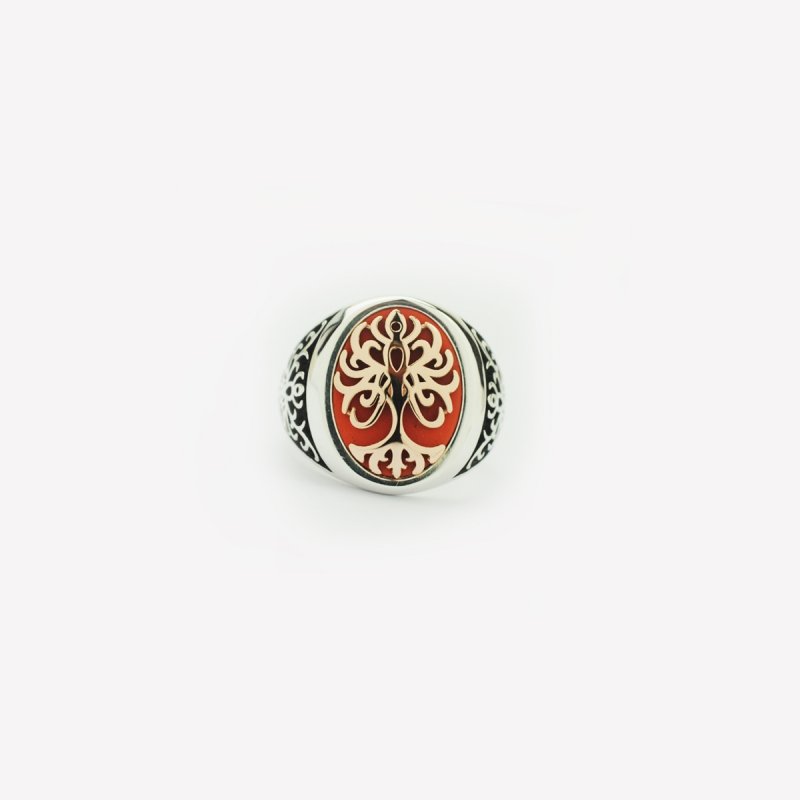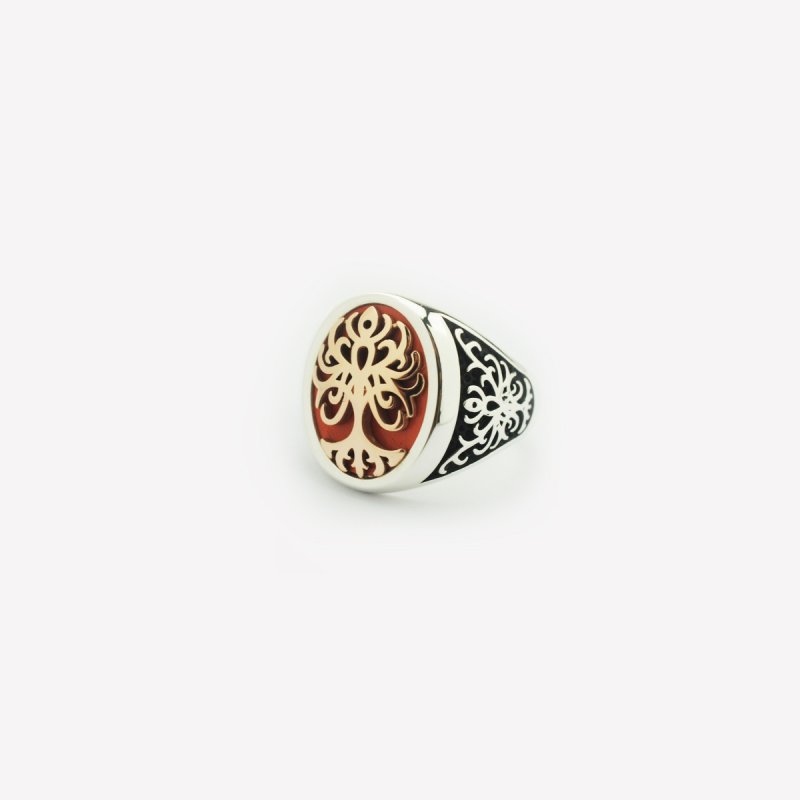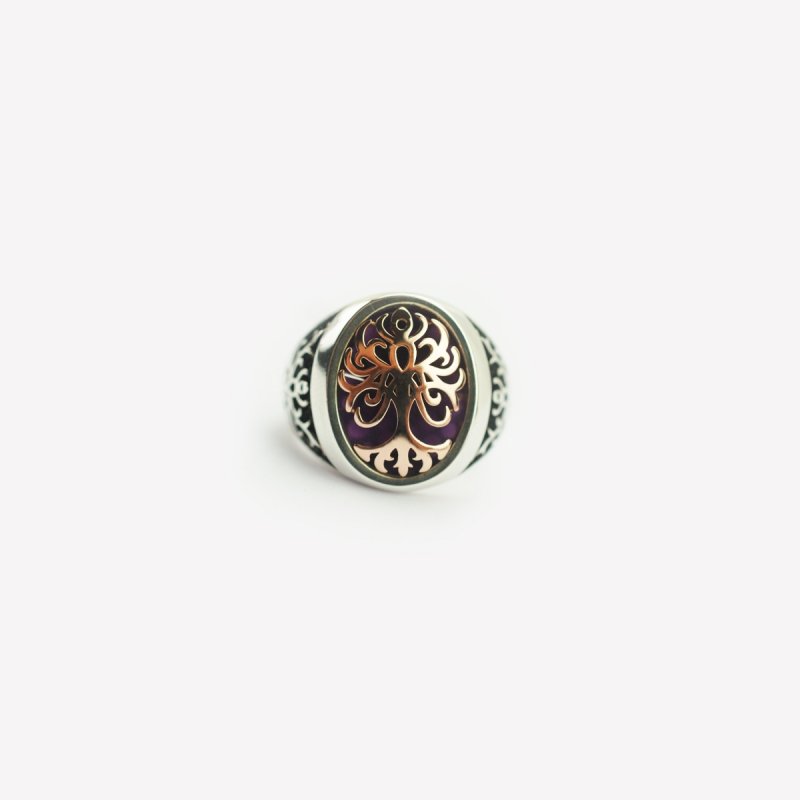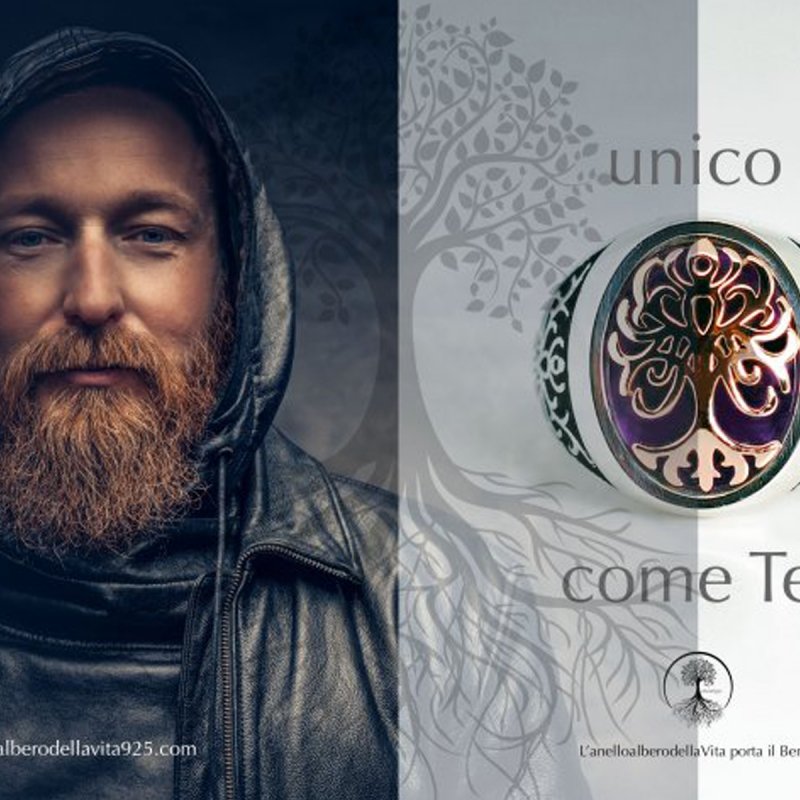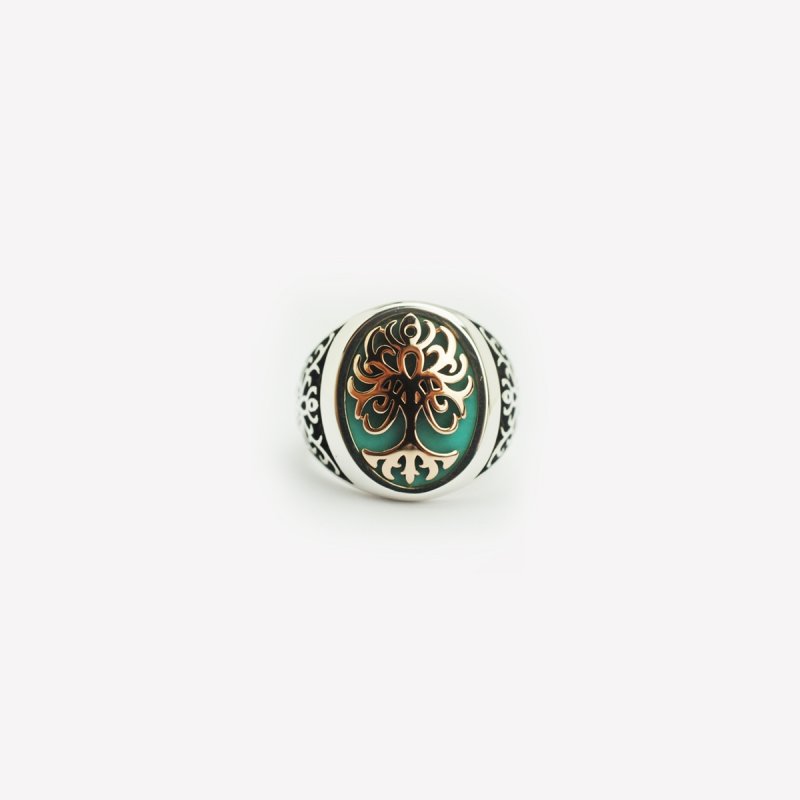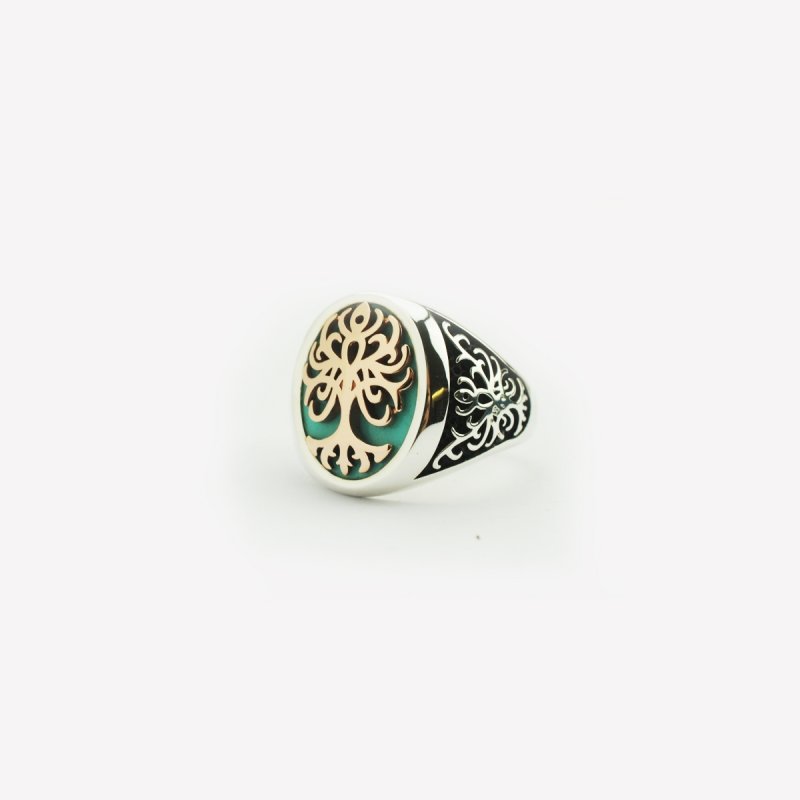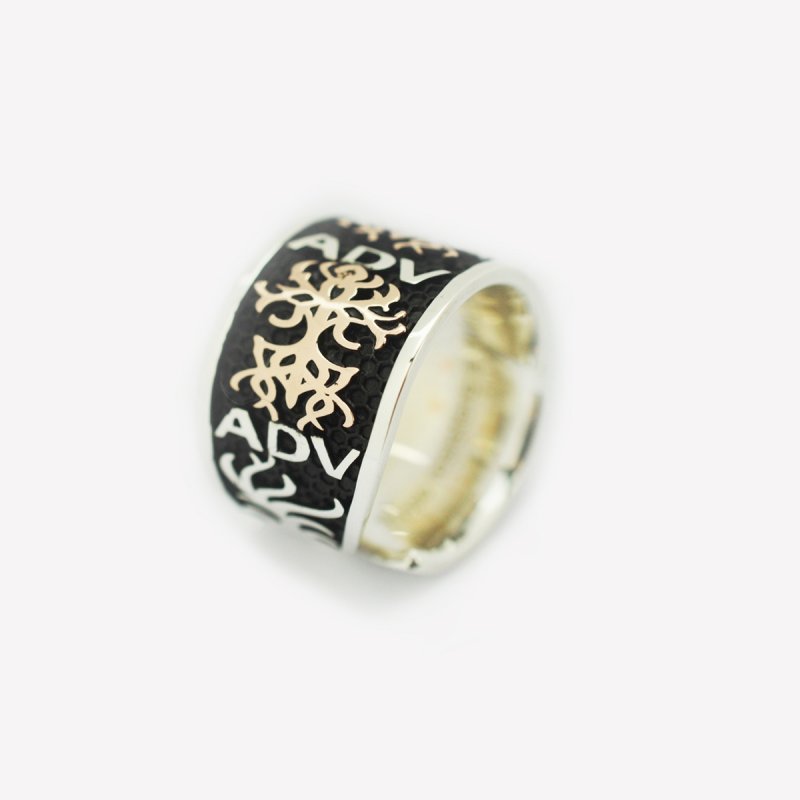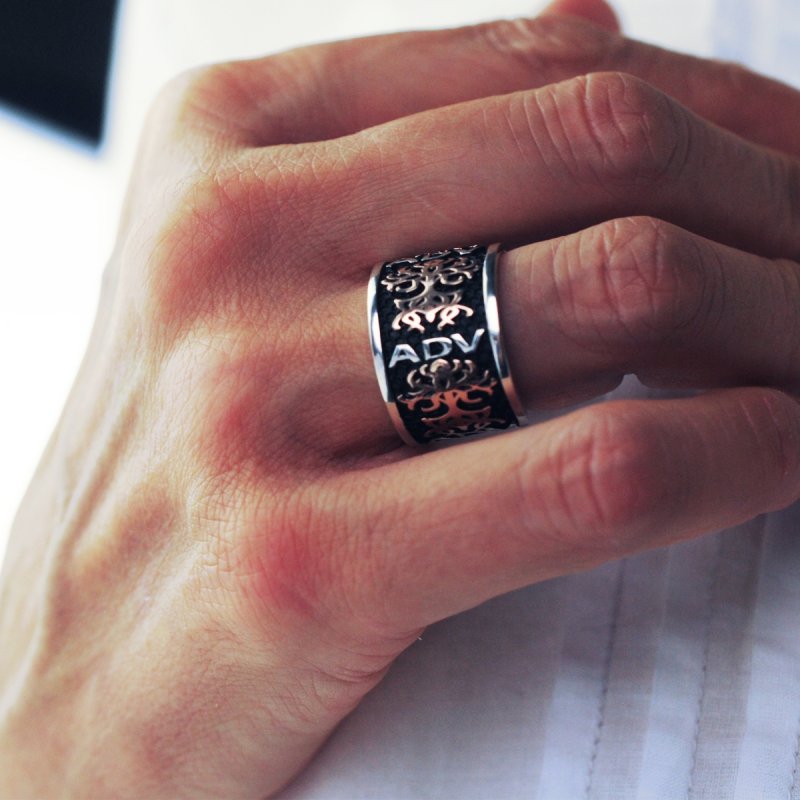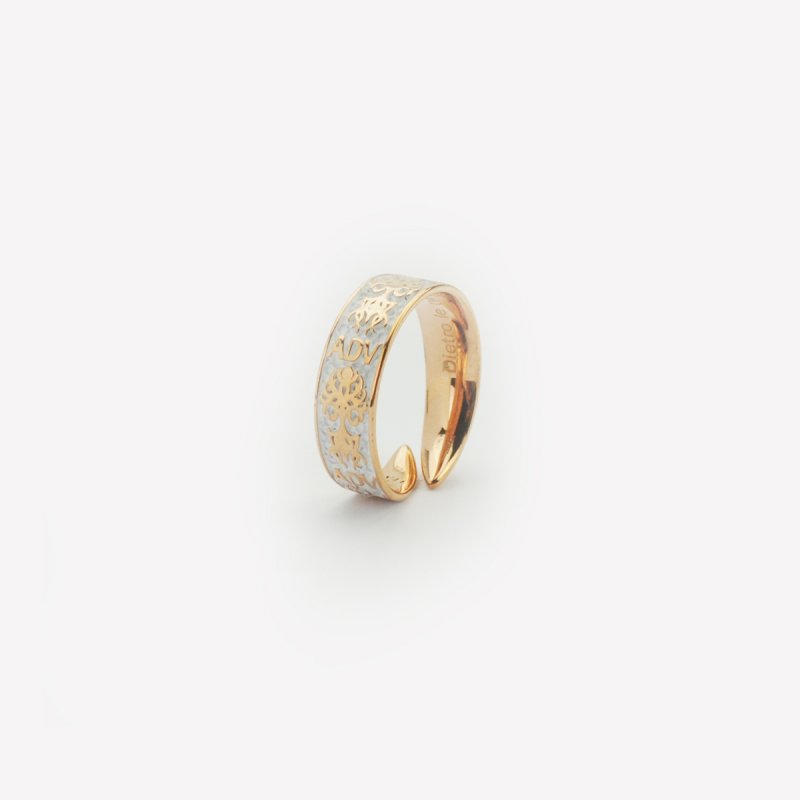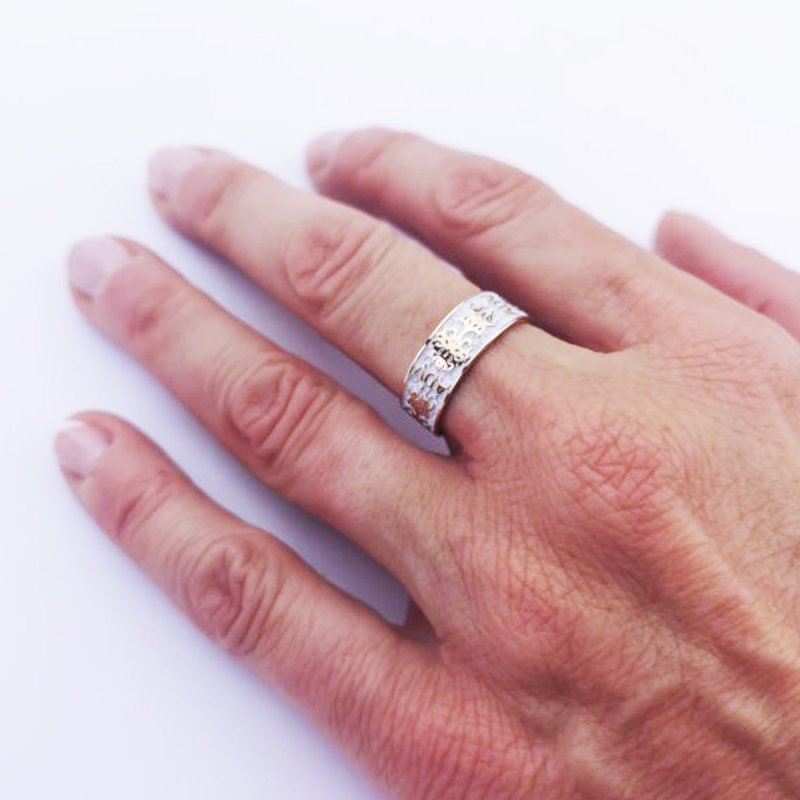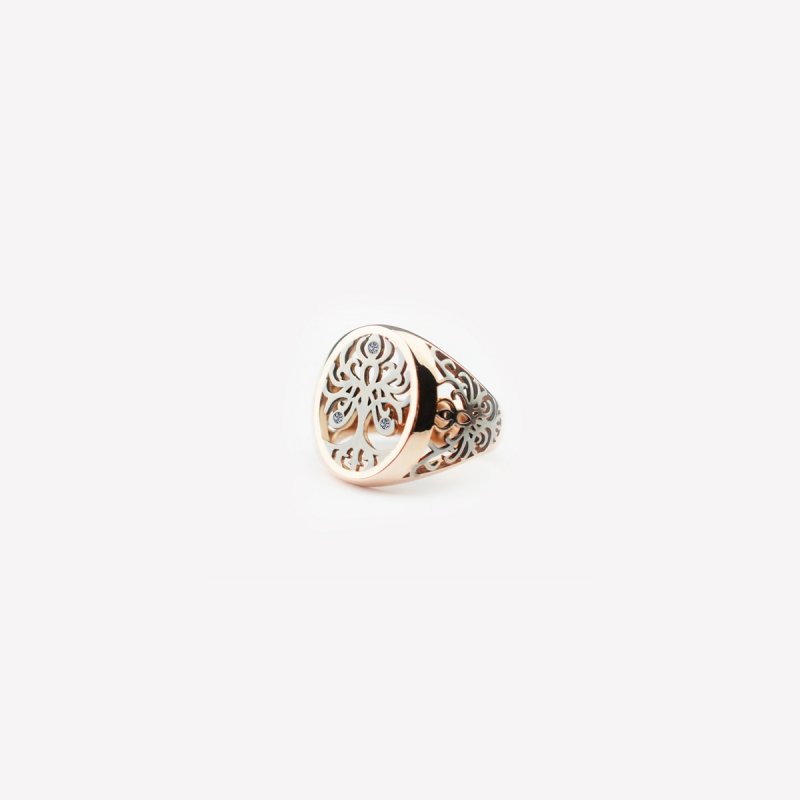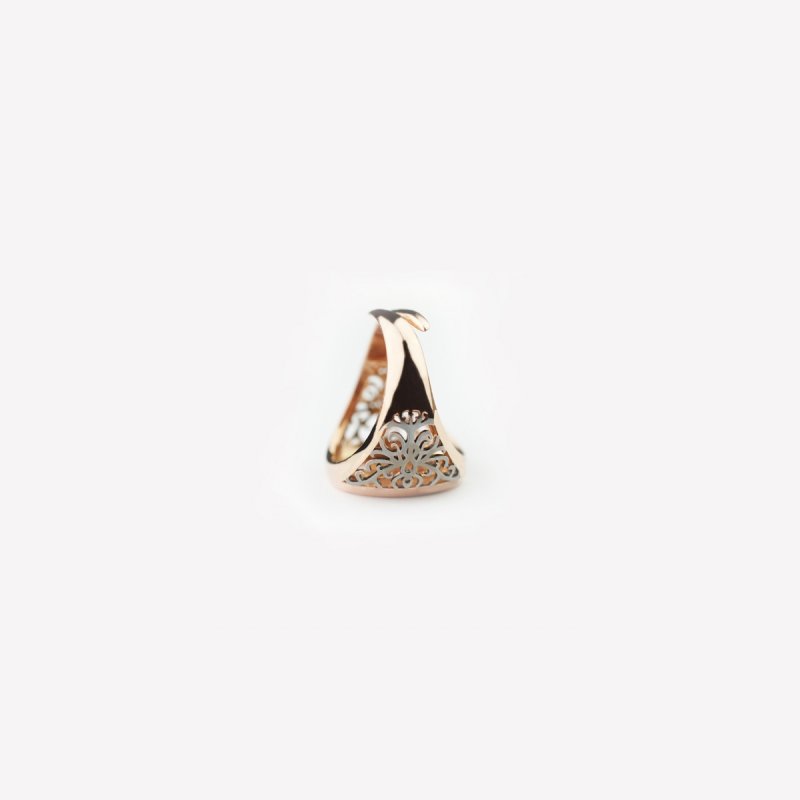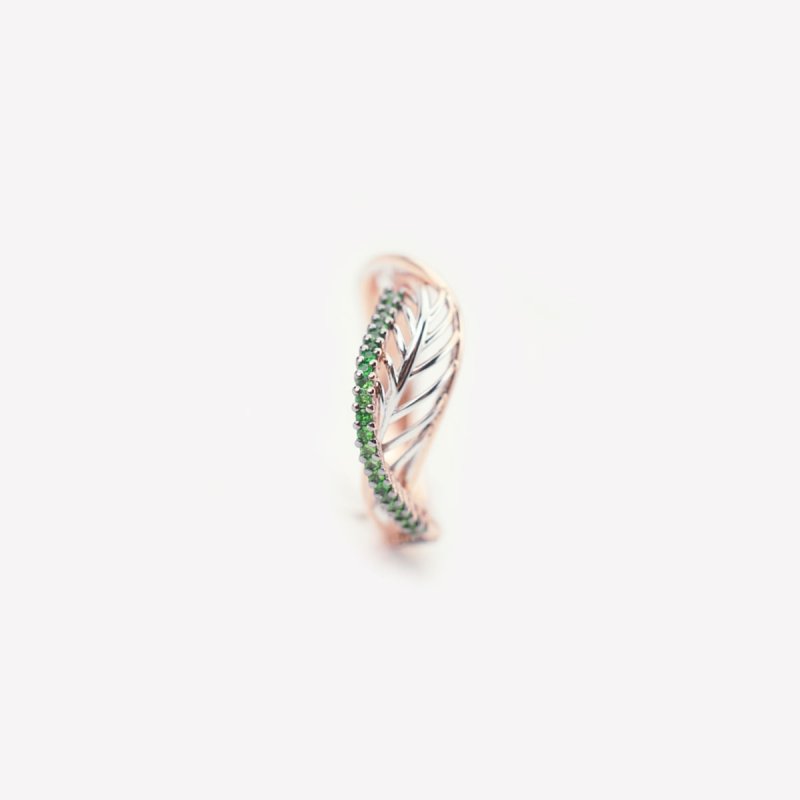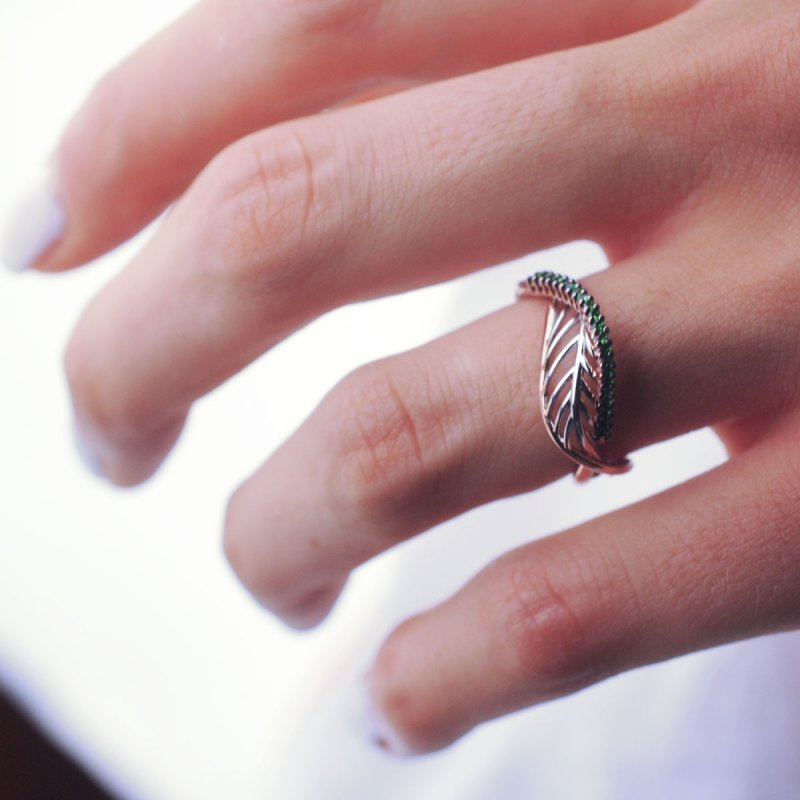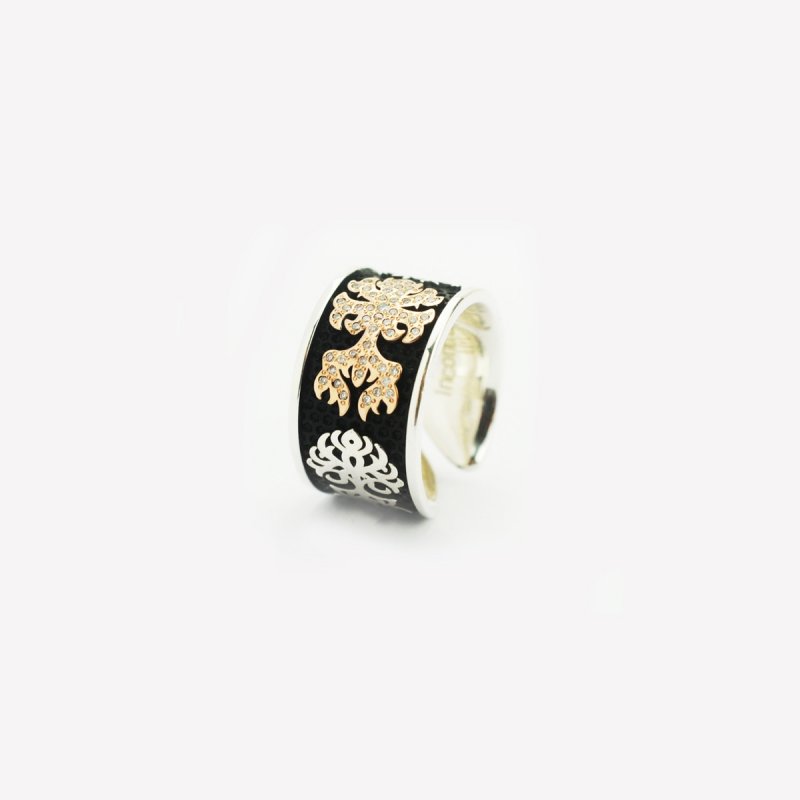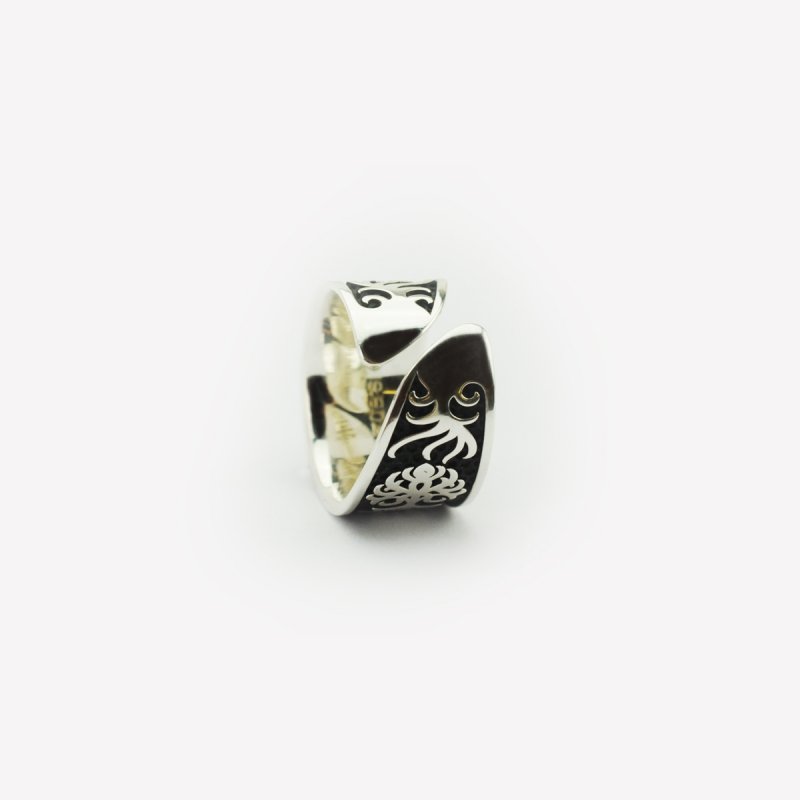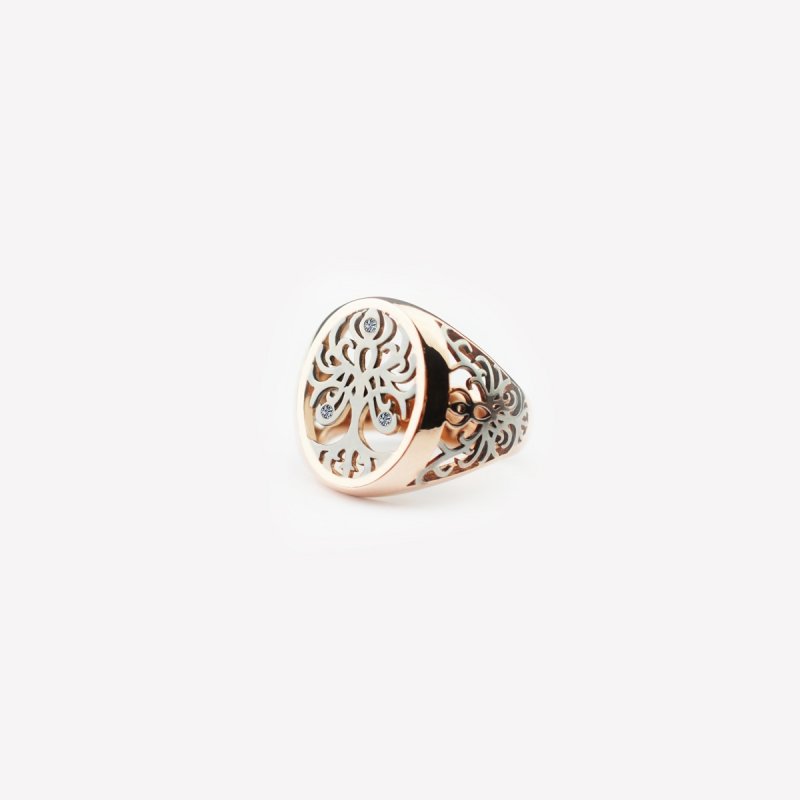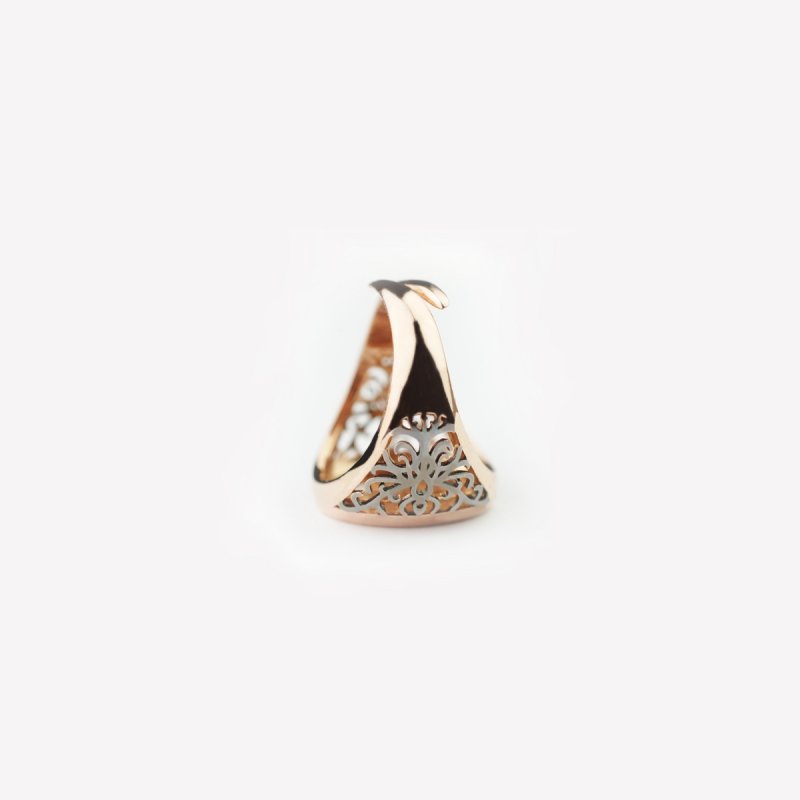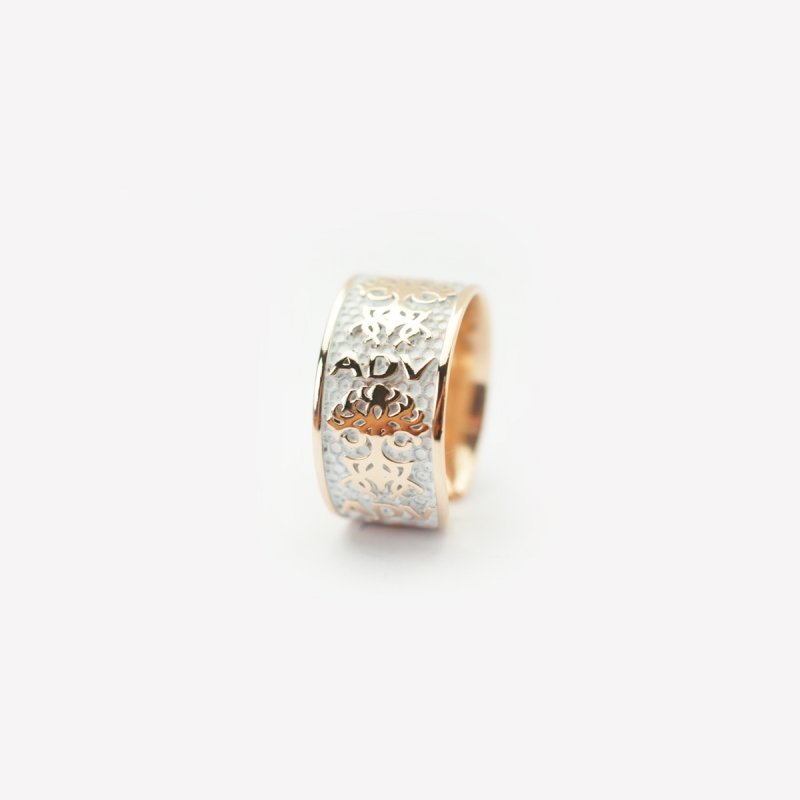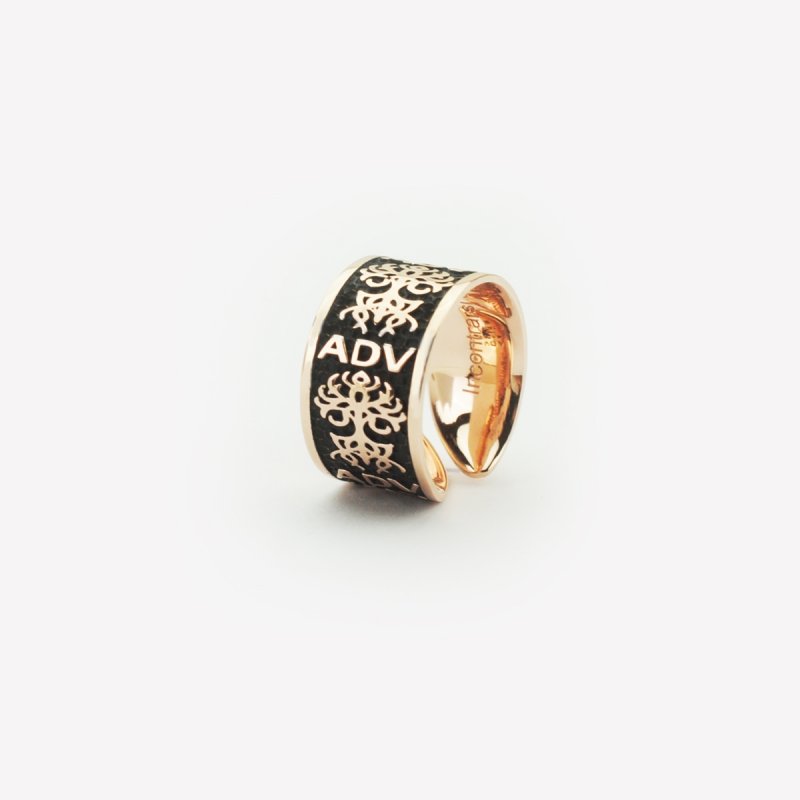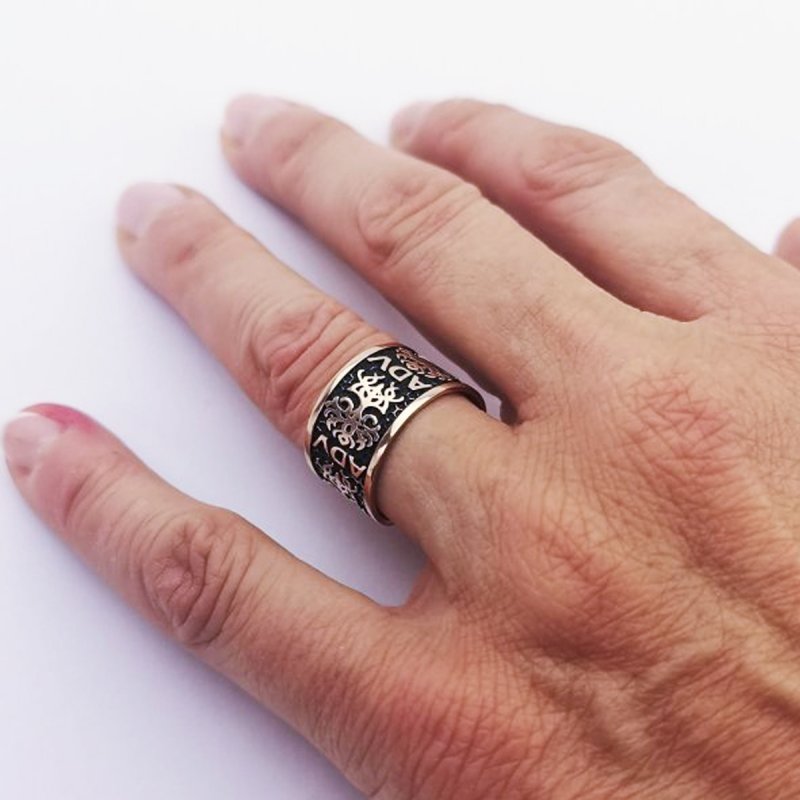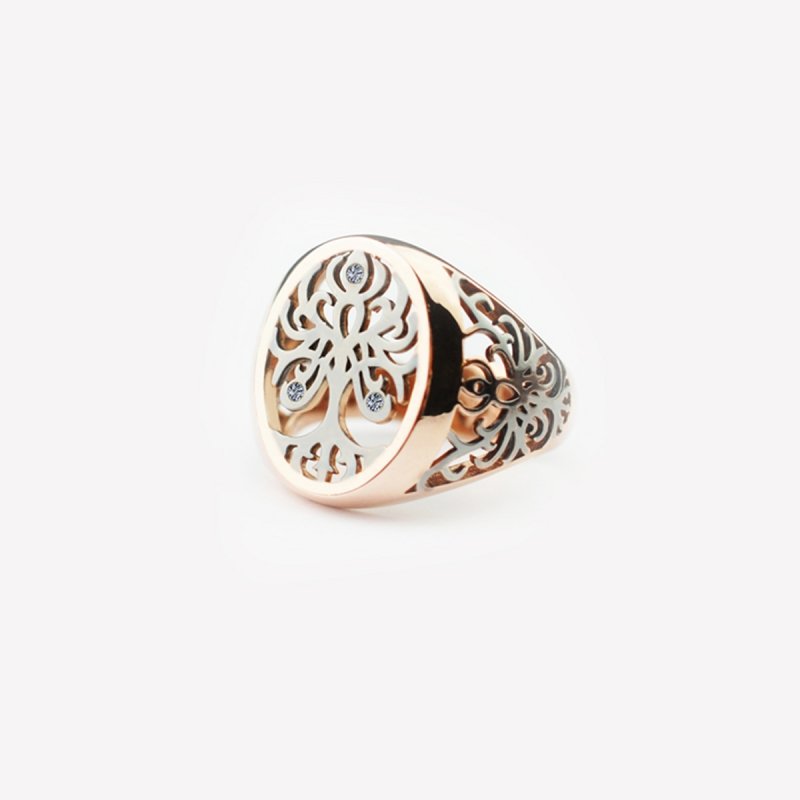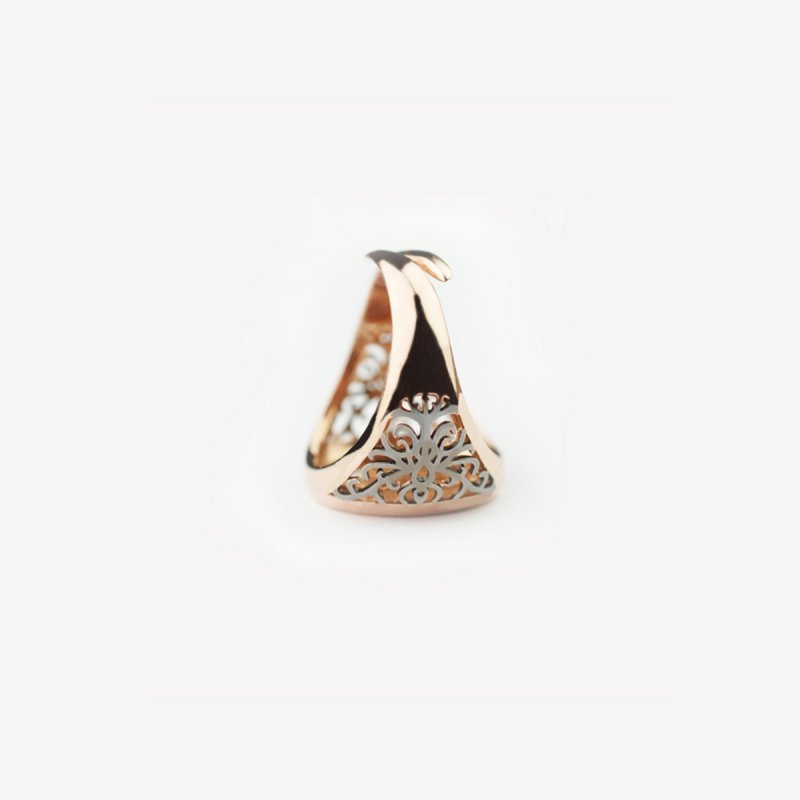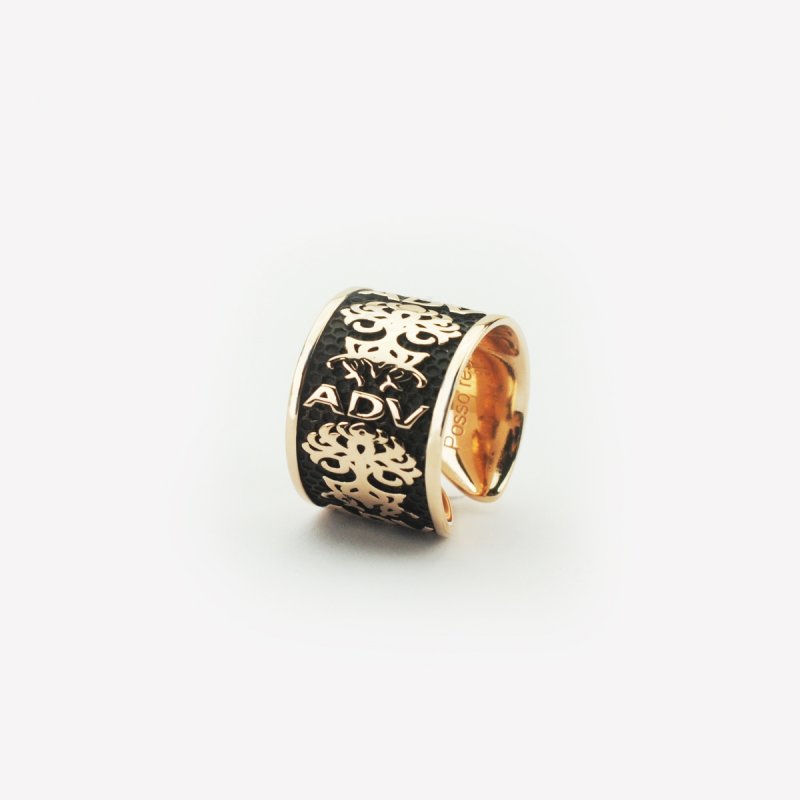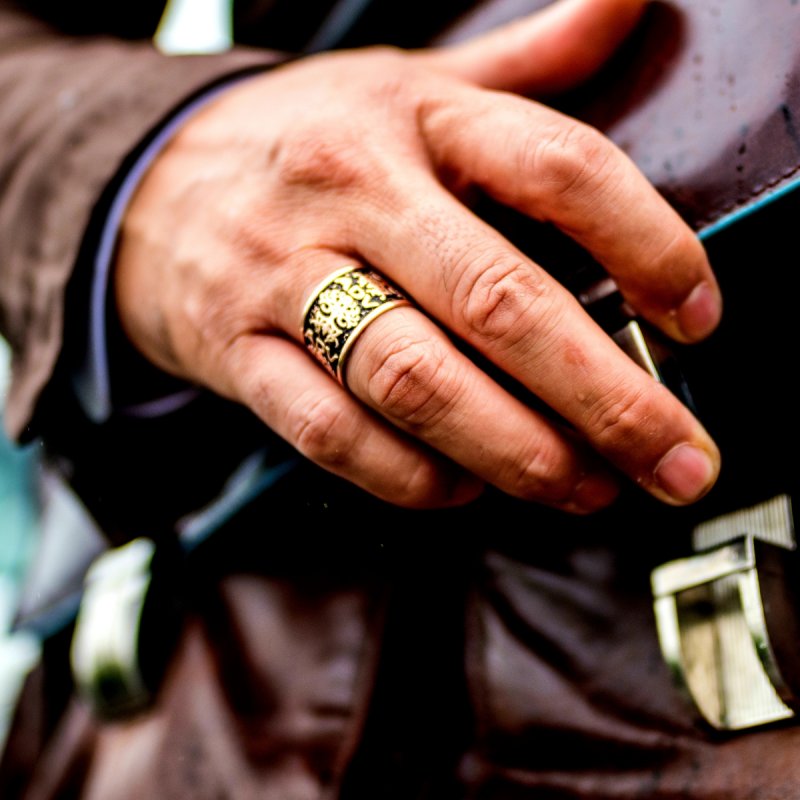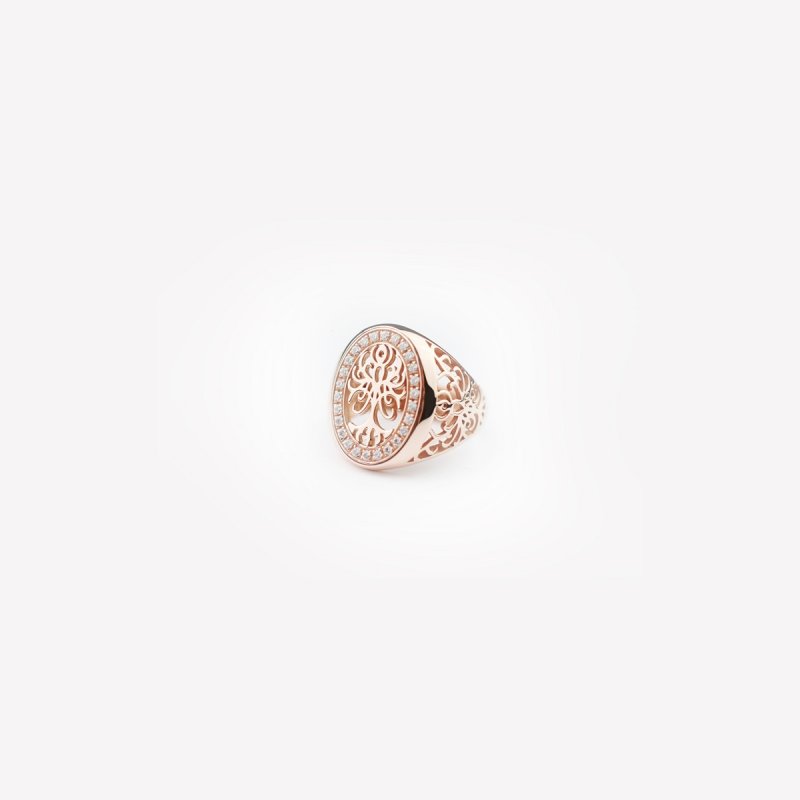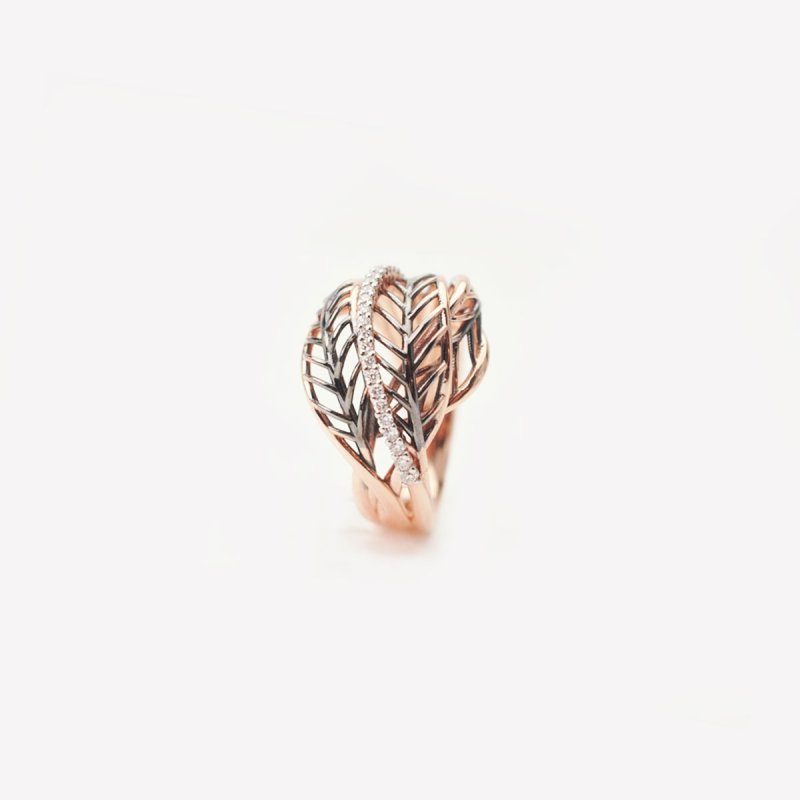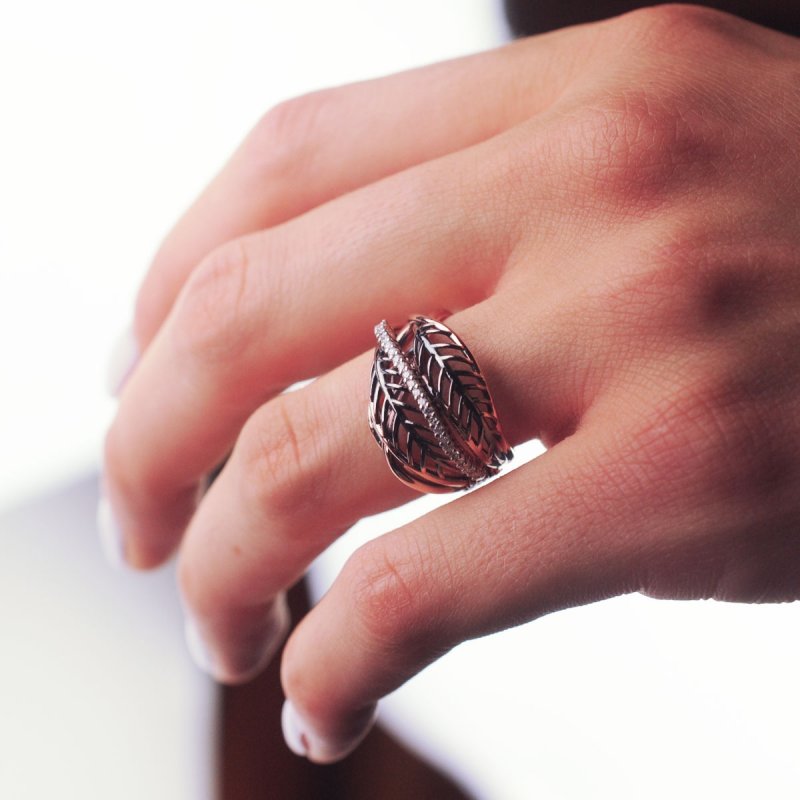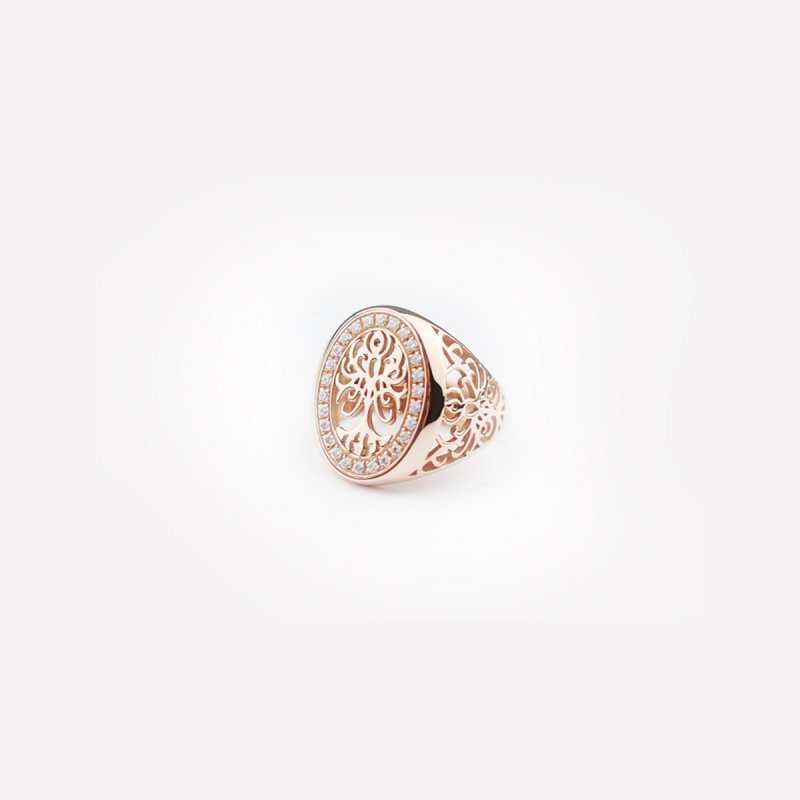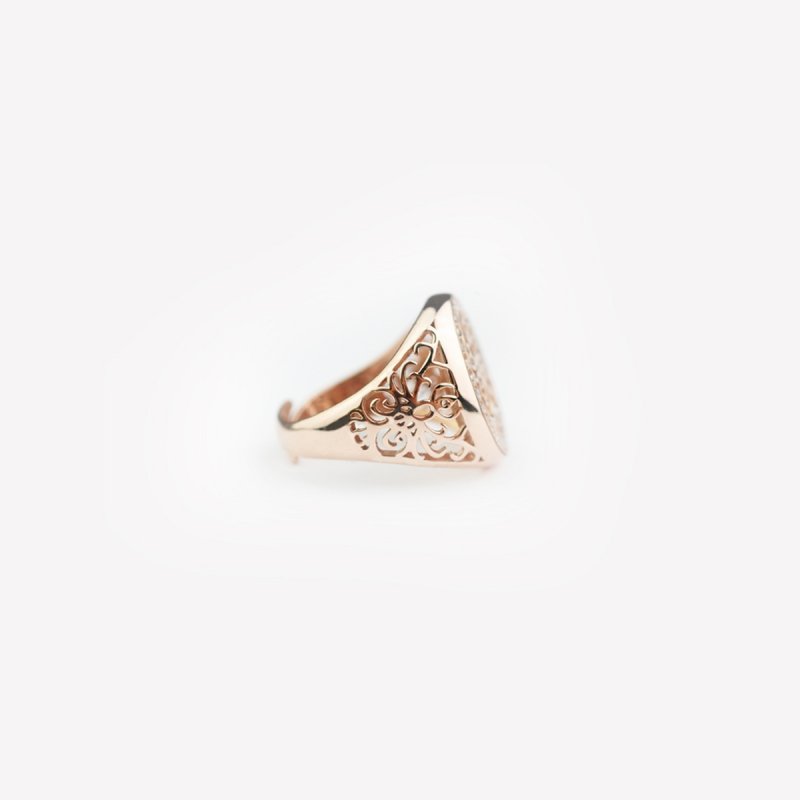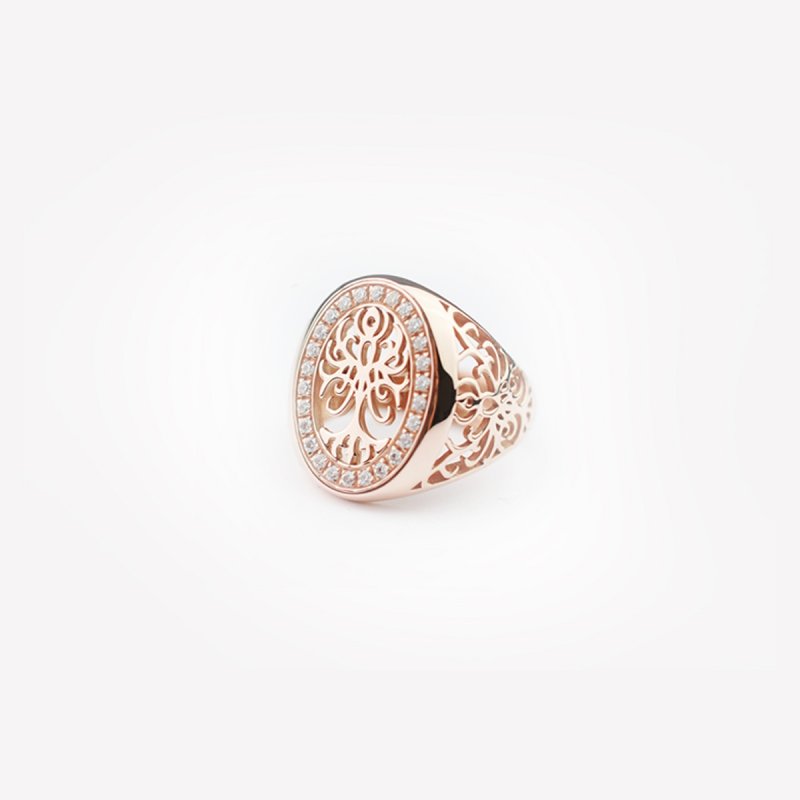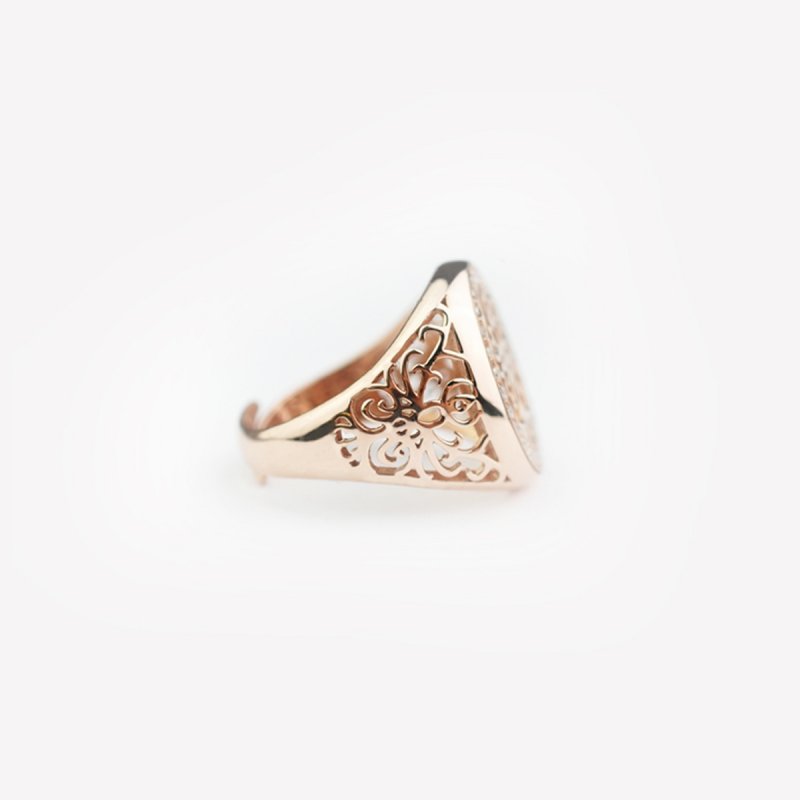FREE shipping in all Italy
64 Prodotti presenti
The Ring
Due to its shape without beginning or end, the ring has always been a symbol of eternity. From the Latin "anulus", diminutive of "anus", derives the Italian Anello, the French Anneau, the Spanish Anillo; while in the Germanic languages (German der ring, English ring) it derives from an ancient German high term hring.
Since ancient times this object has been present in the history of humanity and, very soon, it centers around many symbolic meanings, linking itself to magical - ritual or initiatory motifs.
The empty circle is the representation of the infinite.
Why is the ring considered a magical object? Its power sinks into the ancient "blacksmith cults", in which the art of metallurgy and shamanism were united in subjugating the unknown forces of the world.
On this basis, already in the pre-classical era, the ring was seen as guarantor of the earthly power of kings and priests. In this capacity the ring was linked, in legend, to pre-existing "mystery" elements, giving rise to the many variants of the magic ring, a very important element of fantastic narratives from the beginning of literature to the present day.
The circle symbolizes perfection and the image of authority. The rings are considered as amulets of power, strength, divinity, independence and security. According to legend, they can also be magical talismans that give supernatural properties to those who wear them, so as to become invisible.
The origin of the magic rings is still unknown. The ancient Egyptians and the Jews engraved magic words or phrases on the rings.
The ring also represents defense, protection and control. In some ancient cultures it was found that the ring possessed the ability to bind the connection between mind and body. The ring is a symbol of integrity, unity, and bond (especially of marriage). "In Greek mythology it is told how Zeus allowed Heracles to release Prometheus on condition that the latter wore an iron ring with a fragment of rock from the Caucasus, to which he was chained, so that the imposed punishment would be symbolically fulfilled".
During the Middle Ages rings with magic formulas were engraved which were considered as amulets of the people against diseases. Some rings were adorned with precious stones: for example, soldiers in ancient times wore a ring adorned with red jasper, a stone associated with blood, to avoid death and blood loss due to serious injuries.
Among the ancient Romans carrying a ring on the finger was a law regulated by the law, and an honorific sign: the State recognized this right as a reward for military enterprises. Over time it became the emblem of an ambassador, then the seal of a political power and finally of a social class. A little at a time this object became the symbol of the property, especially when they began using seal rings. Finally, it was a symbol of wealth, of freedom, or simply of a commitment made, which he wanted to show the sign of. With time it became a simple ornament. These habits were also acquired by the Church. In the ninth century the ring had become the sign of episcopal authority. In the 12th century a marriage ring was given to Christian virgins on the day of their religious consecration.
The signet ring on which symbols are engraved, such as the ring worn by the Pope, has the power to authenticate the documents and justify the property claims. In the Middle Ages the ring is a symbol of engagement (knot) and marriage. The broken rings symbolize broken promises, their loss, according to popular belief, announces a disgrace. To the dying the ring was paraded to facilitate their detachment from earthly life.
Great importance was attached to the jewel-rings during the early Middle Ages, because a blessing was linked to them. G.A. Böckler in 1688 writes: "many times in the coat of arms one sees rings whose meaning is honor, fidelity and infinite firmness. When a subordinate receives a ring from a prince, this is a sign of an infinitely great grace; something analogous relates Aristotle, according to which the Carthaginians gave their officers as many rings as the victories they had achieved over the enemy, which therefore means that anciently the ring must have been, as it still is, a sign of nobility " .
Due to its shape without beginning or end, the ring has always been a symbol of eternity. From the Latin "anulus", diminutive of "anus", derives the Italian Anello, the French Anneau, the Spanish Anillo; while in the Germanic languages (German der ring, English ring) it derives from an ancient German high term hring.
Since ancient times this object has been present in the history of humanity and, very soon, it centers around many symbolic meanings, linking itself to magical - ritual or initiatory motifs.
The empty circle is the representation of the infinite.
Why is the ring considered a magical object? Its power sinks into the ancient "blacksmith cults", in which the art of metallurgy and shamanism were united in subjugating the unknown forces of the world.
On this basis, already in the pre-classical era, the ring was seen as guarantor of the earthly power of kings and priests. In this capacity the ring was linked, in legend, to pre-existing "mystery" elements, giving rise to the many variants of the magic ring, a very important element of fantastic narratives from the beginning of literature to the present day.
The circle symbolizes perfection and the image of authority. The rings are considered as amulets of power, strength, divinity, independence and security. According to legend, they can also be magical talismans that give supernatural properties to those who wear them, so as to become invisible.
The origin of the magic rings is still unknown. The ancient Egyptians and the Jews engraved magic words or phrases on the rings.
The ring also represents defense, protection and control. In some ancient cultures it was found that the ring possessed the ability to bind the connection between mind and body. The ring is a symbol of integrity, unity, and bond (especially of marriage). "In Greek mythology it is told how Zeus allowed Heracles to release Prometheus on condition that the latter wore an iron ring with a fragment of rock from the Caucasus, to which he was chained, so that the imposed punishment would be symbolically fulfilled".
During the Middle Ages rings with magic formulas were engraved which were considered as amulets of the people against diseases. Some rings were adorned with precious stones: for example, soldiers in ancient times wore a ring adorned with red jasper, a stone associated with blood, to avoid death and blood loss due to serious injuries.
Among the ancient Romans carrying a ring on the finger was a law regulated by the law, and an honorific sign: the State recognized this right as a reward for military enterprises. Over time it became the emblem of an ambassador, then the seal of a political power and finally of a social class. A little at a time this object became the symbol of the property, especially when they began using seal rings. Finally, it was a symbol of wealth, of freedom, or simply of a commitment made, which he wanted to show the sign of. With time it became a simple ornament. These habits were also acquired by the Church. In the ninth century the ring had become the sign of episcopal authority. In the 12th century a marriage ring was given to Christian virgins on the day of their religious consecration.
The signet ring on which symbols are engraved, such as the ring worn by the Pope, has the power to authenticate the documents and justify the property claims. In the Middle Ages the ring is a symbol of engagement (knot) and marriage. The broken rings symbolize broken promises, their loss, according to popular belief, announces a disgrace. To the dying the ring was paraded to facilitate their detachment from earthly life.
Great importance was attached to the jewel-rings during the early Middle Ages, because a blessing was linked to them. G.A. Böckler in 1688 writes: "many times in the coat of arms one sees rings whose meaning is honor, fidelity and infinite firmness. When a subordinate receives a ring from a prince, this is a sign of an infinitely great grace; something analogous relates Aristotle, according to which the Carthaginians gave their officers as many rings as the victories they had achieved over the enemy, which therefore means that anciently the ring must have been, as it still is, a sign of nobility " .
